- Creativity Techniques

26+ Creative Writing Tips for Young Writers
So you want to be a writer? And not just any writer, you want to be a creative writer. The road to being a legendary storyteller won’t be easy, but with our creative writing tips for kids, you’ll be on the right track! Creative writing isn’t just about writing stories. You could write poems, graphic novels, song lyrics and even movie scripts. But there is one thing you’ll need and that is good creative writing skills.
Here are over 26 tips to improve your creative writing skills :
Read a wide range of books
When it comes to creative writing, reading is essential. Reading allows you to explore the styles of other writers and gain inspiration to improve your own writing. But don’t just limit yourself to reading only popular books or your favourites. Read all sorts of books, everything from fairytales to scary stories. Take a look at comics, short stories, novels and poetry. Just fill your heads with the knowledge and wisdom of other writers and soon you’ll be just like them!
Write about real-life events
The hardest thing about creative writing is connecting emotionally with your audience. By focusing your writing on real-life events, you know that in some way or another your readers will be able to relate. And with creative writing you don’t need to use real names or details – There are certain things you can keep private while writing about the rare details. Using real-life events is also a good way to find inspiration for your stories.
Be imaginative
Be as crazy and wild as you like with your imagination. Create your world, your own monsters , or even your own language! The more imaginative your story, the more exciting it will be to read. Remember that there are no rules on what makes a good idea in creative writing. So don’t be afraid to make stuff up!
Find your writing style
Thes best writers have a particular style about them. When you think of Roald Dahl , you know his books are going to have a sense of humour. While with Dr Seuss , you’re prepared to read some funny new words . Alternatively, when you look at R.L.Stine, you know that he is all about the horror. Think about your own writing style. Do you want to be a horror writer? Maybe someone who always writes in the first person? Will always focus your books on your culture or a particular character?
Stick to a routine
Routine is extremely important to writers. If you just write some stuff here and there, it’s likely that you’ll soon give up on writing altogether! A strict routine means that every day at a certain time you will make time to write about something, anything. Even if you’re bored or can’t think of anything, you’ll still pick up that pencil and write. Soon enough you’ll get into the habit of writing good stuff daily and this is definitely important for anyone who wants to be a professional creative writer!
Know your audience
Writing isn’t just about thinking about your own interests, it’s also about thinking about the interests of your audience. If you want to excite fellow classmates, know what they like. Do they like football , monsters or a particular video game? With that knowledge, you can create the most popular book for your target audience. A book that they can’t stop reading and will recommend to others!
Daily Exercises
To keep your creative writing skills up to scratch it is important to keep practising every day. Even if you have no inspiration. At times when your mind is blank, you should try to use tools like writing prompts , video prompts or other ways of coming up with ideas . You could even take a look at these daily writing exercises as an example. We even created a whole list of over 100 creative writing exercises to try out when you need some inspiration or ideas.
Work together with others
Everyone needs a little help now and then. We recommend joining a writing club or finding other classmates who are also interested in writing to improve your own creative writing skills. Together you can share ideas, tips and even write a story together! A good storytelling game to play in a group is the “ finish the story” game .
Get feedback
Without feedback, you’ll never be able to improve your writing. Feedback, whether good or bad is important to all writers. Good feedback gives you the motivation to carry on. While bad feedback just gives you areas to improve and adapt your writing, so you can be the best! After every piece of writing always try to get feedback from it, whether it is from friends, family, teachers or an online writing community .
Enter writing competitions
The best way to improve your creative writing is by entering all sorts of writing competitions . Whether it’s a poetry competition or short story competition, competitions let you compete against other writers and even help you get useful feedback on your writing. Most competitions even have rules to structure your writing, these rules can help you prepare for the real world of writing and getting your work published. And not only that you might even win some cool prizes!
Keep a notebook
Every writer’s best friend is their notebook. Wherever you go make sure you have a notebook handy to jot down any ideas you get on the go. Inspiration can come from anywhere , so the next time you get an idea instead of forgetting about it, write it down. You never know, this idea could become a best-selling novel in the future.
Research your ideas
So, you got a couple of ideas for short stories. The next step is to research these ideas deeper.
Researching your ideas could involve reading books similar to your ideas or going online to learn more about a particular topic. For example, if you wanted to write a book on dragons, you would want to know everything about them in history to come up with a good, relatable storyline for your book.
Create Writing Goals
How do you know if your writing is improving over time? Simple – Just create writing goals for yourself. Examples of writing goals might include, to write 100 words every day or to write 600 words by the end of next week. Whatever your goals make sure you can measure them easily. That way you’ll know if you met them or not. You might want to take a look at these bullet journal layouts for writers to help you track the progress of your writing.
Follow your passions
Writing can be tedious and many people even give up after writing a few words. The only way you can keep that fire burning is by writing about your true passions. Whatever it is you enjoy doing or love, you could just write about those things. These are the types of things you’ll enjoy researching and already know so much about, making writing a whole lot more fun!
Don’t Settle for the first draft
You finally wrote your first story. But the writing process isn’t complete yet! Now it’s time to read your story and make the all-important edits. Editing your story is more than just fixing spelling or grammar mistakes. It’s also about criticising your own work and looking for areas of improvement. For example, is the conflict strong enough? Is your opening line exciting? How can you improve your ending?
Plan before writing
Never just jump into writing your story. Always plan first! Whether this means listing down the key scenes in your story or using a storyboard template to map out these scenes. You should have an outline of your story somewhere, which you can refer to when actually writing your story. This way you won’t make basic mistakes like not having a climax in your story which builds up to your main conflict or missing crucial characters out.
It’s strange the difference it makes to read your writing out aloud compared to reading it in your head. When reading aloud you tend to notice more mistakes in your sentences or discover paragraphs which make no sense at all. You might even want to read your story aloud to your family or a group of friends to get feedback on how your story sounds.
Pace your story
Pacing is important. You don’t want to just start and then quickly jump into the main conflict because this will take all the excitement away from your conflict. And at the same time, you don’t want to give the solution away too early and this will make your conflict too easy for your characters to solve. The key is to gradually build up to your conflict by describing your characters and the many events that lead up to the main conflict. Then you might want to make the conflict more difficult for your characters by including more than one issue in your story to solve.
Think about themes
Every story has a theme or moral. Some stories are about friendship, others are about the dangers of trusting strangers. And a story can even have more than one theme. The point of a theme is to give something valuable to your readers once they have finished reading your book. In other words, to give them a life lesson, they’ll never forget!
Use dialogue carefully
Dialogue is a tricky thing to get right. Your whole story should not be made up of dialogue unless you’re writing a script. Alternatively, it can be strange to include no dialogue at all in your story. The purpose of dialogue should be to move your story forward. It should also help your readers learn more about a particular character’s personality and their relationship with other characters in your book.
One thing to avoid with dialogue is… small talk! There’s no point in writing dialogue, such as “How’s the weather?”, if your story has nothing to do with the weather. This is because it doesn’t move your story along. For more information check out this guide on how to write dialogue in a story .
Write now, edit later
Writing is a magical process. Don’t lose that magic by focusing on editing your sentences while you’re still writing your story up. Not only could this make your story sound fragmented, but you might also forget some key ideas to include in your story or take away the imagination from your writing. When it comes to creative writing, just write and come back to editing your story later.
Ask yourself questions
Always question your writing. Once done, think about any holes in your story. Is there something the reader won’t understand or needs further describing? What if your character finds another solution to solving the conflict? How about adding a new character or removing a character from your story? There are so many questions to ask and keep asking them until you feel confident about your final piece.
Create a dedicated writing space
Some kids like writing on their beds, others at the kitchen table. While this is good for beginners, going pro with your writing might require having a dedicated writing space. Some of the basics you’ll need is a desk and comfy chair, along with writing materials like pens, pencils and notebooks. But to really create an inspiring place, you could also stick some beautiful pictures, some inspiring quotes from writers and anything else that will keep you motivated and prepared.
Beware of flowery words
Vocabulary is good. It’s always exciting when you learn a new word that you have never heard before. But don’t go around plotting in complicated words into your story, unless it’s necessary to show a character’s personality. Most long words are not natural sounding, meaning your audience will have a hard time relating to your story if it’s full of complicated words from the dictionary like Xenophobia or Xylograph .
Create believable characters
Nobody’s perfect. And why should your story characters be any different? To create believable characters, you’ll need to give them some common flaws as well as some really cool strengths. Your character’s flaws can be used as a setback to why they can’t achieve their goals, while their strengths are the things that will help win over adversity. Just think about your own strengths and weaknesses and use them as inspirations for your storybook characters. You can use the Imagine Forest character creator to plan out your story characters.
Show, don’t tell
You can say that someone is nice or you can show them how that person is nice. Take the following as an example, “Katie was a nice girl.” Now compare that sentence to this, “Katie spent her weekends at the retirement home, singing to the seniors and making them laugh.”. The difference between the two sentences is huge. The first one sounds boring and you don’t really know why Katie is nice. While in the second sentence, you get the sense that Katie is nice from her actions without even using the word nice in the sentence!
Make the conflict impossible
Imagine the following scenario, you are a championship boxer who has won many medals over the year and the conflict is…Well, you got a boxing match coming up. Now that doesn’t sound so exciting! In fact, most readers won’t even care about the boxer winning the match or not!
Now imagine this scenario: You’re a poor kid from New Jersey, you barely have enough money to pay the bills. You never did any professional boxing, but you want to enter a boxing competition, so you can win and use the money to pay your bills.
The second scenario has a bigger mountain to climb. In other words, a much harder challenge to face compared to the character in the first scenario. Giving your characters an almost impossible task or conflict is essential in good story-telling.
Write powerful scenes
Scenes help build a picture in your reader’s mind without even including any actual pictures in your story. Creating powerful scenes involves more than describing the appearance of a setting, it’s also about thinking about the smell, the sounds and what your characters are feeling while they are in a particular setting. By being descriptive with your scenes, your audience can imagine themselves being right there with characters through the hard times and good times!
There’s nothing worse than an ending which leaves the reader feeling underwhelmed. You read all the way through and then it just ends in the most typical, obvious way ever! Strong endings don’t always end on a happy ending. They can end with a sad ending or a cliff-hanger. In fact, most stories actually leave the reader with more questions in their head, as they wonder what happens next. This then gives you the opportunity to create even more books to continue the story and keep your readers hooked for life (or at least for a very long time)!
Over 25 creative writing tips later and you should now be ready to master the art of creative writing! The most important tip for all you creative writers out there is to be imaginative! Without a good imagination, you’ll struggle to wow your audience with your writing skills. Do you have any more creative writing tips to share? Let us know in the comments!

Marty the wizard is the master of Imagine Forest. When he's not reading a ton of books or writing some of his own tales, he loves to be surrounded by the magical creatures that live in Imagine Forest. While living in his tree house he has devoted his time to helping children around the world with their writing skills and creativity.
Related Posts
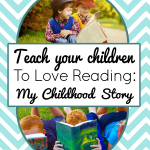
Comments loading...

Writing Nestling

How To Improve Creative Writing (18 Effective Ways)
Embarking on the journey to improve one’s creative writing is like setting sail into an uncharted sea of boundless imagination and linguistic exploration.
Creative writing, a realm where words transform into vivid narratives, characters come to life, and emotions are painted across the pages, is a skill that thrives on constant growth and evolution.
In this guide, we will traverse the landscape of creative writing, delving into its various forms, mastering the craft, and unlocking the secrets to becoming a more skilled and imaginative writer.
Whether you’re a seasoned wordsmith seeking refinement or a budding writer just beginning your literary voyage, the path to improvement is a rich tapestry waiting to be woven, where inspiration knows no bounds, and storytelling becomes an art form.
So, fasten your literary seatbelt, for the journey to enhance your creative writing prowess is about to commence.
Table of Contents
How To Improve Creative Writing
To improve your creative writing skills, follow these steps:
Read Widely:
Read a diverse range of literature, including fiction, non-fiction, poetry, and different genres. This exposure will help you understand various writing styles and techniques.
Write Regularly:
Practice writing consistently. Set aside dedicated time each day or week to write. The more you write, the better you’ll become.
Expand Your Vocabulary:
Work on building a rich vocabulary. Learn new words, their meanings, and how to use them effectively in your writing.
Study Grammar and Punctuation:
A strong grasp of grammar and punctuation is essential. Review the rules and practice to avoid common mistakes.
Create a Writing Routine:
Establish a routine that works for you. Whether it’s early in the morning, late at night, or during lunch breaks, find your optimal writing time.
Outline Your Ideas:
Plan your writing in advance. Create outlines, mind maps, or notes to organize your thoughts before you start writing.
Set Writing Goals:
Define clear goals for your writing projects. Whether it’s completing a short story , novel, or a series of articles, having goals keeps you motivated.
Seek Feedback:
Share your work with peers, writing groups, or mentors. Constructive feedback helps you identify areas for improvement.
Revise and Edit:
Writing is rewriting. After you’ve completed a draft, revise and edit your work for clarity, coherence, and style.
Experiment with Style and Genre:
Don’t be afraid to try different writing styles and genres. Experimentation can help you discover your unique voice.
Read Aloud:
Reading your work aloud can help you catch errors, awkward phrasing, and improve the rhythm of your writing .
Be Observant:
Pay attention to the world around you. Observing people, places, and events can provide inspiration and authenticity to your writing.
Overcome Writer’s Block:
When you’re stuck, try free writing, brainstorming, or taking a break to refresh your creativity.
Stay Inspired:
Surround yourself with inspiring sources, whether it’s art, nature, music, or conversations. Inspiration can fuel your creativity.
Edit and Proofread:
Once you’ve completed your writing, thoroughly edit and proofread it for spelling, grammar, and punctuation errors.
Publish and Share:
Share your work through blogs, social media, or submit it to publications. Public sharing can provide valuable feedback and exposure.
Learn from Feedback:
Take feedback seriously and use it as a tool for improvement. Analyze critiques to enhance your writing skills.
Keep Learning:
Writing is an ongoing journey. Continuously seek to learn and grow as a writer by attending workshops, reading about writing, and experimenting with new techniques.
Remember, improving your creative writing skills takes time and dedication. Patience, persistence, and a willingness to learn are key to becoming a better writer.

Understanding Creative Writing
Understanding creative writing is like embarking on a journey into the boundless realm of imagination, where words become brushstrokes, painting the canvas of your mind with vivid worlds, complex characters, and emotions that dance off the page.
It’s a realm where you’re the architect of reality, bending the rules of ordinary language to conjure extraordinary stories that tickle the senses and stir the soul.
It’s about wielding the power of narrative to shape destinies, provoke thought, and make hearts skip a beat.
In the realm of creative writing, you’re both the magician and the audience, crafting spells with sentences that transport you and your readers to places unknown, unraveling mysteries, and exploring the infinite possibilities of human expression.
Different forms of creative writing
Creative writing encompasses a kaleidoscope of diverse forms, each a unique facet of the literary universe.
There’s the enchanting world of fiction, where novelists weave intricate plots and multidimensional characters that become your companions on thrilling adventures.
Poetry, a mesmerizing tapestry of words, paints vivid imagery and emotion in the concise space of a few lines.
Non-fiction is a realm of truth and authenticity, where writers illuminate reality with memoirs, essays, and journalistic narratives. Screenwriting brings storytelling to life on the silver screen, capturing the hearts and minds of audiences worldwide.
These forms are but a glimpse into the labyrinth of creative writing, where the only limit is the boundaries of one’s imagination.
Elements of creative writing
The elements of creative writing are the building blocks that breathe life into words , transforming them into vibrant stories.
At the heart of any creative work lies the intricate dance of plot, where conflicts and resolutions unfurl like a well-orchestrated symphony.
Characterization paints portraits of individuals, each with their own quirks and depths, making them unforgettable to the reader.
Setting, a crucial backdrop, provides the stage upon which these tales unfold, influencing moods and actions.
Themes thread through the narrative like a hidden river, adding depth and purpose, while style is the unique fingerprint of the author, infusing the work with their voice and perspective.
These elements, in concert, give creative writing its compelling complexity , inviting readers to embark on journeys that resonate with their hearts and minds.
Cultivating a Creative Mindset
Cultivating a creative mindset is akin to tending to the most wondrous of gardens—the garden of the imagination.
It’s about donning the gloves of curiosity and nurturing the seeds of inspiration, coaxing them to bloom into vibrant ideas that dance in the sun-dappled meadow of your thoughts.
In this garden, writer’s block withers under the warmth of persistence, and the weeds of self-doubt are plucked away with unwavering belief in your creative potential.
It’s a sanctuary where meditation and mindfulness are the water and sunlight, ensuring that the fruits of your imagination grow ripe and abundant.
In this verdant oasis, you are the creator and the caretaker, shaping the tapestry of your mind into a masterpiece of creativity that never ceases to blossom with new ideas.
Overcoming writer’s block
Overcoming writer’s block is like finding a hidden passage out of a labyrinth of your own thoughts. It’s the art of breaking free from the stranglehold of a blank page and transforming it into an open canvas.
Sometimes, the most formidable adversary is not the lack of ideas but the daunting prospect of beginning. To conquer this nemesis, one must navigate a myriad of techniques, from freewriting and brainstorming to changing the physical environment, in order to unearth the buried treasure of creativity within.
It’s a mental jigsaw puzzle where pieces of inspiration are scattered, and solving it involves patience, resilience, and sometimes simply allowing your mind to wander until it stumbles upon that elusive spark that will ignite your words.
Overcoming writer’s block isn’t just a battle won; it’s a gateway to the ever-expanding universe of storytelling, waiting to be explored with fervor and imagination.
Developing a writing routine
Developing a writing routine is akin to crafting a symphony out of the everyday humdrum. It’s the art of carving out sacred moments in the day, allowing the muse to speak amid the cacophony of life’s demands.
A writing routine is the scaffold that supports the architecture of creativity, providing the structure and discipline necessary for the magic of storytelling to flourish.
Whether it’s the first light of dawn or the stillness of midnight, these designated hours become the writer’s sanctuary, the place where the mind opens up like a treasure chest of ideas, and words flow like a river.
It’s in these moments of consistency that the craft evolves, enabling writers to hone their skills, unravel narratives, and beckon inspiration at will.
Ultimately, a writing routine is a personal ritual that weaves creativity into the fabric of daily existence, transforming the ordinary into the extraordinary, one word at a time.

Mastering the Craft
Mastering the craft of writing is like harnessing the mystical forces of language to conjure entire universes from the ink of your pen.
It’s a lifelong journey of delving into the labyrinth of words, where each sentence becomes a brushstroke, and every paragraph a brush dipped in the palette of emotions.
It’s an alchemical process, where you transmute raw ideas into literary gold, refining your art through an unending cycle of creation, revision, and relentless pursuit of perfection.
Every metaphor, every plot twist , and every character’s whisper becomes a note in the grand symphony of storytelling, where the crescendo is the moment you realize you’re not just a writer; you’re a sorcerer, weaving spells with every keystroke, capturing the hearts and minds of readers with the magic of your narrative.
Vocabulary and Language
Vocabulary and language are the enchanting threads that weave the tapestry of storytelling. A writer’s arsenal of words is akin to a painter’s palette, each word a unique hue that, when skillfully blended, creates vivid imagery and evokes powerful emotions.
A rich and varied vocabulary is the cornerstone of effective communication, allowing writers to express the nuances of thought and sentiment with precision and eloquence.
Language, on the other hand, is the vessel that carries these words, shaping the tone and rhythm of a narrative.
The beauty of this interplay lies in the writer’s ability to select the perfect word, the ideal phrase, and the most evocative metaphor, thereby sculpting a literary masterpiece that resonates with readers, captivating their senses, and transporting them to worlds of imagination and wonder.
In the realm of creative writing, vocabulary and language are the keys to unlocking the full spectrum of human experience and imagination.
Writing Techniques
Writing techniques are the chisels and brushes of the wordsmith, essential tools that sculpt and paint the narrative.
They encompass a spectrum of strategies that shape the flow and impact of a piece of writing. “Show, don’t tell” is the art of letting readers experience a story through sensory details and actions, fostering a deeper connection.
Crafting authentic dialogue breathes life into characters, allowing them to converse and reveal their personalities naturally.
The choice of point of view, whether first person, third person, or omniscient, defines the lens through which the reader perceives the tale.
These techniques, like a craftsman’s skills, enable writers to craft stories with finesse, immersing readers in vivid landscapes, relatable characters, and intricate narratives, making the written word a portal to realms of imagination and emotion.
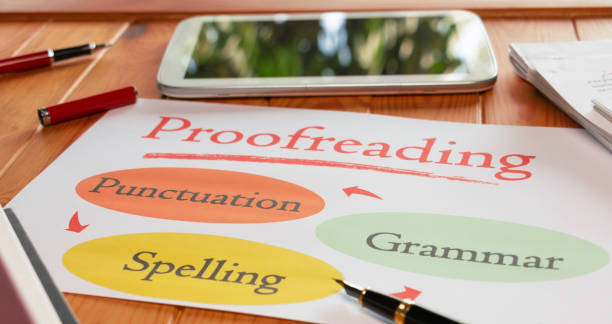
Reading as a Writer
Reading as a writer is akin to peering behind the scenes of a magnificent stage production to witness the magic of storytelling in its purest form.
It’s a journey where the reader transforms into a literary detective, dissecting the prose, unraveling the plot, and examining the intricate brushstrokes of the author’s craft.
With each turn of the page, a writer learns the secret language of pacing, character development, and dialogue that is whispered through the text.
It’s an immersive masterclass that teaches the orchestration of tension, the symphony of foreshadowing, and the art of unveiling mysteries.
In this dual role of reader and writer, one discovers that every book is not just an escape but an invitation to the backstage, where the invisible threads of narrative manipulation are spun, inspiring the storyteller within to reach new heights and craft unforgettable tales.
Analyzing literature
Analyzing literature is akin to embarking on an archeological expedition into the layers of human expression and experience.
It’s a fascinating journey where each page holds the whispers of the past and the echoes of the author’s soul.
As one delves into the intricacies of a literary work, it’s like decoding a cryptic message, revealing the hidden treasures of symbolism, theme, and narrative structure.
Every word, sentence, and character becomes a clue in a grand puzzle, inviting you to explore the profound depths of the human psyche and society.
In the process of literary analysis, readers not only unearth the intellectual and emotional nuances of a text but also gain a profound appreciation for the artistry of the written word, for it is in these revelations that the alchemy of storytelling is unveiled, proving that literature is not merely ink on paper, but a mirror reflecting the intricate mosaic of human existence.

Learning from other authors
Learning from other authors is akin to a masterclass in the art of storytelling. It’s an exquisite journey of exploration, where you walk in the footsteps of literary giants, witnessing their genius unfold across the pages of their works.
These authors, like mentors from afar, offer invaluable lessons in character development, plot structure, and the delicate dance of language.
With each book you read, you glean insights into the diverse ways authors craft their narratives, be it the lyrical prose of one or the gripping dialogue of another.
Their stories serve as templates, guiding you in understanding the subtleties of storytelling, nurturing your creative instincts, and sparking that inner fire of inspiration.
In the pages of their books, you find not just tales, but the wisdom of those who have paved the way, ready to illuminate your path as you embark on your own journey of writing.
Building a personal library
Building a personal library is like assembling a treasury of knowledge, imagination, and soul. Each book, lovingly arranged on the shelves, is a passport to different worlds, eras, and minds.
It’s a sanctuary where you can escape the mundane and embark on an endless odyssey of exploration, enlightenment, and enchantment. Your personal library becomes a reflection of your intellectual curiosity and passions, a curated collection of stories and wisdom that have resonated with you.
Beyond the tangible beauty of bound pages, it’s a space where you can seek refuge, inspiration, and solace.
In this haven, books aren’t just inanimate objects; they are the keepers of dreams, mentors, and the compass that guides you on your own creative journey, whispering their stories and secrets, ready to be discovered anew each time you open their pages.
Research and Fact-Checking
Research and fact-checking are the unsung heroes of the writer’s craft, the secret agents who ensure that the tapestry of fiction and the canvas of non-fiction remain unblemished by errors.
Like intrepid explorers, writers embark on quests for knowledge, sifting through archives, traversing the corridors of history, and plumbing the depths of the digital ocean.
Fact-checking is the lighthouse that guards against the treacherous cliffs of misinformation, ensuring that the narratives we weave are anchored in truth.
It’s not just a scholarly pursuit; it’s the alchemy that transforms a story from mere entertainment into a portal to the worlds, cultures, and ideas it seeks to represent.
In the realm of research, writers become detectives, unearthing secrets, unmasking mysteries, and painting the scenery with the vivid strokes of authenticity.
Without this duo, the magic of storytelling would lose its luster, and readers would be adrift in a sea of uncertainty.
Importance of accuracy in creative writing
The importance of accuracy in creative writing cannot be overstated, for it is the cornerstone upon which the credibility and resonance of a narrative are built.
While creativity allows us to conjure imaginary realms and characters, these creations must find their roots in a foundation of truth.
Factual accuracy in the details of a story, whether it’s historical, scientific, or cultural, lends authenticity to the narrative, enriching the reader’s experience by making the fictional world feel tangible and relatable.
Inaccuracies can disrupt the suspension of disbelief, pulling readers out of the story, and eroding the trust they place in the author.
Moreover, for works that explore complex themes or socio-cultural issues, accuracy is paramount in promoting understanding and empathy.
By upholding the value of accuracy, creative writing can reach its full potential, becoming a powerful vessel for both entertainment and enlightenment.

Finding Your Voice
Finding your voice in the vast wilderness of creative expression is like discovering a hidden gem within your own soul.
It’s not just about words; it’s the symphony of your thoughts, your emotions, and the unique cadence of your experiences coming to life on the page. Your voice is the compass that guides you through the labyrinth of creativity, allowing you to navigate the realms of storytelling with authenticity.
It’s a fingerprint that distinguishes your work from the rest, making your narratives resonate with a singular, unforgettable resonance.
Finding your voice is not just a revelation; it’s a journey of self-discovery, an ongoing exploration of who you are and how you want to connect with the world through the magic of words.
It’s the moment when you realize that your voice, unlike any other, is the key to unlocking the hearts and minds of your readers, inviting them to explore the world as you see it and share in the emotions that define your unique narrative.
Personal style and uniqueness
Personal style and uniqueness in writing are the vibrant colors that distinguish an artist’s canvas from all others.
Your writing style is the echo of your personality , your perspective, and the experiences that shape you. It’s the idiosyncratic rhythm of your sentences, the selection of words that resonate with your soul, and the peculiar nuances that define your narrative fingerprint.
Embracing your uniqueness is not a departure from the norm but a celebration of individuality, an affirmation that your voice is unlike any other.
In a world filled with words, it’s your personal style that makes your work stand out, inviting readers to explore the world through your eyes and experience the emotions that pulse through your stories.
Your style is your signature, and your uniqueness is the spark that ignites the literary world, reminding us that in the realm of creativity, diversity is the catalyst for innovation and the source of endless inspiration.
Authenticity in storytelling
Authenticity in storytelling is the golden thread that weaves a powerful connection between the writer and the reader.
It’s the unwavering commitment to truth, not in the factual sense, but in the emotional and human sense. Authentic storytelling dares to venture into the raw, unvarnished corners of the human experience, revealing vulnerability, joys, struggles, and complexities with unapologetic honesty.
It acknowledges the imperfections of characters, the messiness of life, and the ambiguity of morality.
Authenticity in storytelling is the bridge that allows readers to see themselves in the characters and situations, to empathize, to confront their own truths, and to resonate with the essence of the narrative.
It’s a reminder that, in the world of storytelling, the most profound impact is often not achieved through escapism but through a mirror reflecting the truth of our shared humanity, inviting us to explore, understand, and embrace the beautifully imperfect mosaic of human existence.
Overcoming Challenges
Overcoming challenges is akin to harnessing the fiery spirit of a phoenix, rising from the ashes of adversity with newfound strength and resilience.
It’s the grand adventure of our lives, where obstacles are not roadblocks but stepping stones towards personal growth and transformation.
Challenges are the litmus test of character, the forge where determination is tempered, and where the human spirit finds its true mettle.
In the face of these trials, we discover untapped reserves of courage, creativity, and perseverance that we never knew existed.
Like intrepid explorers charting uncharted territories, we boldly face the unknown, seeking not just victory but self-discovery, for it is in the crucible of challenges that our true potential is revealed, and we emerge as the heroes of our own stories.
Publishing and Sharing Your Work
Publishing and sharing your work is like setting a fleet of paper boats adrift on the vast sea of human connection.
It’s the culmination of the creative journey, where words born in the depths of your imagination finally take flight, finding their way into the hearts and minds of readers around the world.
It’s not just about self-expression; it’s the bridge that unites creators with an audience eager to embark on the emotional and intellectual voyages they’ve crafted.
Sharing your work is an act of courage and vulnerability, inviting both praise and criticism, but it’s also an affirmation that your voice is worthy of being heard.
It’s the act of extending a hand to others, saying, “Come, join me on this journey,” and allowing your stories to become a part of the tapestry of the human experience.
In the realm of publishing and sharing, you become a storyteller not just for yourself but for the world, weaving connections, igniting conversations, and leaving an indelible mark on the shared narrative of humanity.

Traditional vs. self-publishing
The choice between traditional and self-publishing is a crossroads that writers often face, each path offering its own set of opportunities and challenges.
Traditional publishing, akin to the majestic gates of a literary castle, can provide the author with the validation and resources of an established publishing house, offering professional editing, cover design, and broad distribution networks.
It opens doors to bookstores and literary awards, but it also demands patience and perseverance in the face of stringent gatekeepers. Self-publishing, on the other hand, is the democratization of literature, an open road that allows authors to take the reins of their creative destiny.
It offers control and speed of publication but requires authors to take on multiple roles, from editing to marketing.
Ultimately, the decision hinges on individual goals and preferences, as each path holds the promise of sharing stories with the world, whether under the watchful eye of a traditional publisher or the entrepreneurial spirit of self-publishing.
Continuing Education
Continuing education is the compass that keeps the writer’s journey ever-advancing. It’s the symphony of growth in a world that constantly whispers new stories and knowledge.
Imagine it as an uncharted library, where each book holds the key to unlock a new realm of understanding, and each workshop or course is an invitation to dance with different writing techniques.
It’s not just about honing existing skills; it’s about unfurling new horizons and uncovering hidden treasures in the treasure chest of literary prowess.
Continuing education is the echo of the writer’s heartbeat, a reminder that the world of words is boundless and ever-evolving, and that within its embrace, the writer can continue to explore, learn, and craft stories that leave an indelible mark on the literary landscape.
Frequently Asked Questions (FAQ) about How To Improve Creative Writing
What is creative writing, and why is it important to improve this skill.
Creative writing is the art of crafting original and imaginative stories , poems, or prose. It’s important to improve this skill because it not only enhances your ability to express yourself but also unlocks the door to a world of creativity, enabling you to engage and captivate readers.
How can I overcome writer’s block and boost my creativity?
Overcoming writer’s block can be achieved through various techniques like free writing, mind mapping, or changing your writing environment. To boost creativity, consider practicing mindfulness, exploring new experiences, and cultivating a daily writing routine.
What are some effective strategies for improving my vocabulary and language skills?
Expanding your vocabulary can be done by reading widely, using a thesaurus, and playing word games. To enhance language skills, study grammar and syntax, experiment with different writing styles, and immerse yourself in literature.
What are some common writing techniques to improve the quality of my creative writing?
Common writing techniques include “show, don’t tell,” crafting compelling dialogue, and mastering point of view. These techniques help to make your storytelling more engaging and immersive.
How can I find my unique voice as a writer?
Finding your unique voice involves experimenting with different writing styles, embracing authenticity, and understanding that your individual perspective is your greatest asset. It’s about being true to yourself and your experiences.
What’s the importance of reading as a writer, and how can I analyze literature effectively?
Reading exposes you to different writing styles and genres, helping you learn and grow as a writer. Effective analysis of literature involves examining themes, characters, and symbolism, and considering the author’s use of language and narrative structure.
What are the differences between traditional publishing and self-publishing, and how do I decide which is right for me?
Traditional publishing involves working with established publishing houses, while self-publishing allows you to independently release your work. The choice depends on your goals, the level of control you want, and your willingness to handle aspects like marketing and distribution.
How can I ensure the accuracy of my work, especially when writing about real-world facts and details?
To ensure accuracy, research extensively using reliable sources, fact-check rigorously, and consider seeking feedback from experts in the field you’re writing about.
What’s the role of continuing education in improving creative writing, and where can I find resources for it?
Continuing education helps you stay updated with the latest writing trends and hone your skills . You can find resources through writing workshops, online courses, writing groups, and literary events.
How do I deal with writer’s rejection and criticism constructively, and stay motivated in my writing journey?
Dealing with rejection and criticism involves developing resilience, learning from feedback, and keeping your passion for writing alive. Staying motivated can be achieved by setting goals, celebrating small wins, and surrounding yourself with a supportive writing community.
In the realm of creative writing, the journey to improvement is an endless odyssey, an ever-evolving expedition into the limitless depths of imagination and language.
It’s a path that weaves through the intricacies of plot, character, and style, as well as the nuances of authenticity and self-expression. Whether you are a seasoned wordsmith or a budding writer, the pursuit of creative excellence is a lifelong commitment to self-discovery, growth, and storytelling.
As you navigate the labyrinth of writer’s block, craft your unique voice, and refine your skills, remember that creative writing is not merely a craft; it’s a journey of self-expression, a gateway to new worlds, and a conduit for shared experiences.
So, pen in hand and heart afire, continue to embark on this voyage, for it is through the continuous exploration of your own creative depths that you will not only improve your writing but leave an indelible mark on the world of literature.
Your story is waiting to be told, and the pen is your magic wand, the world your canvas.
Happy writing !
Related Posts:
- What Does Freeform Mean In Fanfiction?
- How To Improve Grammar Skills (11 Important Steps)
- How To Write A French Accent (10 Important Steps You…
- How To Improve Descriptive Writing (12 Best Ways You…
- How To Set Smart Writing Goals For 2024
- How To Improve Literacy Writing Skills (14 Best Tips)
Similar Posts
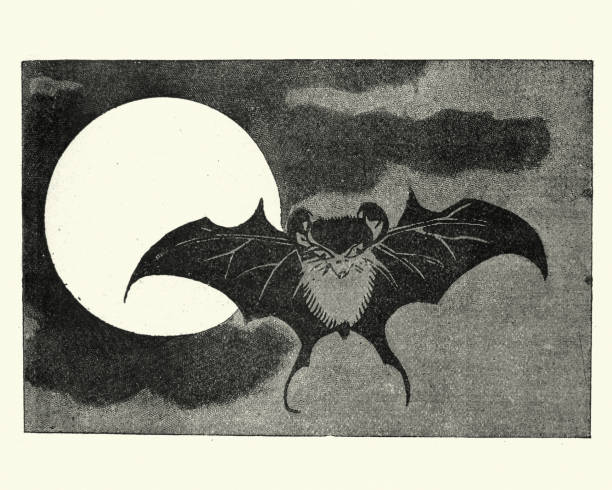
How To Write Vampire Novels (12 Best Ways)
In the mystical realm of literature, few genres possess the timeless allure and enduring fascination as that of vampire novels. Crafting a narrative that immerses readers in the nocturnal embrace of immortal beings requires a delicate dance between the shadows of folklore and the innovative strokes of contemporary storytelling. In this guide, we embark on…

How To Describe Fight Scenes In Writing (14 Best Tips)
Describing fight scenes in writing is an art form that transcends the mere clash of swords or fists; it is the alchemical fusion of words that can electrify the imagination and captivate the reader’s senses. Whether it’s the heart-pounding duel of warriors, the gritty back-alley brawl, or a high-octane showdown in the midst of an…

How To Describe Night In Writing (10 Best Ways)
In the realm of storytelling, the night is a canvas painted with shades of mystery, romance, and introspection. Capturing the essence of the nocturnal world through the art of description is a literary endeavor that transcends mere depiction; it is an invitation for readers to immerse themselves in the atmospheric allure of darkness. Describing night…
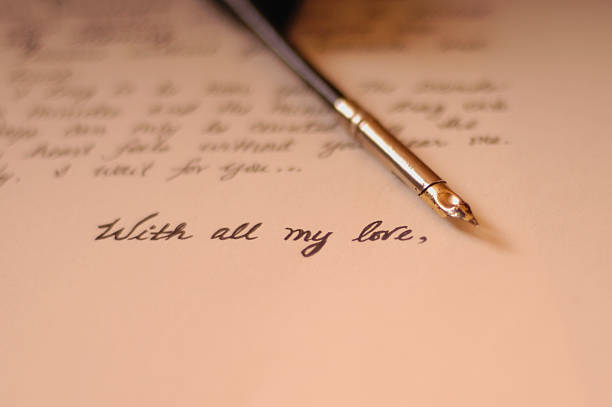
How To Write A Manifestation For Love (12 Best Ways)
The pursuit of love, with all its complexity and beauty, has captivated the hearts and minds of humans throughout history. While the path to finding and nurturing love often appears mysterious and elusive, many believe in the incredible power of manifestation to invite love into their lives. “How to Write Manifestation for Love” is a…

How To Describe A Train In Writing (12 Important Steps)
Introducing the art of describing a train in writing is akin to unveiling a portal to a world of captivating journeys, powerful locomotives, and the rhythmic heartbeat of rail travel. Trains, with their imposing presence and iconic place in the annals of transportation, offer writers a canvas of inspiration unlike any other. In this exploration,…

How To Overcome Laziness In Writing (15 Best Ways)
Embarking on the writer’s journey is an odyssey of passion, creativity, and self-discovery. Yet, the formidable specter of laziness can cast shadows on this path, hindering the flow of ideas and stalling the progress of even the most dedicated wordsmiths. In this exploration of “How to Overcome Laziness in Writing,” we delve into the intricacies…
- Features for Creative Writers
- Features for Work
- Features for Higher Education
- Features for Teachers
- Features for Non-Native Speakers
- Learn Blog Grammar Guide Community Events FAQ
- Grammar Guide
Creative Writing Tips for Beginners: 10 Top Tips

Hannah Yang
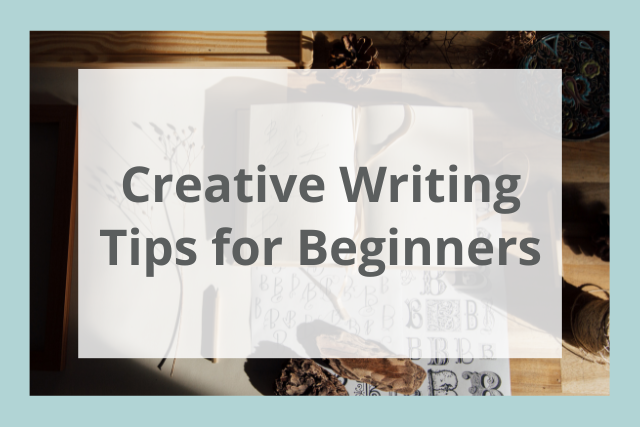
Creative writing can be a very fulfilling hobby.
Writing can help you explore deep questions, use your imagination, and express your thoughts and feelings in a healthy way.
If you want to learn creative writing, you’ve come to the right place. Read on to learn our top ten creative writing tips to help you get started.
How to Write Creatively
10 creative writing tips for beginners, how to get better at creative writing, where to find creative writing help.
Anyone can learn creative writing—all you need is a pen and paper, or your writing software of choice.
Once you’ve got your tools ready, it’s time to think of a story idea. You can draw inspiration from your own life, newspaper headlines, songs you like, or anything else around you.
If you don’t have any story ideas in mind, you can also try starting with a prompt. Here are a few creative writing prompts you can choose from:
- Write about someone with a dangerous secret
- Write a scene set at your favorite restaurant
- Write a story about someone who wakes up with no memories, except for a single name
- Write a story from the perspective of someone who isn’t human
- Complete the sentence: “It was a completely normal Saturday except for…”
Pick up your pen, choose your favorite prompt, and start writing!
If you’re new to creative writing, here are ten fiction writing tips that you can try.
Tip 1: Read Widely
It’s hard to become a great musician without having heard a lot of great music.
The same is true for writing. Reading a lot of books is a great way to get inspired and to learn more about the anatomy of a story.
It’s important to read in whatever genre you want so you can understand the conventions of that genre. If you’re writing a fantasy story, for example, you should familiarize yourself with popular fantasy novels and short stories so you know what readers expect.
On the other hand, it’s just as important to read a diverse variety of books. Exposing yourself to lots of genres and authors can help you learn about different writing styles and techniques.
Tip 2: Experiment With Different Formats and Points of View
Creative writing can involve countless different formats. You can write a story that looks like a diary entry, a song, or a Charles Dickens novel.
Maybe you want to write a story in the form of a series of instructions to the reader, like a cooking recipe or a how-to manual.
Or maybe you want to write a story in the form of a confession from one character to another, in a mix of first-person and second-person POV.
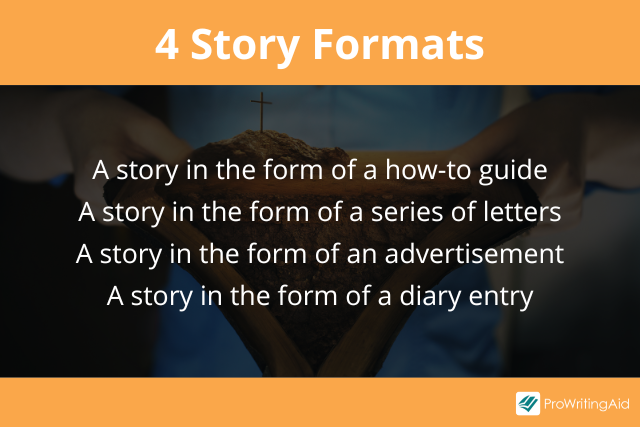
Try out different styles, even ones that don’t feel like your usual writing style. Doing this experimentation early on in your creative writing journey can help you find your own voice and figure out what works best for you.
Tip 3: Take Inspiration From Many Sources
No story is written in a vacuum. Every artist takes inspiration from other works of art, and you shouldn’t feel bad about writing a story that’s inspired by your favorite book or movie.
At the same time, though, it’s important not to write a story that actually plagiarizes an existing one. Directly copying the work of other creative writers is both unethical and illegal. Plus, it’s much less fun than writing your own stories.
A good rule of thumb if you’re looking for ideas is to take inspiration from many sources rather than a single one.
For example, maybe you like the sarcastic humor of one book, the sweet romance arc of another book, and the Gothic setting of your favorite TV show. When you merge those three things together, you’ll most likely create a story that feels unique and original, even though you took inspiration from existing stories.
Tip 4: Show, Don’t Tell
The phrase “Show, don’t tell” is a popular piece of writing advice that almost every writer has heard before.
Essentially, “show, don’t tell” means that you should immerse the reader in your story through sensory details and descriptive language instead of simply summarizing the story to them.

For example, you could tell someone, “My sister’s room is messy.” That sentence conveys the facts, but the person you’re talking to probably wouldn’t be able to picture your sister’s room in their head.
On the other hand, you could say, “My sister basically uses the floor of her room as a giant laundry hamper—it’s covered with so many sweaters and scarves that I don’t even remember what color her carpet is.” This sentence gives your listener a much more specific idea of what your sister’s room looks like.
Tip 5: Write With Intention
Many newer writers put down words on the page based on what comes to mind first.
For example, let’s say you’re trying to describe a character. A new writer might note down whatever details they visualize right away, like the color of the character’s hair or the type of clothes they’re wearing.
This is a great way to write when you’re just starting out, but if you want to improve your skills, it’s important to learn how to write with intention.
Try to get in the habit of asking yourself: What details does the reader need to know and why? For example, what aspects of this character’s hair color and outfit could tell the reader something deeper about the character’s personality and motivations?
It’s also important to figure out what you want to convey emotionally. What do you want your reader to feel? Excited? Creeped out? Hopeful?
For example, you might describe a sunset as “blood-red” if you want the reader to feel creeped out, or as “glowing and bright” if you want the reader to feel hopeful.
Tip 6: Learn How to Edit
No first draft is perfect, even if you’re a seasoned writer.
Learning how to edit your work is just as important as learning how to write on a blank page. That’s how you can create a creative work you feel proud of.
One helpful tip is to try reading your work out loud. That can often help you spot places where your prose doesn’t flow.
AI-powered grammar checkers like ProWritingAid can also help you identify weaknesses in your prose and learn how to strengthen them. You can catch your grammatical mistakes, avoid unnecessary repetition, choose more evocative words, and more with our powerful tool.
Tip 7: Practice Overcoming Writer’s Block
At some point in their writing journey, every writer has reached a point where writing doesn’t feel fun anymore.
There are lots of different causes for writer’s block. You might be unsure what to write, afraid of failing, or simply burned out from writing too much.
It’s important to find ways to overcome creative blocks, so you don’t end up putting down your pen for good.
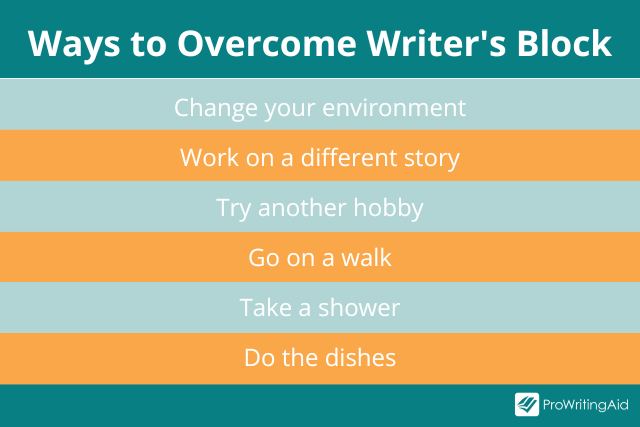
One useful technique is to change your environment. If you normally write at home, try writing in a coffee shop or in your local library.
Another technique is to try a different activity for a while. Go for a walk, take a shower, do your dishes, or try another hobby. Before long, you’ll find yourself wanting to write again.
Perhaps the most underrated method is to simply take a break from writing. Give yourself permission to stop for a while—it’s always okay to take a step back.
Tip 8: Study Writing Craft
Many new writers falsely believe that writing can’t be taught; you’re either good at it or you’re not.
But the truth is that creative writing is a craft, just like woodworking, oil painting, or ballet. You wouldn’t expect anyone to be naturally good at ballet without years of training, so why is writing any different?
One way to learn new creative writing techniques is by reading craft books . Some great books to start with include On Writing by Stephen King, Story Genius by Lisa Cron, and The Creative Writer’s Handbook by Philip K. Jason.
These books can help you learn the basics of how to write well. For example, you can learn how to construct high-quality sentences, how to avoid passive voice, and how to use poetic devices.
The more you learn, the more powerful your writing will become.
Tip 9: Invent Your Own Process
When you’re just starting out as a writer, it can be tempting to copy someone else’s writing process.
Maybe you heard an interview with a bestselling author who said you have to outline a story before you draft it. Or maybe you found out your favorite author writes 1,000 words every day, and now you think you have to write 1,000 words every day too.
But it’s important to remember that no two writers have the exact same writing process. What works best for someone else might not work for you.
There’s no right or wrong way to be a creative writer. Your job is to find a writing process that makes you feel fulfilled, productive, and inspired—and if your favorite writers don’t write the same way, that’s perfectly okay.
Tip 10: Don’t Aim for Perfection
There’s a good chance your writing is never going to be perfect. Mine definitely isn’t!
Remember that writing is about the process, not the product. Even if the final product is never perfect, the process has helped you grow as a writer—and hopefully, it’s also been a lot of fun.
You should decide what your main goal for writing is. Maybe it’s writing stories you might be able to publish someday. Maybe it’s telling stories about characters you rarely see in existing stories. Maybe it’s simply a fun new hobby.
Whatever your goal is, remember that you’re already on your way to achieving it. You don’t need to aim for perfection in order to succeed.
There’s no secret to getting better at creative writing. The process is very simple—it just takes a lot of hard work.
All you have to do is follow this two-step process:
- Step 1: Write consistently
- Step 2: Ask for feedback on your writing
The first step is fairly self-explanatory. Whenever you’re learning a new skill, it’s important to practice it. The more you write, the more you’ll learn about how to be a successful creative writer.
The second step is the one that receives more pushback from writers because it requires a lot of courage and vulnerability, but it’s just as important as the first step.
If you don’t get feedback, you could write every day and still never improve. That’s because most people can’t spot the weaknesses in their own stories.
You can ask for feedback from your friends, family, or writing groups. They can help you see your work from a different perspective and identify areas for improvement.
As long as you write consistently and listen to the feedback on the work you’re producing, you’ll be able to create a positive cycle where you create better and better stories over time.
If you want to improve your creative writing skills, there are numerous resources you can use to find help.
One great method is to join a writing community where you can share your work and get feedback from other writers.
You can look for free critique groups online, on websites such as Scribophile and Critique Circle. Or you can start your own group with your friends.
You can also consider joining a local writing class or retreat. Many schools and community centers offer classes and workshops you can join.
Another option is to use creative writing tools. ProWritingAid can give you AI-powered suggestions about how to improve your prose and make your writing shine.
Good luck, and happy writing!

Be confident about grammar
Check every email, essay, or story for grammar mistakes. Fix them before you press send.
Hannah Yang is a speculative fiction writer who writes about all things strange and surreal. Her work has appeared in Analog Science Fiction, Apex Magazine, The Dark, and elsewhere, and two of her stories have been finalists for the Locus Award. Her favorite hobbies include watercolor painting, playing guitar, and rock climbing. You can follow her work on hannahyang.com, or subscribe to her newsletter for publication updates.
Get started with ProWritingAid
Drop us a line or let's stay in touch via :
What Is Creative Writing? Types, Techniques, and Tips
by Kaelyn Barron | 5 comments

Even if you’re not a big reader of fiction, you’ve more than likely encountered creative writing—or at least, the outcomes of creative writing—at some point. In fact, you can thank creative writing for your favorite films, songs, musicals, and much more.
But what exactly makes writing “creative?”
Simply put, creative writing is any writing that falls outside of technical, journalistic, or academic writing.
You can think of it as classic storytelling. It can be written with a number of intentions: to entertain us, comfort us, or teach us a lesson; most importantly, good creative writing speaks to our shared human experience. It shouldn’t just tell us something—it should make us feel something new.
Creative Writing: An Overview
We’re all familiar with school-required “creative writing exercises.” Maybe you had a traumatizing experience when your eighth grade teacher forced you to write a story and read it aloud for the class (no? just me?).
Or maybe you think creative writing is reserved for the artsy free spirits who churn out novels in coffee shops or on sunny farms in Tuscany.
In reality, creative writing is much more than something for your great aunt to scoff at when discussing your major at Thanksgiving dinner.
In this post, we’ll break down creative writing and explain everything you need to know, including:
• Types and examples • Techniques • Who should practice creative writing? • Creative writing exercises to get started
Types of Creative Writing
Examples of creative writing can be found pretty much everywhere. Some forms that you’re probably familiar with and already enjoy include:
• Fiction (of every genre, from sci-fi to historical dramas to romances ) • Film and television scripts • Songs • Poetry • Plays • Vignettes
But creative writing doesn’t have to be limited to fictitious content. It can also include:
• Personal essays • Memoirs • Journals and diaries • Letters
As we can see from this list, some works of nonfiction can also constitute creative writing. After all, many books and films tell stories of real people and real events.
Take, for example, the 2010 film The King’s Speech . The film tells the story of real people and real events, but the script can be considered creative writing as much as the script for Jurassic Park, because it charges historical events with emotion and makes the audience feel invested in the characters.
Writing about your own life is no different. Journals and diaries—when they contain personal thoughts, experiences, or emotions—can also constitute creative writing. Even letters can be included, when they do more than stating facts (not just “today I went to the store” or “today it rained.”)
Creative writing doesn’t require you to make up names or inject unicorns into your manuscript. It just requires a bit of storytelling through more imaginative techniques.
Techniques Used in Creative Writing
You’ll want to make your story one that resonates with people, since creative writing is ultimately telling stories about the human experience. To achieve this, you can apply some of these techniques and literary devices:
Including conversations between characters can help bring them to life, while also moving the plot along without relying solely on the narrator.
This was a favorite technique of Ernest Hemingway. Famous for his simple, straightforward style, he let his characters do most of the talking, which also helped to make them more accessible and relatable.
One great example of character development through dialogue can be found in Jane Austen’s Pride and Prejudice :
“A single man of large fortune; four or five thousand a year. What a fine thing for our girls!”
“How so? How can it affect them?”
“My dear Mr. Bennet,” replied his wife, “how can you be so tiresome! You must know that I am thinking of his marrying one of them.”
“Is that his design in settling here?”
“Design! Nonsense, how can you talk so! But it is very likely that he may fall in love with one of them, and therefore you must visit him as soon as he comes.”
Without Austen telling us anything directly, we as readers can get a feel for Mr. and Mrs. Bennet, their relationship, and what they each prioritize.
Good dialogue should sound realistic, but also carry a purpose so that the story can progress in a natural way.
Metaphors and similes
Alternatively, writers can choose to pack their prose with imaginative language, offering the reader vivid descriptions to evoke emotion. This is typical in many forms of creative writing, and it is often achieved through literary devices, like similes and metaphors.
For example, in “A Red, Red Rose,” Robert Burns writes:
“O my Love is like a red, red rose That’s newly sprung in June; O my Love is like the melody That’s sweetly played in tune.”
Similes create images for the reader by using comparisons, rather than simple adjectives. (What kind of poem would the example above be if Burns just told us his love is “beautiful”?)
While similes can help us to imagine a scene more vividly, they can also be open to interpretation. Because similes rely on association, one word might carry different connotations for different readers (this may very well be the author’s intention).
Metaphors, instead, draw parallels and can take up a few lines, like this famous excerpt from Romeo and Juliet :
“But soft, what light through yonder window breaks? It is the east, and Juliet is the sun!”
Or sometimes, metaphors can be recurring elements in a text, like in Paulo Coelho’s The Alchemist , where the desert setting serves as a metaphor for life itself.
Good metaphors can serve as a shortcut to understanding a text because they can convey something complex in terms that are more concise, yet universal. For this reason, metaphors can add extra depth to your story.
Point of view
Deciding which point of view you want to tell your story from is an essential step because it will determine the story’s voice.
Fitzgerald’s The Great Gatsby , for example, is written in the first-person limited perspective—but imagine how different the story would be if Daisy were narrating instead of Nick! Changing the point of view can change the entire story.
Anecdotes are like small stories within the big story. When used in creative writing, they offer readers a chance to learn more about a character without simply stating it directly. They can be used to evoke empathy, to entertain, to teach a lesson, or simply to reveal other dimensions of a character.
We can turn to Mary Shelley’s Frankenstein for one such example:
“Justine, you may remember, was a great favorite of yours; and I recollect you once remarked, that if you were in an ill-humor, one glance from Justine could dissipate it, for the same reason that Ariosto gives concerning the beauty of Angelica—she looked so frank-hearted and happy. My aunt conceived a great attachment for her, by which she was induced to give her an education superior to that which she had first intended.”
This anecdote, delivered by Elizabeth to Victor Frankenstein, provides background for Justine’s character and reveals the history between the characters’ families. By testifying to Justine’s “frank-hearted and happy” nature, readers are led to sympathize with the character even more, especially in light of her tragic fate (she confesses to a crime she did not commit and is promptly executed).
Making proper use of the right techniques can make any writing better, but it’s especially important in creative writing if you want a well-developed story that resonates with readers and doesn’t feel forced.
Who Should Practice Creative Writing?
Now that we’ve gone over what exactly creative writing is and the techniques used to compose it, you might be wondering what exactly you can do with this information.
Because creative writing isn’t just for English majors and best-selling authors. We all have stories to tell, and even if you never show your work to anyone, practicing creative writing can be beneficial to just about everyone.
Aside from proven therapeutic benefits , creative writing exercises can help to:
Build your imagination and creativity: By stimulating the parts of your brain responsible for creativity, you’ll train your mind to think “outside the box” to find new, innovative solutions.
Organize your thoughts: Developing a plot requires the ability to think logically, since you’ll want to make the underlying point clear. This kind of thinking can of course be helpful in the workplace and many other parts of your life.
Grow your confidence: Putting your thoughts down on paper takes guts. Expressing yourself through writing and seeing your ideas translated to words can help build self-confidence.
Improve your communication skills : By refining your writing skills, you’ll be able to communicate more effectively, both in speech and on paper.
Give your mind a break: Like reading, creative writing offers the perfect escape from everyday life. You’re in complete control of everything that happens, so let yourself go and see the wonderful things your mind builds when you set it free.
How Can You Get Started?
If you’re new to creative writing, there are a number of ways to get started. Keeping a diary to write down your thoughts and ideas can be extremely helpful. Or, check out our many great writing prompts to get your creativity flowing!
What do you love to write about? Feel free to share with us in the comments below!
If you enjoyed this post, you might also like:
- 70 Creative Writing Prompts to Inspire You to Write
- 10 Creative Writing Exercises for Beginners and Writers
- How Writing Prompts Can Boost Your Creative Writing Skills
- Fast and Loose: 3 Ways Freewriting Will Upgrade Your Creative Career
As a blog writer for TCK Publishing, Kaelyn loves crafting fun and helpful content for writers, readers, and creative minds alike. She has a degree in International Affairs with a minor in Italian Studies, but her true passion has always been writing. Working remotely allows her to do even more of the things she loves, like traveling, cooking, and spending time with her family.
I see during my searches of creating writing that the term, snippet is not used. Why is this, as it is a very entertaining concept, as I enclose an example.
The small boy asks his grandpa, “Grand daddy, what will you do if you ever catch the last beaver in th e world?”
“Well son, that will be the saddest day that I ever could imagine.”
“You know son, that almost happened a couple hundred years or so ago. Money was hard to come by and rich people over in Europe wanted all the beaver they could buy from men that were willing to risk their lives in the new America that had a seemingly endless supply of the rich furred animals.”
The old man said, “the only thing that stopped the beaver from being totally wiped out was the silk worm.”
That didn’t stop the boy from his original line of questions about beavers, he could care less about any worms. After all he was a trapper, in his own mind.
The boy, stopped his Grandpa again, in the manner that young kids do, that are impatient for another answer. “Granddaddy, how long have you been trapping beavers?”
“Well son, let me see; I started just about the time I was your age I think.”
“How many have you caught,” came next.
“There’s no telling, maybe a truck load, maybe two.”
The boys next words took the old trapper back a step or two when the boy said, “Granddaddy do we have to catch them all, or can we leave me a few so I can take my son, someday, and show and tell him what you’ve taught me.”
Interesting
Thanks, hope you enjoyed the post!
Great article. I appreciate reading even more now. Understanding these things has opened a new door for me. I mostly wrote for my own entertainment, but what I have learned here, I am inspired to give it a try on a bigger scale.
Thank you for the inspiration.
You’re very welcome Cindy, and thank you for the kind words! I’m so glad you enjoyed the article :) Happy writing!

Learn More About
- Fiction (223)
- Nonfiction (71)
- Blogging (47)
- Book Promotion (29)
- How to Get Reviews (9)
- Audiobooks (17)
- Book Design (11)
- Ebook Publishing (13)
- Hybrid Publishing (8)
- Print Publishing (9)
- Self Publishing (70)
- Traditional Publishing (53)
- How to Find an Editor (11)
- Fitness (4)
- Mindfulness and Meditation (7)
- Miscellaneous (117)
- New Releases (17)
- Career Development (73)
- Online Courses (46)
- Productivity (45)
- Personal Finance (21)
- Podcast (179)
- Poetry Awards Contest (2)
- Publishing News (8)
- Readers Choice Awards (5)
- Reading Tips (145)
- Software (18)
- Technology (18)
- Contests (4)
- Grammar (64)
- Word Choice (64)
- Writing a Book (64)
- Writing Fiction (195)
- Writing Nonfiction (79)

- Join for Free

Top 10 Best Creative writing tips for beginners
- by Domestika @domestika
Starting out in creative writing can be a daunting task, with many writers struggling to know where to begin and how to improve their skills. However, there are plenty of exercises that can help you develop your writing abilities and bring your ideas to life on the page. With practice and persistence, you can turn your thoughts and imagination into beautiful works of art through creative writing.
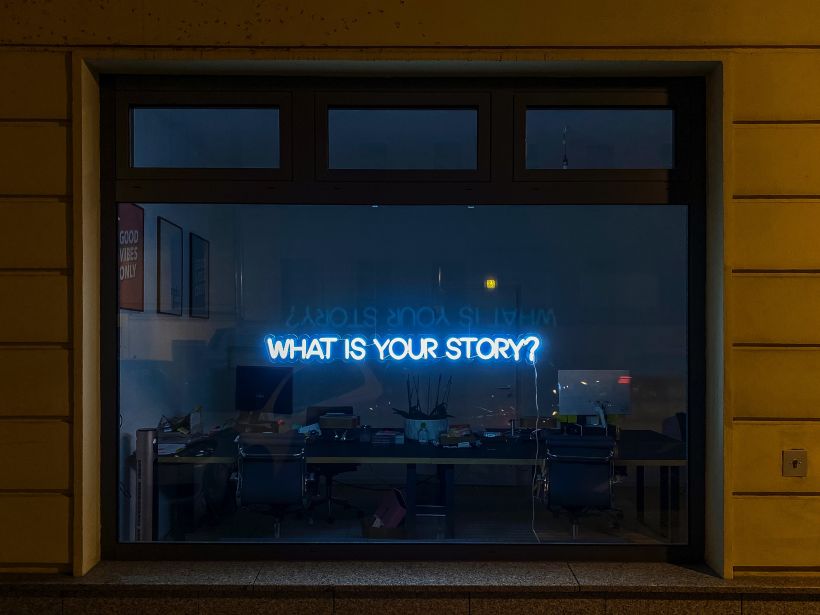
These tips will help you to become a much better creative writer:
- Find the Best Environment: Everyone has different writing preferences, whether it's a quiet coffee shop or a busy park. Experiment with different writing environments to find what works best for you.
- Freewriting: Set a timer for a few minutes and write whatever comes to mind without worrying about structure or grammar. This can help you get past writer's block and generate new ideas.
- Know Your Characters: Spend time getting to know your characters before you start writing. Develop their backstories, motivations, and personalities to create fully-formed characters that readers can connect with.
- Don't be Scared of Drafting: Remember that writing a first draft is just the beginning. Don't be afraid to make mistakes or write imperfectly. You can always revise and improve later.
- Keep a Writing Log: Keep a notebook or digital log of your writing ideas, snippets of dialogue, or interesting observations. This can help you capture ideas as they come and have a resource to refer back to when you need inspiration.
- Never Stop Reading: Reading widely is essential for improving your writing skills. Read a variety of genres and styles to see how other writers use language and structure their stories.
- Explore Your Emotions: Writing can be a powerful way to explore your emotions and experiences. Don't be afraid to write honestly and vulnerably, even if it's just for yourself.
- Get Perspective: Take breaks from your writing to get perspective. This can help you see your writing with fresh eyes and come up with new ideas.
- Research!: Research can add depth and authenticity to your writing. Spend time researching your setting, characters, and topics to make your writing more believable.
- Explore Ideas: Don't be afraid to experiment with different ideas and concepts. Even if you don't end up using them in your writing, exploring different ideas can help you find your unique writing voice and style.

Here are some concrete exercises that can help you improve your creative writing :
Describe a scene: Choose a scene or setting and describe it in detail, using all of your senses. Try to create a vivid picture in the reader's mind, using specific details and descriptive language.
Write from a different perspective: Take a story or event and write it from a different character's perspective. This can help you develop your ability to write in different voices and points of view.
Create a character: Think of a character and write a short story or scene that features that character. Try to give the character a unique personality, backstory, and motivations.
Rewrite a story: Take a classic story or fairy tale and rewrite it in a different style or genre. This can help you develop your ability to write in different genres and experiment with different storytelling techniques.
Use writing prompts: Writing prompts can be a great way to generate ideas and practice your writing skills. Choose a writing prompt or use a writing prompt generator to come up with new ideas for stories or scenes.
Practice writing dialogue: Dialogue is an important part of creative writing. Practice writing dialogue between characters, focusing on making it sound natural and believable.
Write a story in six words: This exercise challenges you to write a complete story using only six words. It can help you develop your ability to write concisely and effectively.
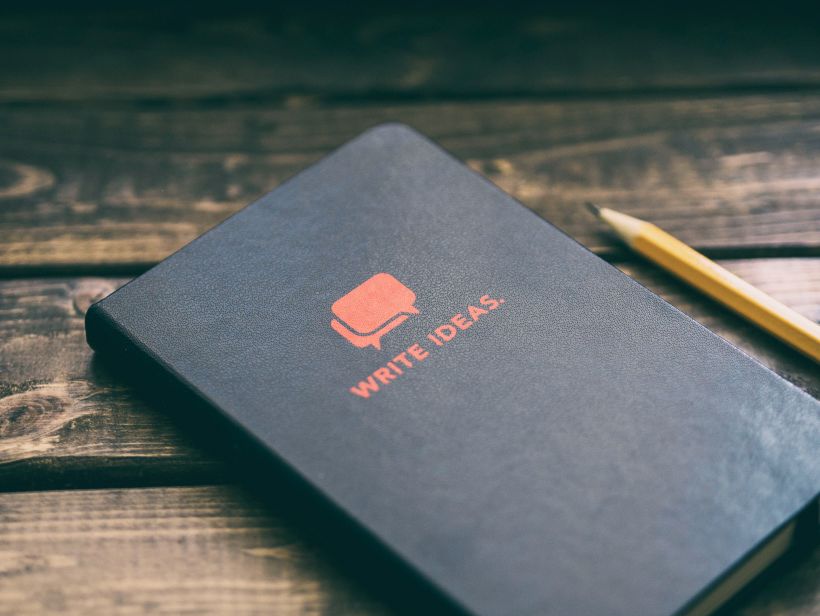
By practicing these exercises regularly, you can improve your creative writing skills and develop your unique voice as a writer. Remember to be patient with yourself and enjoy the process of learning and growing as a writer.
And last but not least, here are ten quotes from famous writers about creative writing:
"The purpose of a writer is to keep civilization from destroying itself." - Albert Camus
"You have to write the book that wants to be written. And if the book will be too difficult for grown-ups, then you write it for children." - Madeleine L'Engle
"There is no greater agony than bearing an untold story inside you." - Maya Angelou
"One day I will find the right words, and they will be simple." - Jack Kerouac
"The scariest moment is always just before you start." - Stephen King
"If there's a book that you want to read, but it hasn't been written yet, then you must write it." - Toni Morrison
"You can't use up creativity. The more you use, the more you have." - Maya Angelou
"Writing is easy. All you have to do is cross out the wrong words." - Mark Twain
"If there's no passion in your writing, then it's not worth writing at all." - Jules Renard
"A writer is someone for whom writing is more difficult than it is for other people." - Thomas Mann

Enjoy this incredible list of courses which help you to go to the next level in your creative writing:
- Writing a Novel Step by Step - Introduction to Narrative Writing - Creative Writing for Beginners: Bringing Your Story to Life - Narrative Techniques for Children’s Books - Script Writing for Movies and Television
Recommended courses

Storytelling Techniques for Conveying a Message
A course by Gabriel García de Oro
Discover the most powerful tool for effectively communicating your brand, business, or work through emotions
- 98% ( 636 )

Visual Poetry Diary: tell stories with photos and verses
A course by Lina Botero
Learn to tell stories by combining different languages, such as words, video, and photography to express your emotions in an original way.
- 99% ( 215 )
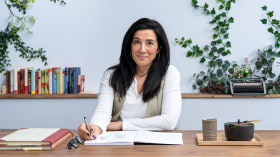
Writing a Novel Step by Step
A course by Cristina López Barrio
Learn the keys to writing a novel and stimulate your imagination with practical exercises that connect you with your inner world
- 98% ( 2.4K )
- Follow Domestika
VIDEO COURSE
Finish your draft in our 3-month master class. Sign up now to watch a free lesson!
Learn How to Write a Novel
Finish your draft in our 3-month master class. Enroll now for daily lessons, weekly critique, and live events. Your first lesson is free!

Blog • Perfecting your Craft
Posted on Sep 26, 2019
20 Writing Tips to Improve Your Craft
“The pen is mightier than the sword.” Writer Edgar Bulwer-Lytton made this keen observation nearly 200 years ago, but it remains just as true today. Writing is one of the most powerful forms in existence, and a simple story can change countless lives — which is why so many of us choose to be writers in the first place.
But sometimes it can be difficult to find the right words, to tell the story the way you want, or to start writing in the first place. That’s why we’ve compiled these 20 essential writing tips for writers like you: artists who want to hone their craft to perfection, so they can tell their stories effectively to the world.
Some of these tips are narrative-related, while others are more about the mentality and setting you need in order to write. But all have one crucial thing in common: if you take them to heart, they’ll help you improve your craft — and maybe even pen the book of your dreams .
If you prefer your tips in watchable form, check out this video on great writing tips that no one else will tell you.

1. Even pantsers need to plan
Let’s begin with an age-old question: are you a plotter or a pantser?
If you’ve never heard these terms before, allow us to explain. Pantsers are writers who “fly by the seat of their pants,” i.e. start writing without preparing too much and simply trust that everything will work out. At the other end of the spectrum are plotters , who plan and outline extensively before they begin to write.
Which is the better way forward? Well, it’s different for everyone — what works for you may not necessarily work for another writer you know.
However, experience has taught us that a little bit of planning goes a long way. That’s why we always advise some form of preparation, even if it’s just a few nuggets of your plot, before you dive into writing. So create an outline today , if you haven't already!
2. Keep your outline in mind
Once you’ve prepared that outline, it’s important to actually use it. This may seem obvious, but it's seemingly one of the hardest-to-remember writing tips out there!
Many writers find themselves led astray by subplots and secondary characters, wandering into rambling chapters that don’t really go anywhere. Then when they try to get back to the main plot, they find they’re already too far gone.
Keeping your outline in mind at all times will help you avoid these disastrous detours. Even if you stray a little , you should be able to look at your outline and articulate exactly how you’ll get back to what you planned.
This is especially crucial late in the writing process, when it can be hard to remember your original vision — so if you have doubts about your ability to remember your outline, definitely write it down.
3. Introduce conflict early
Of all the core elements in your story, conflict is perhaps the most important to emphasize. Conflict lies at the heart of every good narrative, so make sure readers know what your conflict is within the first few chapters!
The best way to do this is through an early inciting incident , wherein the main character has a revelation and/or becomes involved in something big. For example, in The Hunger Games , the inciting incident is Katniss volunteering for the Games — which kicks off her personal and political conflict with the Capitol.
Finally, remember that there are many different types of conflict . So if you have no idea what your conflict, it’s probably just unconventional. For instance, your conflict might be one that unfolds within your narrator (character vs. self), or against some larger force (like character vs. technology). Once you do figure it out, try to introduce it early!
4. Control the pacing
Nothing ruins a good book like poor pacing. So make sure you control the pacing in your story, lest readers lose interest and put down your book in frustration!
In order to combat slow pacing , you’ll need to increase the tempo by:
A) Cutting down lengthy sentences and descriptions, and B) Increasing action and dialogue.
The first strategy works for one simple reason: it gets rid of filler and fluff. In extreme cases, you may have to cut a great deal of exposition in order to get to the beating heart of your story. (See writing tip #18 to help you with this.)
As for the latter, it might seem like adding more content is counterintuitive to a quicker pace. But because action and dialogue move the story forward in a concrete manner, you can always rely on them to improve slow pacing.
5. Fine-tune your dialogue
Speaking of dialogue , it's pretty critical to most stories, both in terms of plot and drawing in readers. Indeed, a conversation between characters is usually much more impactful than a narrator relaying similar information.
But dialogue loses its impact if the conversation goes on for too long — so for better, sharper dialogue, be concise . Say you’re writing a story in which two characters have an argument. You might be tempted to go on for paragraphs to convey emotion, tension, and meaning, but all this can fit into just a few sentences. Like so:
“Nice of you to show up. What were you doing, if not getting groceries?” “Thanks for the warm reception. I had a meeting. Kind of an important one.”
For more dialogue-specific writing tips, check out this post — or the video below!

6. Show, don’t tell
In a similar vein, while you may have already heard this advice , it bears repeating: show, don’t tell as often as possible. For those who aren’t really sure what that means, it’s easiest for us to, well, show you! Here’s a passage from Sally Rooney’s Normal People that exemplifies this rule:
He wakes up just after eight. It’s bright outside the window and the carriage is warming up, a heavy warmth of breath and sweat. Minor train stations with unreadable names flash past… Connell rubs his left eye with his knuckles and sits up. Elaine is reading the one novel she has brought with her on the journey, a novel with a glossy cover and the words "Now a Major Motion Picture" along the top.
As you can see, it’s pretty hard to completely eliminate telling from your prose — in fact, the first sentence in this passage could qualify as “telling.” But the rest is “showing,” as it paints an evocative picture of the scene: the bright, warm carriage in the train that's rushing past other stations, the girl reading the glossy novel in the opposite seat.
If you can use all five senses to convey the scene, all the better. Tell us not just what the central character sees, but also what they hear, smell, taste, and feel in order to truly immerse the reader in the scene.

FREE COURSE
Show, Don't Tell
Master the golden rule of writing in 10 five-minute lessons.
7. But don’t reveal TOO much
While you want your scene-by-scene descriptions to be as “showy” as possible, don’t reveal too much to readers about your plot and characters. This is the idea behind Hemingway's “Iceberg Theory,” which posits that you should only provide readers with “the tip of the iceberg” — the most essential part of the story.
Many writers create elaborate histories for their characters, or have long-reaching plans for them beyond their current works. But readers only need to know the “here and now,” so to speak. Giving them too much information will overwhelm them, and likely cause them to put your book down in favor of something simpler.
So while you might include a bit of backstory or foreshadowing every so often, it’s best to keep most of this info to yourself. This also works on another level, in that you can reveal tantalizing drips of information as the story progresses, which will pique readers’ interest rather than lose it. (Two writing tips for the price of one!)
8. Consider your themes
On a related note, the underwater part of the “Hemingway iceberg” not only consists of backstory, but also important themes. This is another aspect to contemplate during the writing process: what are you trying to say about society and/or the human condition? And how can you convey those themes in a subtle yet effective way?
Common literary themes include love, loss, and the importance of doing the right thing. Your themes will depend on your genre and subject material, but they may also relate closely to your personal beliefs and experiences. Try to embrace this, as writing what you know is a great way to infuse your story with genuine emotion.
9. Be careful with POV
Your narrator is your reader’s gateway into the story, so be careful with point of view. Don’t make your narrator’s voice too specific, as they need to speak in an accessible and relatable way for readers — and a non-stereotypical way if they happen to speak in a certain dialect. (For help with this, you might consider getting a sensitivity reader .)
Also remember that, while omniscient narration is the most flexible way to tell your story, it also requires the most discipline as an author. An omniscient narrator can easily move too rapidly among storylines, causing mental whiplash for readers.
To avoid this , remember our tip about having your outline in mind at all times! That way, even if you have an omniscient narrator, they shouldn’t get too far off track.
10. Write as often as you can
Now we’re getting into the more process-based writing tips. Write as much as possible is one of those tips you’re surely tired of hearing, but the reason it’s so common is because it works!
The only way you’re ever going to finish writing a book is by sitting down and writing it , so work on your story as often as you can. Write whenever and wherever you have a bit of downtime — on the bus, in a long line at the grocery store, waiting for your laundry, etc. It might feel strange to write on your phone rather than on a laptop at your desk, but you’ll get accustomed if you do it often enough.
If you can't figure out what to write, we have some awesome writing prompts , writing exercises , and even writing scholarships (if you're a student) to help you out! You can also check out these great opening lines , our guide to getting started with creative writing or watch the video below to inspire you.

11. Ask yourself questions
One way to ensure you’re doing your best, most creative writing is to question yourself constantly. It’s easy to get complacent with your writing, even if you’re technically meeting your word count goals . But if you’re always challenging yourself, you’ll see every bit of potential in your story and fulfill it as you progress.
A few good questions to ask yourself might be:
- Have I given my characters realistic motivations that manifest throughout the story?
- How does each scene contribute to either character development or plot?
- Is there a big reveal , and if so, am I building toward it sufficiently?
- Does the POV /narration style feel true to the story I’m telling?
12. Write now, edit later
That said, don’t challenge yourself so much you become too paralyzed to write. When in doubt, just skip over it, or write a crappy version of it for now. Write now, edit later is the approach of countless authors, and if it works for them, it can work for you too!
We won’t really touch on editing here, since this is a list of writing tips, not editing tips. But if you’re interested in the “later” part, you can check out this guide on how to edit a book . And remember: you don't have to go it alone — the Internet is chock full of writing groups willing to give you constructive criticism , not to mention great editing tools to get the job done.
13. Read your work out loud
Many of the best writers' and editors' writing tips include reading aloud what you write in order to check it for inconsistencies and awkward phrasing. This tactic particularly helps weed out long, unwieldy sentences, and it's a godsend when you're working out how to write dialogue that sounds true to your characters..
For bonus points, you might even stage a reading with a group of friends (or fellow writers) where each person reads the dialogue of a different character. This will give your writing more “distance” and help you see its flaws more easily. If you do stage a reading, remember to take notes, so you can remember what to fix afterward!
14. Make it short and sweet
As Polonius said, brevity is the soul of wit, so keep your writing as short and sweet as you can. This will both entice readers and help you avoid purple prose , which tends to be a dealbreaker for readers and agents alike.
Of course, if you’re writing literary fiction, you do want your writing to sound intelligent. How can you do this without going on for paragraphs at a time? The answer is by making strong word choices, especially when it comes to verbs . Don’t dilute your story with adverb-y sentences — get down to business and tell us what the characters are doing.

15. Get rid of distractions
Yes, this is probably one of the hardest writing tips to follow — especially for those of us who enjoy working from noisy coffee shops and taking frequent Netflix breaks . But the more you eliminate distractions, the better your writing will become. Here are some ideas on how to enter deep focus mode:
- Write on a computer with no WiFi
- Use the Pomodoro technique
- Set your phone to airplane mode or put it in a different room
- Work in a quiet space, like your local library
- Avoid working alongside friends, unless they really do increase your accountability (but be honest with yourself about this!)
16. Work through crises of confidence
In every writer’s life, there comes a point where they second-guess their entire endeavor. This will no doubt happen to you, too — maybe you’ll notice a major plot hole halfway through, a theme you have no idea how to incorporate, or you'll simply hit a creative wall .
Fear not: every writer who’s ever completed a book has gotten through this. But how can you work through such writerly crises without bashing your head against the wall?
If you ask us, the best solution is to return to your early notes and original outline. Look back to see if there’s anything there that can help you — you may have forgotten about some critical component, or it may help you see things in a new light.
And if that doesn’t work, you might just need some time away from this particular project. Take a break for a day or two, then come back to it with fresh eyes. But whatever you do, don’t give up! Remember, every writer’s been through this same thing. Think of it as your initiation, and refuse to let it break you.
17. Listen to feedback
Now for another one of those writing tips that we all struggle with. Throughout the process of writing, and definitely after you’re finished, you should share your work with other people: your friends, family, writers’ groups (both in person and on the Internet ), and your editor(s).
Accepting and actioning critical feedback is one of the most difficult parts of being a writer. Yet it’s also one of the most important skills to have. Because the feedback you receive from friends and beta readers is the only window you have into other people’s views — until you publish and it's too late.
So try not to view criticism as harsh, but as helpful. It might just save you from literary infamy later! On that note…
18. Kill your darlings
Sometimes you’ll pen a passage that’s so beautiful, so nuanced, so masterfully constructed that you want to frame it — but it doesn’t really contribute anything to the larger work. It’s a distraction, and you know in your heart that your book would be better off without it.
What to do now? You probably know the answer, even if you don’t want to admit it: you have to kill your darlings. This most often refers to removing an irrelevant or otherwise distracting passage, but it may also be your title , an element of your narration, or even an entire character.
In any case, if it doesn’t add to the story, consider dropping it. Of all our writing tips, this one is perhaps the most important for writers of short stories and flash fiction , since you don’t have any room to waste! Remember, you can always save it to re-use later.
19. Just keep writing
How do prolific, successful authors manage to turn out so many books? Basically, by keeping calm and carrying on. Stephen King writes 2,000 words every single day, even on holidays. Jane Austen wrote each day just after breakfast without fail. Kafka wrote in the wee hours of the morning, barely sleeping as a result.
Now, Jane Austen never had a smartphone distracting her, so that was kind of an unfair advantage. But you do still need to at least attempt a similar lifestyle, and keep writing with as much consistency and focus as possible!
This is one of the best writing tips we can give any author, fiction or non-fiction, short-form or long. Remember that it’s a marathon, not a sprint, and keep your head down until you hit that final blessed page.

20. Keep publishing in mind
Last but certainly not least on this list of writing tips, we’ll cover the potential of publishing your book once it’s finally finished. Though it's the final step in the process, thinking about it as you write can really motivate you! Not to mention it's good to have some idea of your plan when you cross that finish line.
For example, if you go the traditional publishing route , you should consider how you might pitch your book to agents. What makes your story unique, and why would they want to represent it? If you start writing with the aim to publish, you can consciously highlight these elements in the story.
On the other hand, if you’re thinking about self-publishing , the adventure truly does begin once you’ve finished the manuscript ! After a round or two of editing and getting a book cover, you should be set to put your book up on Amazon and start selling.
There are pros and cons to both these sides. Luckily, if you’ve gotten to this point, the hard part is over; you’ve managed to write the book of your dreams, and now what you do with it is up to you!
And if you haven't quite gotten there yet, know that it's never too late. Writing is a lifelong challenge, but it's also one of the most rewarding things you can pursue. So go forth and tell the story you've always wanted to tell — we believe in you. ✍
Did we miss anything? Tell us your best writing tips in the comments below!
3 responses
Kalyan Panja says:
03/08/2019 – 07:19
Thanks for sharing this inspiring article which can help many to decide on the choices they make to write better and engaging articles.
Lost-Identification says:
13/08/2019 – 12:16
Do you have any recommendations for a book to help improve writing? I've been reading books like, "The Anatomy of Story" by John Truby, "Dialogue: The art of verbal action for the page, stage, and screen" by Robert Mckee, and just reading a wide genre of books.
↪️ Phil Slattery replied:
16/10/2019 – 04:32
Read The Elements of Style by Strunk and White. It has been a Bible for some great writers since the 1930's. It's updated periodically. It is short, concise, and clear; exactly what writing should be. It helped me immensely. A very concise guide that helped me immensely with punctuation is Webster"s New World Guide to Punctuation. Wonderfully concise and clear work. This won't cover every debatable nuance of punctuation, but it will cover everything you need to write well.
Comments are currently closed.
Continue reading
Recommended posts from the Reedsy Blog

What is the Climax of a Story? Examples & Tips
The climax is perhaps a story's most crucial moment, but many writers struggle to stick the landing. Let's see what makes for a great story climax.

What is Tone in Literature? Definition & Examples
We show you, with supporting examples, how tone in literature influences readers' emotions and perceptions of a text.

Writing Cozy Mysteries: 7 Essential Tips & Tropes
We show you how to write a compelling cozy mystery with advice from published authors and supporting examples from literature.

Man vs Nature: The Most Compelling Conflict in Writing
What is man vs nature? Learn all about this timeless conflict with examples of man vs nature in books, television, and film.

The Redemption Arc: Definition, Examples, and Writing Tips
Learn what it takes to redeem a character with these examples and writing tips.

How Many Sentences Are in a Paragraph?
From fiction to nonfiction works, the length of a paragraph varies depending on its purpose. Here's everything you need to know.
Join a community of over 1 million authors
Reedsy is more than just a blog. Become a member today to discover how we can help you publish a beautiful book.
Which famous author do you write like?
Take our 1 minute quiz to find out.

1 million authors trust the professionals on Reedsy. Come meet them.
Enter your email or get started with a social account:
- Skip to primary navigation
- Skip to main content
- Skip to footer
Enchanting Marketing
Writing advice for small business
11 Creative Writing Techniques
Learn how to add pizzazz to any type of writing.
The articles below show you how to use creative writing tools in fiction or non-fiction. Each article features a series of examples so it becomes easier to apply the technique.
List of creative writing techniques
Click the links below to go to a specific section:
Personification
Show don’t tell
Repetition in writing
Contrast in writing
The rule of three in writing
Parallelism
1. Metaphors
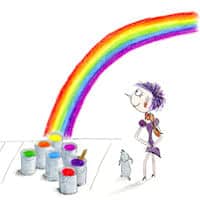
Learn how to use metaphors and get inspired by these examples …
Learn how to use metaphors >>
Metaphor examples >>
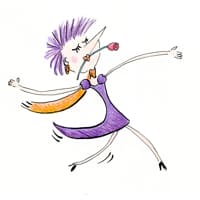
Get inspired by over 10 simile examples by various authors …
Simile examples >>
3. Analogies
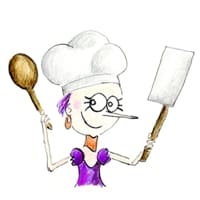
Get inspired by these analogy examples …
Analogy examples >>

Improve your writing style
Learn how to write better and find your voice. Get free writing tips in your inbox.
Get free writing tips >>

Get inspired by these imagery examples …
Imagery examples >>
5. Personification
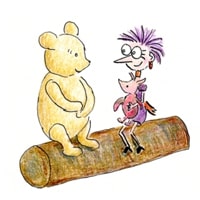
Learn how to use personification to make your writing sparkle …
Personification examples >>
6. Show don’t tell
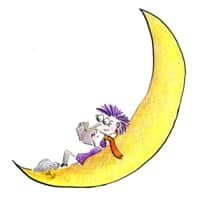
Get inspired by these examples of “show, don’t tell” …
Show don’t tell examples >>
7. Repetition in writing
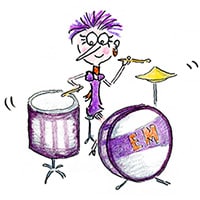
Get inspired by these examples of word repetition …
Examples of repetition in writing >>
8. Contrast in writing

Discover how to use contrast in your writing …
Examples of contrast in writing >>
9. The rule of 3 in writing
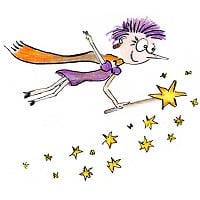
Get inspired by these examples of the rule of 3 …
The rule of 3 in writing >>
10. Parallelism in writing
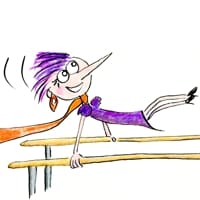
Get inspired by these examples of the parallelism …
Parallelism examples >>
11. Switch the point of view (POV)
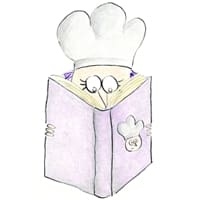
Discover how to switch the point of view …
Point of view examples >>
You may also like …
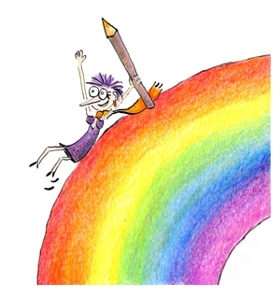
Creative writing examples
Learn how to inject creativity in any writing.
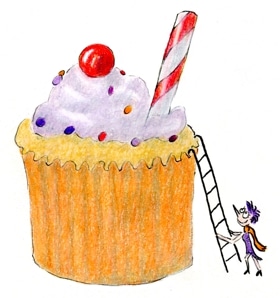
Creative writing exercises
Try these exercises to add a touch of creativity to your writing.
Share this page:

Books and courses
Follow proven templates for specific writing tasks, practice your skills, and get professional feedback so you become a confident business writer. Take on any writing project with gusto. Learn more about books and courses

About Henneke
I never saw myself as a writer, but in my early forties, I learned how to write and discovered the joy of writing. Now, I’d like to empower you to find your voice, share your ideas and inspire your audience. Learn how I can help you
Popular topics
Sales copywriting
Blog writing for business
Your writing voice
Tips for beginning writers
The writing process
Improve your writing skills
Writing examples
Popular blog posts
Recent blog posts
Free Snackable Writing Course
Get 16 concise emails and learn how to write more persuasive content.
Success! Now check your email to confirm your subscription.
There was an error submitting your subscription. Please try again.
- PRO Courses Guides New Tech Help Pro Expert Videos About wikiHow Pro Upgrade Sign In
- EDIT Edit this Article
- EXPLORE Tech Help Pro About Us Random Article Quizzes Request a New Article Community Dashboard This Or That Game Popular Categories Arts and Entertainment Artwork Books Movies Computers and Electronics Computers Phone Skills Technology Hacks Health Men's Health Mental Health Women's Health Relationships Dating Love Relationship Issues Hobbies and Crafts Crafts Drawing Games Education & Communication Communication Skills Personal Development Studying Personal Care and Style Fashion Hair Care Personal Hygiene Youth Personal Care School Stuff Dating All Categories Arts and Entertainment Finance and Business Home and Garden Relationship Quizzes Cars & Other Vehicles Food and Entertaining Personal Care and Style Sports and Fitness Computers and Electronics Health Pets and Animals Travel Education & Communication Hobbies and Crafts Philosophy and Religion Work World Family Life Holidays and Traditions Relationships Youth
- Browse Articles
- Learn Something New
- Quizzes Hot
- This Or That Game
- Train Your Brain
- Explore More
- Support wikiHow
- About wikiHow
- Log in / Sign up
- Education and Communications
How to Improve Creative Writing
Last Updated: April 26, 2024 Fact Checked
This article was co-authored by Melessa Sargent and by wikiHow staff writer, Hannah Madden . Melessa Sargent is the President of Scriptwriters Network, a non-profit organization that brings in entertainment professionals to teach the art and business of script writing for TV, features and new media. The Network serves its members by providing educational programming, developing access and opportunity through alliances with industry professionals, and furthering the cause and quality of writing in the entertainment industry. Under Melessa's leadership, SWN has won numbers awards including the Los Angeles Award from 2014 through 2021, and the Innovation & Excellence award in 2020. There are 7 references cited in this article, which can be found at the bottom of the page. This article has been fact-checked, ensuring the accuracy of any cited facts and confirming the authority of its sources. This article has been viewed 35,155 times.
Creative writing is an outlet to express your imagination by putting it onto paper. Many people enjoy creative writing, but some struggle with it because of how unstructured it can feel. If you have been writing creatively and you’d like to improve your skills, try learning grammar rules and receiving feedback on your work to strengthen your creative writing and boost your confidence.
Creating Polished Work

- Using correct grammar and punctuation will also make your writing seem more polished.

- For example, instead of saying, “He quickly and quietly ate his food,” try saying, “He gulped down his meal.” This sentence is more interesting, and gives the same effect to the reader.

Tip: Take a break from writing and come back to your piece after a few hours or even days. Mistakes will be easier to spot after you’ve taken a break.

- Revising is similar to proofreading, except you are looking for ways to improve your piece, not just correcting mistakes.

- Don’t be offended if someone doesn’t like your piece, or has a lot of feedback to give. You can choose whether or not to implement a change that someone else suggests.
Finding Time and Ideas

Tip: If you think you might forget to write, set an alarm on your phone to remind yourself.

- Get a library card so that you can check out books for free instead of buying them every time.

- For example, you might start with a prompt like, “Imagine what it would be like to be a plant,” or "Write about a day in the life of Barack Obama.”

- You can also use people-watching to practice writing down descriptions of behavior and clothing.

- For instance, try writing a fairytale from another character’s perspective, or setting it in today’s era.

- Deadlines that you set for yourself can seem easy to brush off, but you will be disappointed in yourself if you don’t meet them.
- Make sure your deadlines are realistic. Don’t plan on finishing an entire book by next week if you’re only halfway through.
Expert Q&A

You Might Also Like

- ↑ https://www.luc.edu/literacy/grammar.shtml
- ↑ https://writingcenter.unc.edu/tips-and-tools/editing-and-proofreading/
- ↑ https://writingcenter.unc.edu/tips-and-tools/group-writing/
- ↑ Melessa Sargent. Professional Writer. Expert Interview. 14 August 2019.
- ↑ https://www.urmc.rochester.edu/encyclopedia/content.aspx?ContentID=4552&ContentTypeID=1
- ↑ https://www.uopeople.edu/blog/why-its-important-to-read/
- ↑ https://cetl.uconn.edu/about/mission/
About This Article

- Send fan mail to authors
Reader Success Stories
Dhwanit Sheth
Nov 20, 2021
Did this article help you?

Featured Articles

Trending Articles

Watch Articles

- Terms of Use
- Privacy Policy
- Do Not Sell or Share My Info
- Not Selling Info
wikiHow Tech Help Pro:
Develop the tech skills you need for work and life

- Presidential Search
- Editor's Pick

Supreme Court Justice Sotomayor Talks Justice, Civic Engagement at Radcliffe Day

Church Says It Did Not Authorize ‘People’s Commencement’ Protest After Harvard Graduation Walkout

‘Welcome to the Battlefield’: Maria Ressa Talks Tech, Fascism in Harvard Commencement Address

In Photos: Harvard’s 373rd Commencement Exercises

Rabbi Zarchi Confronted Maria Ressa, Walked Off Stage Over Her Harvard Commencement Speech
Creative Writing Tips from Harvard’s Faculty

Harvard’s English faculty hosts a powerhouse of acclaimed creative writers. As lecturers and professors, they devote countless hours to passing on the skills of their craft to students. The Crimson asked four faculty members who teach fiction-writing classes to share their creative writing wisdom.
“You can make an entire world up in your head and transmit it to other people with scribbles on a page,” said Claire Messud, a Senior Lecturer. “Making up stories is open to all of us.” While not every Harvard student will have the opportunity to take their classes, anyone can try their hand at creative writing.
Start small, and make time to write.
Paul Yoon, Briggs-Copeland Lecturer, in an email: Start small. Oftentimes when we have an “idea” to write something, we’re operating on a level that is somewhat abstract and leans on the bigger picture. How to begin a story you want to tell? I like starting with just one sentence or focusing on an object or a specific detail, like describing setting or one character trait. Just that. Go micro, focus. Start small. And go step by step from there.
Claire Messud, Senior Lecturer: Learning the habit of making time for writing is the challenge for many people. Almost everybody makes time to exercise now. It’s just the same—you can say, I’m going to sit at my desk for an hour, or write until I have 200 words. You just make a plan. If you do something several times a week for weeks and months, you will get better at it.
Imagine the iceberg, not just the tip.
CM: It isn’t just about figuring out a plot and characters. It’s about really imagining the world, circumstances, and particularities of those characters and that situation—not just what’s going to appear on the page, but the entire world. Hemingway speaks about the tip of the iceberg. The tip of the iceberg is what the story is, but there’s an entire iceberg under the water. You have to make the iceberg to make the story.
Revise for clarity.
Laura M. van den Berg, Briggs-Copeland Lecturer, in an email: In my experience, a common struggle for students is the discomfort of sitting with the uncertainty of the first draft—i.e. I’m not sure where this story is going, I don’t know what this character is up to, I don’t know how it will end . Sometimes students worry that this not-knowing is a sign that they’re doing something wrong, when the not-knowing is very often an essential part of the process.
I tend to write my own drafts very quickly and messily and intuitively—and then spend a lot of time re-shaping and re-casting and re-imagining. In the first draft, the most important question I ask myself is “Why not?“ For every draft after the first, the question is, “Why?”
CM: Revision is really at least 50 percent of the work. Some of the things to think about: How much of what’s in my head have I conveyed on the paper? Have I been clear? It’s great to be beautiful or lyrical or inventive, but none of it matters if you haven’t expressed clearly what you wanted to express. The process of revision is about a clarification and a distillation. If you have three scenes, each of which does one thing, can you figure out a way to have one scene that will do all three things?
Read as if living depended on it.
Jamaica Kincaid, Professor of African and African American Studies in Residence, in an email: It is more important that you read than to write because when you are writing you have first read what you are writing before you write it. So the best thing, so it seems to me, for a writer is to read as if living depended on it. Nothing else really matters.
LMV: If you want to write poems or short stories or essays or novels, it is critically important to have read deeply in the genre—from the canon to what the canon has missed to what’s being written right now to everything in-between. And of course writers should also read expansively, roaming outside the genres they themselves work in.
PY: Always be open to inspiration. “Best American Short Stories” is a fantastic anthology. In terms of literary magazines, I think my current favorite, the ones that feel bold and ambitious and the ones I consistently want to pick up are: Tin House, A Public Space, and Ecotone. Books and stories are our best teachers.
Take your time during the publishing process.
LMV: Take your time getting to know the landscape. Read literary magazines and get a feel for who regularly publishes work that you love. Pay attention to where writers you admire have published/are publishing their work. Make sure you have given your work everything you have before you send it out into the world—an editor (almost always) is only going to read the piece once. Mightily resist the urge to rush.
No writing is wasted.
CM: No writing is a waste of time. You can always write better, and any writing you do is going to teach you how to write. You just have to dive in. You have to be unafraid. The language is ours. What a great freedom.
Want to keep up with breaking news? Subscribe to our email newsletter.
When You Write
Essential Creative Writing Tips and Techniques
Creative writing has no written formula and no immutable laws, you just need a good imagination and good writing skills.
And you’re good to go!
Creative writing presents us with fewer tethers than other forms of writing. This means that we have more liberty when we want to express our imagination artistically.
With all this freedom, defining and serving creative writing techniques is a bit hard, and some tips are frowned upon as they seem to infringe upon the liberties of some creative writers.
Still, some writers need guidance.
So, I have taken it upon myself to be this guide and dish out much-needed tips and discuss some creative writing techniques.
If you’ve been looking for guidance and insight, here’s a no-frills article full of practical tips on creative writing for you.
What Is Creative Writing?
Creative writing is writing that uses imagination , creativity, and mastery of the art of writing to evoke emotion in a reader.
It could be a fictional story, a nonfiction piece, or movie script, a play, a poem, et cetera. Creative writing oftentimes springs up from experimentation and good, imaginative use of knowledge and ideas.
One of the things that make creative writing different from other forms of writing is the underlying message or theme. Unlike other forms of writing, creative writing sometimes hides a message under the entertaining, saddening, or horrifying part of the written content.
Other archetypal elements of creative writing include creating an emotional connection with the reader (and sometimes evoking a response), having a deliberate point of view, using a narrative structure, and use of imaginative and descriptive language.
What Isn’t Creative Writing?
Whatever lacks the elements I just listed isn’t creative writing. Written pieces such as company reports, statements, and other professional communications aren’t regarded as creative writing.
Similarly, personal documents and communications such as emails, social media content, and personal communications all fit in the non-creative writing category.
In addition to that, research papers and pieces that are in the “Academic Writing” category do not qualify as creative writing.
Most often the type of content that I have listed is devoid of deliberate themes. Often, these types of pieces have goals similar to those prevalent in creative writing, but they’re presented differently.
But—as a reminder to myself or you, the reader—I would like to say that they’re blurred boundaries in some forms of content. For example, we can’t outrightly classify content such as blog posts as creative writing non-creative. Blog content belongs to a broader category that is as flexible as creative writing itself.
Therefore, you would have to analyze the elements of each blog post to see if they fit a particular category.
Forms of Creative Writing
Given the freedom that creative writing gets, it is just right that it takes many forms.
Here are some of the forms of creative writing:
This is one of the most popular forms of creative writing. Novels are also the first thing people think about when it comes to books (apart from academicians who are religiously into textbooks).
Novels are extended fictional works in prose that usually (or always?) come in the form of a story.
Most of them are in the range of 50,000 to 150,000 words, but some are told in less than 50,000 and others extend beyond 150,000.
Pieces that are too short to qualify as novels and too long to qualify as short stories automatically qualify as novellas and novelettes.
Novellas often fall in the range of 10,000-40,000 words, while novelettes generally have a word count of 7,500-19,000 words.
Word count boundaries are usually varied—and they are oftentimes at the discretion of the publisher or competition organizers.

Short Fiction
Short stories as the name suggests are on the other end (the shorter word count end) of the fiction word count spectrum.
Short stories generally fall between 2,500 and 7,500 words but sometimes extend to 10,000 words.
Unlike novels, short stories tell stories with fewer characters, details, and backstories, among other deficiencies.
Then there are other forms of short fiction told in 1,000 words, and they’re called flash fiction and micro-fiction.
The unrestricted and spontaneous nature of poetry embodies the artistic multifariousness of creative writing.
Poetry is as emotional as it is rebellious—and word counts and rhyming rarely matter for poems, i.e., those in the free verse category.
There are different types of poems such as sonnets, haikus, sestinas, limericks, and free verses.
The spontaneous nature of poetry does connote lawlessness. The thing is, the different types of poetry originated from different cultures around the world and many come with rules.
However, for most of these types of poetry, the rules are adaptable. A few types such as haikus have specific rules on the number of lines or structure.
Plus, just because there aren’t many rules governing the structure, content, and length of poetry it doesn’t mean that you can brush aside the use of perfect grammar, the importance of POV, the need for a theme, and the need to evoke the reader’s emotions.
TV scripts, stage play scripts, and screenplays
This category comprises stage plays and scripts for films, television programs, and other types of video content.
A majority of content in this category has a lot in common with novels and short stories. Although different scripts have different formatting requirements, they carry a message or central theme and try to appeal to their audience’s emotions.
In a way, these scripts depart from the highly descriptive nature of novels and short stories. There’s much more dialogue in scripts with a bit of stage or scene directions in stage plays screenplays.
Creative Nonfiction
Creative writing doesn’t always have to be works of fiction, some nonfiction also qualifies as creative writing.
Here are some of the works that can be called creative nonfiction:
- Lyric essays
- Autobiographies
- Humor Writing
- Literary Journalism
Tips and Techniques for Creative Writing
1. read widely and learn from other writers.
You can improve by focusing on looking at your writing only. If you want to be a good creative writer, you have to read.
When you read other people’s work, you discover other writing styles and get inspired in the process.
There are lots of reading resources on creative writing out there. You can find books, essays, blog articles, and video content covering different aspects of creative writing.
Some works will comprise fiction and nonfiction pieces (novels, short stories, poetry, lyrical essays. Et cetera) while others seek to cover interviews and personal essays that talk about the authors’ creative processes.
2. Benefit from Your Imagination
A wild imagination represents superiority for creative writers, especially fiction writers.
This is the only time you’re allowed to play god!
By using a crazy imagination you can conceive an exciting story, build a unique world, and come up with convincing, never-imagined-before characters.
Heck! You can even create your own language!
Be as imaginative as you can be, even going into a trance, and create a creative piece using your own rules!
3. Focus on Understanding and Improving Yourself as a Writer
You cannot improve something you don’t fully understand; therefore, you have to understand your strengths and weaknesses as a writer to become a better writer.
I wrote an article on this, explaining some general strengths and weaknesses that writers have. As a creative writer, you have to identify problem areas such as bad sense of rhythm, dodgy flow, lack of creativity, et cetera.
As a creative writer, there are things you must have in your armory, such as a rich and relevant vocabulary, organized writing, and a unique writing style (which also happens to be the next tip on the list).
4. Develop or Discover a Unique Writing Style
Creative writers are better off seeking inspiration from other creative writers while trying to follow their path.
In short: study other writers, but develop your writing style. Take a look at all the best, and you’ll discover that most of them developed a unique style.
So, have your writing style. And, it should fit the niche you want to specialize in—if it’s horror, a befitting style. You could also focus on developing vibrant writing full of eccentric characters.
Likewise, you could become a writer who always writes in a specific POV.
5. Create Space for Creative Writing and Stick to a routine
Writing routinely and total focus are tremendously important for creative writers. If you’re a spontaneous writer who scarcely writes and only writes whenever they feel like it, you’re bound to fail as a writer!
You need to have a schedule and some working space. The ideas might come spontaneously and anywhere, but it’s hard to write without proper planning and a distraction-free setting.
It’s unproductive trying to squeeze writing into your day.
When you start writing routinely, in a ‘comfortable’ place, creative writing becomes natural. Even when you’re out of ideas experiencing writer’s block, you have to practice the habit of writing stuff daily—just write some fluff if you’re bored.
6. Know your audience
“Why do you write?”
The most popular answer to the question is, “because I love it!”
But if the question was rephrased and we asked “why do you publish your works?” the previous answer would be ‘half true.’
You write because it’s the love of your life and you publish for your audience. So, creative writing isn’t always about you, but your fans too.
You have to know what your readers are like. Even when you haven’t published a single piece, it’s easy to research readers’ interests using web-based analytics resources.
Armed with this knowledge, you can craft a piece that strikes a chord with your target audience, with a high potential of becoming a bestseller.
7. Always Start and End Strong
Our English teacher constantly reminded us that when she was going through our essays, she started with the introduction and summary before moving to the body.
“They’re the most important parts of your essay.” She’d always say.
Later, I found out that this applied to almost every form of writing.
Your readers want your piece to either start with a bang or catch their attention. Once the reader feels underwhelmed, they won’t read all the way through.
Strong endings are just as important, but it doesn’t mean that you always have to end on a happy note. You can close on a sad note or give them a cliffhanger.
As long as you effectively use your imagination and the end doesn’t turn out to be a clichéd one.
The Best Books on Creative Writing
- 1. Plot & Structure: Techniques and Exercises for Crafting a Plot that Grips Readers from Start to Finish by James Scott Bell
- 2. On Writing: A Memoir of the Craft by Stephen King
- 3. The Writing Life by Annie Dillard
- 4. On Writing Well: An Informal Guide to Writing Nonfiction by William Zinsser
Final Words
Writing—whatever form it takes—isn’t a simple chore, but as hard as it is, it is also fun!
The goal is always to become a better writer and learn different techniques that will make our content impactful.
Every writer should fear stagnation and continue learning. Utilize today’s easy access to resources, read, ask for help, and let your wild imagination run loose.
While there’s no fixed formula in creative writing, tips from experienced writers will help you improve in some areas.
So, always be inquisitive and reach out to other writers.
Crafting an original work of fiction, poetry, or creative non-fiction takes time, practice, and persistence.
Recommended Reading...
Crafting compelling game stories: a guide to video game writing, how to write a murder mystery: figuring out whodunit, good story starters for your next bestseller, 100 fluff prompts that will inspire creativity.
Keep in mind that we may receive commissions when you click our links and make purchases. However, this does not impact our reviews and comparisons. We try our best to keep things fair and balanced, in order to help you make the best choice for you.
As an Amazon Associate, I earn from qualifying purchases.
© 2024 When You Write
- Writing Courses Online
- Course Testimonials
latest posts

How to Improve Your Writing in Three Easy Steps

Verbeter Jou Kans Om ʼn Kortverhaal Kompetisie Te Wen Só

Topics to Write About: How to Choose

Free Writing Competition – My Writing Journey

Logical Flow: The Key to Compelling Writing

Can You Make a Living From Travel Writing? We Ask Travel Writer Gabi Logan

Four Habits of Successful Writers

Famous Quotes on Writing

10 Effective Ways to Improve Your Creative Writing

Writing a story is a craft that requires constant tweaks, edits and trial and error by the writer. Here are ten tips to improve your creative writing and save you hours of painful re-writing in the future.
(1) Don’t underestimate your reader
You have a fantastic plot, your characters are realistic, the setting is ideal and you want to make sure that the reader gets every little detail that you have in mind. Great!
The only problem is that you may be tempted to bombard your reader with many intimate details so that they see it exactly as you do. In-depth descriptions can be useful and effective, but don’t overdo it. Keep your writing neat and tight; don’t waste space on long, rambling descriptions about things that aren’t necessary to your story.
Wouldn’t it be ideal if editors received submissions and decided to look past the typos and incorrect formatting because they think it might be a little gem of a story? The fact is that if your manuscript is full of errors or doesn’t follow the required guidelines then it’s going in the trash.
Don’t rely on your computer’s spell checker. If you make a typo, the computer will not warn you if you’ve still spelt a valid word. Your gorgeous heroine meets the bog (boy) of her dreams? The wealthy doctor places his golf ball on his tea (tee)?
(3) Give Your Characters Life
Characters are vital to your story so treat them with care and give them that breath of life that you, the writer, have the power to give. Give them unique characteristics; make them believable by making them have a purpose, motivation and conflicts to resolve.
(4) Use Strong Words
You want your writing to sound decisive, so use words that get the point across. Did Bob’s really big headache cause him a lot of pain or did Bob’s migraine cause excruciating pain? But remember not to overdo it: don’t use words that the reader won’t understand, you want to use strong words, not confusing or extravagant ones.
(5) Show Don’t Tell.
Who hasn’t heard that one before? But it’s a valid point and a useful rule for all writers. Fiction is for entertainment, so entertain your reader! Give them an excuse to escape into the reality that you have created. Let them see, hear, feel, smell, laugh, cry, love and hate. Show your reader the world that you’ve created, don’t just tell them about it.
(6) Check your Commas
While commas can be effective many inexperienced writers tend to sprinkle their sentences with them. When placed incorrectly, commas can chop up your sentences and sometimes even alter the meaning. Brush up on your high-school grammar; your work will improve with that alone.
(7) Grab their Attention from the Start
Opening lines are often referred to as ‘the hook’ because that’s exactly what you want them to be. You get the reader’s attention and reel them in for the rest of the story. Try something powerful to kick-start your story. For example: ‘Mark’s back broke with an audible crack’ or ‘Eliza didn’t realize that she was going blind’ or ‘The bullet that pierced Henry’s back and left him paralyzed was meant for a homeless man’. Each of these lines makes the reader ask ‘why?’ and once they ask that question, the reader will keep on reading until they find the answer.
(8) Give Your Reader a Satisfactory Ending
You can leave the reader speculating or wondering why at the end of your story, but try to resolve as much as you can. If your reader finishes the last sentence and is still asking questions about what happened to who and why, then you still need to tie up the loose ends.
(9) Sober up
Think of writing as going out to a bar: you go out, the lighting is dim, it’s noisy, maybe you drink too much but you meet a person who’s attractive, witty, shares the same interests as you and you’re smitten by them. A few days later you meet for coffee: are they as good looking or charming as you remember?
This can happen with writing. You become intoxicated with the feeling of success and think that you have written an award-winning piece. The question is, once you’ve sobered up, is it as good as you thought it was? Put your manuscript away and try not to think about it for a couple days. Then take it out and read it with a clear, open mind. Read it through once from beginning to end, then break it up into sections, then read it sentence by sentence. Is it as good as you remembered? If so, then well done! But the odds are that if you were too excited about finally wrapping it up, then you’ll find some points to revise.
(10) Challenge Yourself
Are you trying too hard to write in a specific genre or style? Do you only write short stories or novels or poems or movie scripts? Give that creative muscle a workout and try something different. It will be a refreshing exercise for your mind and you might be surprised by the result. If you don’t succeed then you have still learnt a valuable lesson.
About the Author:

Photo Credit: Flickr.com_gudmd.haralds

you might also like

Writers' Treasure
Effective writing advice for aspiring writers
Category: Creative Writing Tips
Creative writing tips and tricks for beginners
Environmental narratives: Integrating climate change into storytelling Environmental narratives: Integrating climate change into storytelling
This is a guest article by Indiana Lee. If you want to submit a guest article of your own, be sure to read the guest article guidelines.
Climate change is a global issue that affects billions of people. The consequences of a warming world make for great story beats, too. Hurricanes and floods regularly feature in climate fiction, and people are keen to hear about the experiences of those who live through climate-induced disasters.
Writing environmental narratives can help you achieve your broader aims as a writer, too. Contemporary authors like Amitav Gosh and Jesmyn Ward have used their novels to improve public understanding of climate change and campaign for change.
Your novel doesn’t necessarily need to feature extreme weather events or didactic lessons, either. While climate science is clear — the world is being warmed by human activity — there is still plenty of nuance to be explored by authors with a deep connection to environmental issues and a passion for advocacy.
Why boredom can be a writer’s best friend: tips for creative inspiration Why boredom can be a writer’s best friend: tips for creative inspiration
The writer’s life is one of relative isolation. Unless you happen to enjoy working in a busy coffee shop, you’ll produce most of your work at a desk with only your thoughts and the cursor for company. While most writers enjoy working alone, there are times when your mind begins to wander, and boredom sets in. This is entirely normal, as even prolific writers profess to work in boring, somewhat dull environments.
However, those same prolific writers explain that boredom isn’t a bad thing. As a writer, you can leverage these insights to find creative inspiration. Used correctly, boredom can help you demolish your writer’s block , strike upon new ideas, and produce prose to be proud of.
How to unleash creativity through outdoor exploration How to unleash creativity through outdoor exploration
Living a creative life is both enriching and challenging. Yes, you undoubtedly have talents and perspectives that make your writing unique. However, you can’t always rely simply on your internal resources. That wellspring can occasionally run a little dry. The good news is that there are resources for unleashing creativity all around us. The great outdoors has long been considered a renewing influence for artists. Why not consider how you can effectively step beyond your writing space and explore what nature has to offer?
How to enhance your writing with travel and new experiences How to enhance your writing with travel and new experiences
This is a guest article by Indiana Lee. If you want to submit a guest article of your own, be sure to read the guest article guidelines.
As writers, it can be difficult to find inspiration when you are constantly expected to perform and inspire your readers. There are days where you will be staring at blank screens, wondering how you can balance your creativity, and prevent fatigue, while also maintaining consistent income as a writer. What’s even worse, this stress may culminate into burnout — a condition that is difficult to come out of. While temporary salves may help, travel can be the ultimate solution to all of these problems. However, most writers don’t typically seek this solution out due to financial concerns. Luckily, there are ways to finance new travel experiences that can help improve your writing .
Improve your creativity by improving your well-being Improve your creativity by improving your well-being
Global creators are motivated people. They are producing more and more content by the month, by the week, by the day, by the minute, and even by the second. However, this level of productivity and efficiency depends on how they are doing internally. For you as a content creator, it doesn’t matter whether creativity is your livelihood, a passion, or something in the middle. You are bound to experience creative blocks from time to time. Writer’s block happens regardless of your level of skill or commitment to the craft. It is typically fueled by issues with motivation or focus.
Let’s learn how to improve your well-being to reduce the negative impacts on your creative processes.
Leave Your Comfort Zone With Creative Nonfiction Writing Leave Your Comfort Zone With Creative Nonfiction Writing
It can be easy to get stuck in a rut with your writing. Whether you’re usually focused on straight reportage or speculative fiction, you may find yourself creatively unchallenged at times. This is often because getting comfortable in routines, subjects, and styles is the enemy of innovation. It’s worth taking a little time to shake up your practice and explore something different.
Creative nonfiction writing is a valuable tool in this regard. In essence, this is taking factual material and using it to tell an engaging story. It blends the committed scrutiny of journalism with the imaginative power of narrative storytelling. You’ll also find you can apply a variety of formats from blog posts to graphic novels.
So let’s take a closer look at creative nonfiction writing. How can you engage with the process and make the most of your experiences?
Top 10 Best Creative Writing Tips for Beginners
Discover the top 10 best creative writing tips for beginners. We asked Ruth, a talented creative writing teacher, for the best exercises, advice and tips for those who are new to this form of artistic expression. Get help with your non-fiction writing skills and learn how to create artistic prose.

Chloe Williams
Read more posts by this author.
When it comes to creative writing, it can be very difficult to know where to start and how you can improve your skills. Fortunately, there's loads of exercises to explore which will help you turn your ideas into artistic writing!
One thing to remember is that you don’t need to have a degree in English literature or creative writing to be an exceptional writer! The truth is, anyone with a passion for writing can learn and develop their fiction and non-fiction writing skills. We have put together the top 10 best creative writing tips for beginners to help you through your creative writing journey!
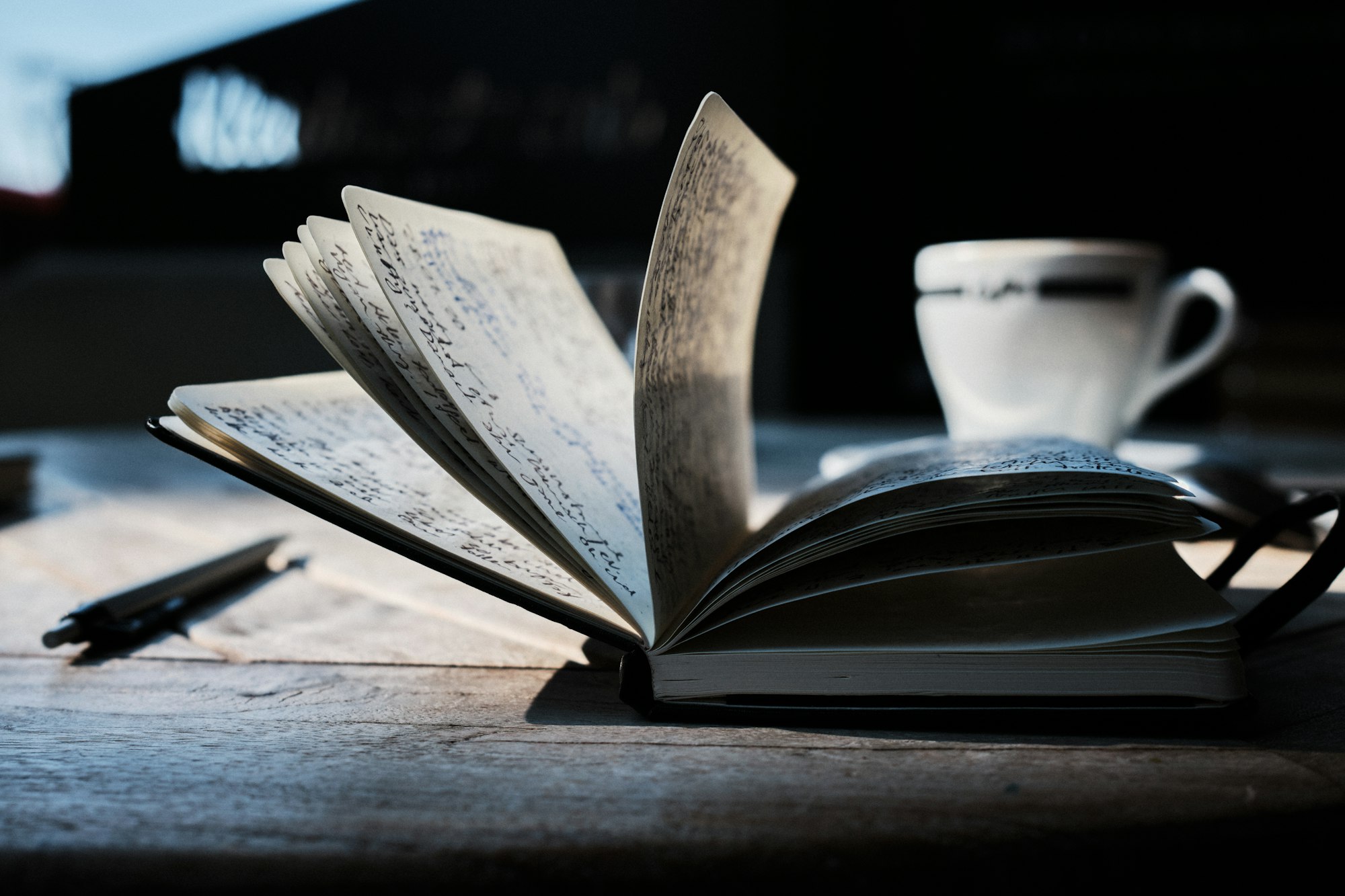
Ruth V Jarvis is a skilled author, editor and script consultant. From inspiring students to helping them learn new skills, Ruth is passionate about sharing her approach to creative writing within her workshops at Articulate.
Articulate is set in the London School of Mosaic studio in Gospel Oak, North West London. When visiting London School of Mosaic you can explore a wide range of artistic skills, from beginners mosaic courses to creative writing with Articulate.
Within this inspiring corner of London, students can develop their skills in writing fiction, non-fiction and poetry. Get the most out of your creative writing within interactive and supportive creative writing workshops with Ruth.
Looking for the best tips and tricks for creative writing success? We partnered up with Ruth to find out her top creative writing tips for beginners!
Top 10 Best Creative Writing Tips for Beginners:
- Find the Best Environment
- Freewriting
- Know Your Characters
- Don't be Scared of Drafting
- Keep a Writing Log
- Never Stop Reading
- Explore Your Emotions
- Get Perspective
- Explore Ideas
1. Find the Best Environment
![tips creative writing Taken at a cozy little bookstore in Seattle. You can hang out as long as you’d like and read whatevers on the shelves [ IG: @clay.banks ]](https://images.unsplash.com/photo-1533327325824-76bc4e62d560?crop=entropy&cs=tinysrgb&fit=max&fm=jpg&ixid=MnwxMTc3M3wwfDF8c2VhcmNofDE2fHxjb3N5fGVufDB8fHx8MTY0OTMyOTM0Ng&ixlib=rb-1.2.1&q=80&w=2000)
The first of Ruth's top tips is to find the best environment for you. This may be a coffee shop, library, park bench, cafe or in your own home, there is no wrong answers here. Finding the right environment is a personal journey that is well worth exploring!
'There are many ways to start a day's writing, at the heart is making sure you are somewhere you are comfortable and/or offers inspiration. Watching people and taking notes of actions and your environment can be a great spark for a story.'

For many beginners, a workshop may be one of the best places to find inspiration to get started on their creative writing journey!
Sharing ideas, discovering new authors and learning new skills with other creative writing enthusiasts can be an incredibly enriching and energising experience.
'Your style and stories will be unique, remember no two people are the same, value that and it will help to build your confidence.'
Ruth hosts a 12 week long women's creative writing group with the intention of giving women a space to get inspired, share their creativity and explore new skills.
'I have set up the Women’s Writing Group as a space where no subject is off the table. I hope it will be the start of women accessing confidence in their creative writing practice.'
Want a welcoming and artistic environment to build your creative writing skills? Then join Ruth as well as other like minded students to explore new skills and ignite your inspiration.
2. Freewriting

The best way to get started with writing is putting pen to paper and just writing! Ruth encourages beginners to incorporate freewriting into their creative writing process.
'Freewriting is a fantastic way to unlock ideas. When we wake in the morning, and there is little to influence us, our creative brain has free reign to express all the mind-boggling things it has been cogitating on whilst we sleep. We do some of our best problem solving when our heads are on the pillow.'
Freewriting is a fun and interesting way to explore fresh ideas. This exercise is sure to help beginners get their creative juices flowing!
3. Know Your Characters

When it comes to creating characters, it's important that you know them inside out! Ruth suggests that beginners get to know every aspect of the characters they are creating, from their desires to their struggles.
'Know your characters well. Put your protagonist into many situations, especially ones you are not going to write about; ask yourself how they would behave, and write short paragraphs. It is essential to understand your cast of characters in order to build nuance in their actions.'
Knowing everything about your character will help you create characters and stories that are relatable, believable and impactful.
'The nuance of behaviours and how they manage relationships is key to believable characters.'
4. Don't be Scared of Drafting
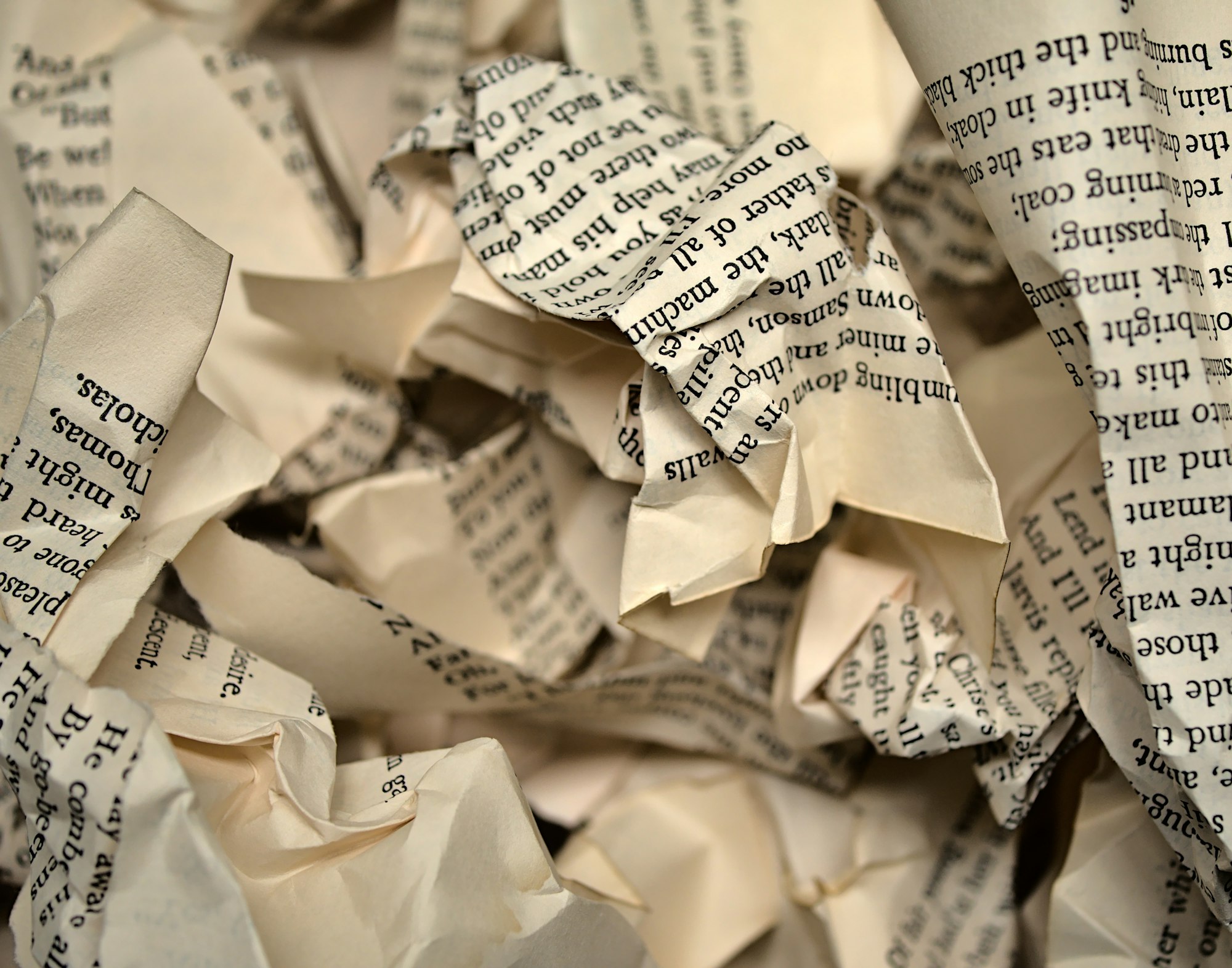
Don't be scared of drafting and drafting again. Ruth encourages those who are new to the creative writing process to embrace drafting.
'Remember, your first draft is just that, a draft! Let it flow; try stuff out. The story will have changed by the end of even a meticulously edited first draft. Looking for perfection can hold back vital energy needed for completing eighty thousand plus words.'
Accepting that your first draft is just a draft relieves some of the pressure! Instead of worrying about your writing being flawless, you can concentrate on your ideas and the overall process of creating exceptional writing.
5. Keep a Writing Log

One useful tip Ruth shares with her students is to make sure they keep an accurate writing log. This will make sure you don't loose sight of the small details within your writing.
'Take down the tiny details for continuity: eye colour, birthdays, the name of a pub or a port from where a boat sailed. It will save you a lot of time. There is nothing more annoying than trawling through two-hundred pages of text to retrieve an answer.'
6. Never Stop Reading
For many beginners, the main reason they started writing in the first place was because they read something that moved them or inspired them.

'Never stop reading! Anything you can get your hands on. If you are writing in a genre like fantasy, crime, or horror, it is good to understand the tropes that the reader expects.'
Ruth suggests that reading will continue to inspire you and inform your work throughout the writing process.
7. Explore Your Emotions

For those who are interested in writing poetry, this tip is for you! Ruth believes poetry is often deeply linked to emotion and has some thought provoking advice for aspiring poets,
'poetry often comes from a deep connection to emotion. When you are inspired- write. Read back as you go to look for metre. Does its tempo convey the mood you are looking for?'
When you are feeling inspired or moved, strike while the iron's hot and write! Embrace your emotions and consider the right metre, rhythm and tempo for your writing.
8. Get Perspective
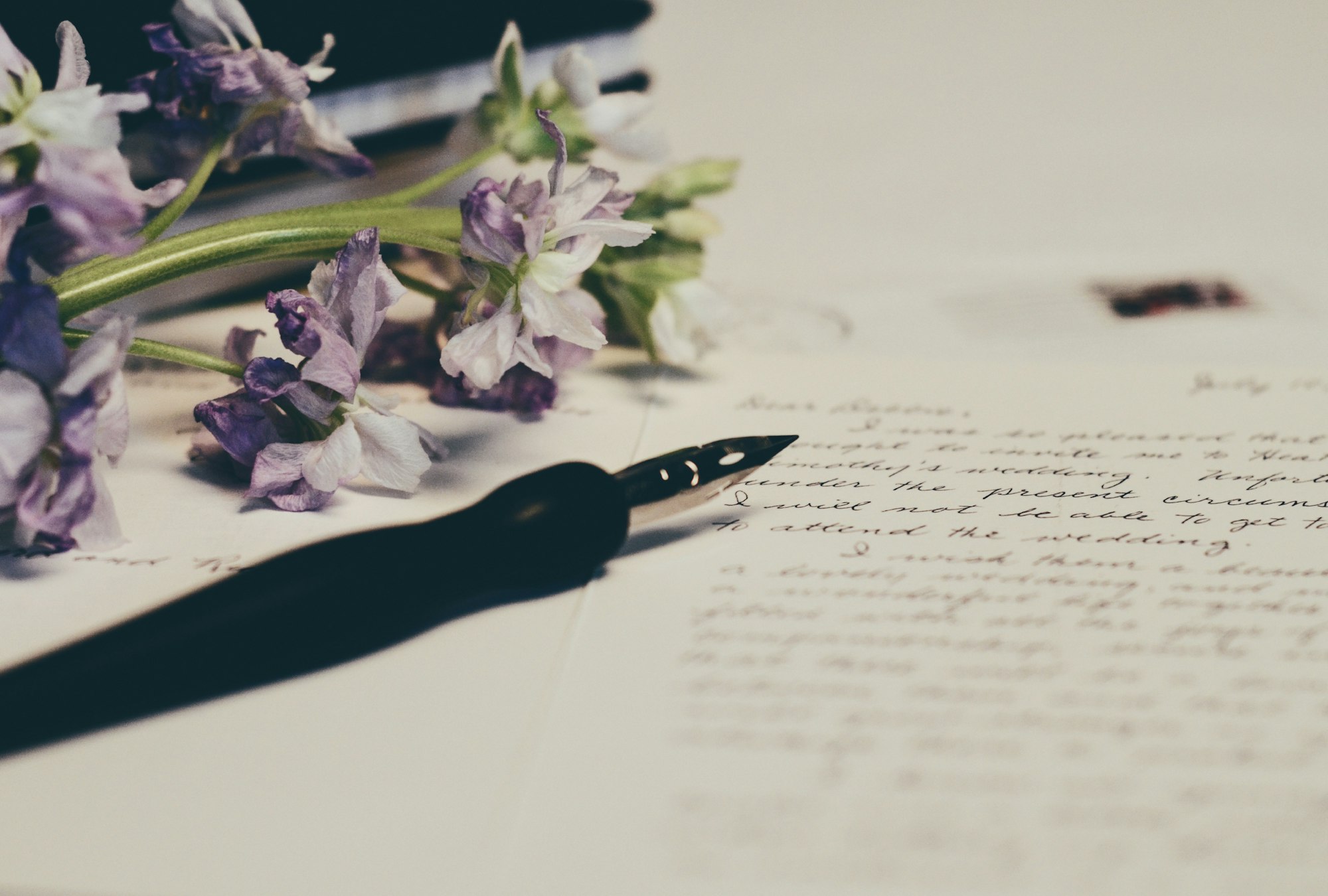
If writing fiction is your thing, Ruth has an insightful tip that will help you with your creative writing process.
'Don't always assume that you have the right character heading up your cast. It's great to take a balanced look at each one and discover what their angle is on the story. You may decide to look at a story from an investigative point of view of a journalist or police officer, you may switch from the protagonist to the antagonist, anything is possible. Explore and look for the unique angle.'
Ruth outlines how it can be beneficial for aspiring writers to look at their ideas, story and characters from a range of different angles. This allows you to get some perspective, take a step back and find opportunities to change, develop, evolve your writing.
9. Research!

Taking the time to really know your stuff is essential when writing! Ruth believes that research is an aspect of creative writing that should definitely not be ignored.
'Research, research, research. When you have a good idea, looking closely at all that surrounds the story is vital for it to stand up. Look at how the setting and era influence the characters lifestyles. What accents and colloquialisms do your characters use. Authenticity makes for quality non-fiction.'
10. Explore Ideas

Ruth encourages students to have faith in their ideas, no matter how big or small they are!
'No idea is not worth exploring. Give it a go. There are lots of ways a story can be told. Changing a location from the real world to a science fiction perspective or writing in poetry instead of prose are just a few ways a story can take flight. Keep writing your ideas down... You never know when they will come in handy.'
Whether you build upon your original idea of don't include it at all, exploring your ideas is always a beneficial part of the creative writing process.
Workshop with Articulate at London School of Mosaic
Ruth thrives through encouraging, inspiring and teaching students within her creative writing workshops.
She believes anyone with a passion for writing has what it takes to become a writer,
'Creative writing can be taught! Yes there are those that have what seems like a natural edge but nothing beats diligence.'
Whether you want to get into the specifics of how to introduce new techniques, skills and exercises into your creative writing process or you want to get inspiration and share ideas, Ruth is sure to have a workshop for you!

'New writers can often feel quite reticent about sharing their work in a public space; confidence to do so takes time, but that still doesn’t mean they should miss out on the opportunity to get some level of feedback.
Join Ruth and other like minded students in a creative writing workshop where you will have the opportunity to develop your understanding of creative writing techniques, exercises and approaches while also getting valuable feedback and advice.
Need more advice?
Everyone has their own reason for taking up creative writing. Perhaps you are a compelling storyteller and you want to develop your craft, or maybe you find freewriting a helpful form of therapy and beneficial for your mental health . Whatever your motivation is for creative writing, we hope you find these top 10 best creative writing tips for beginners helpful!
Take a read of some of our other amazing guides and best round ups below. We're sure you'll find something useful, oh - and don't forget to share the love.
- Top 10 Best Creative Writing Courses in London (2022 Update)
- Top 5 Tips for Learning How to Draw the Perfect Eye
- 8 Activities To Help You Enjoy Creativity and Wellness Week 2022
- Hand Building vs Wheel Throwing: Learn How to Make Pottery
- Top 10 Things to Do at the Weekend to Make Friends
Jerz's Literacy Weblog (est. 1999)
Short story tips: 10 hacks to improve your creative writing.
Jerz > Writing > General Creative Writing Tips [ Poetry | Fiction ]
Writing short stories means beginning as close to the climax as possible — everything else is a distraction. A novel can take a more meandering path, but should still start with a scene that sets the tone for the whole book.
A short story conserves characters and scenes, typically by focusing on just one conflict , and drives towards a sudden, unexpected revelation. Go easy on the exposition and talky backstory — your reader doesn’t need to know everything that you know about your characters.
- Get Started : Emergency Tips
- Write a Catchy First Paragraph
- Develop Your Characters
- Choose a Point of View
- Write Meaningful Dialogue
- Use Setting and Context
- Set up the Plot
- Create Conflict and Tension
- Build to a Crisis or a Climax
- Deliver a Resolution
1. Get Started: Emergency Tips
Do you have a short story assignment due tomorrow morning ? The rest of this document covers longer-term strategies, but if you are in a pinch, these emergency tips should help. Good luck!

- When the story begins , what morally significant action has your protagonist taken towards that goal ? (Your protagonist should already have made a conscious choice, good or bad, that drives the rest of the story.)
- What obstacles must the protagonist overcome in order to reach the goal? (Simply having a rival is not that interesting. Yes, Harry Potter defeats Voldemort, but first he has to mature into a leader with the moral clarity and teamwork skills necessary to defeat Voldemort. A short story can’t possibly tackle that kind of character development, but a character who faces internal obstacles and must negotiate messy moral trade-offs is more dramatically interesting than the hero in the white hat who has to use the right weapon to defeat the villain in the black hat.)
- What unexpected consequences — directly related to the protagonist’s goal-oriented actions — ramp up the emotional energy of the story? (Will the unexpected consequences force your protagonist to make yet another choice, leading to still more consequences? How does your protagonist change over the course of the story?)

- Omit travel scenes. (Save words. “Later, at the office…”)
- Omit scenes where character A tells character B exactly what we just saw happening to character A. (Omit redundancy. Focus on advancing your story. “As I filled Slim in on what I had just seen in the saloon, he dropped his show of apathy and his fingers clutched at his revolver.”)
- Facial expressions of a first-person narrator. (Narrators in stories aren’t looking at video being live-streamed from a floating drone that follows them around everywhere, so they can’t report “A smile lit my face” or “My eyes darkened.” See Writing Dialogue .)
- At the climax , what morally significant choice does your protagonist make? (Your reader should care about the protagonist’s decision, and ideally shouldn’t see it coming.)
An effective short story (or poem ) does not simply record or express the author’s feelings; rather, it generates feelings in the reader. (See “ Show, Don’t (Just) Tell .”)
Drawing on your own real-life experiences, such as winning the big game, bouncing back after an illness or injury, or dealing with the death of a loved one, are attractive choices for students who are looking for a “personal essay” topic. But simply listing the emotions you experienced (“It was exciting,” “I’ll never forget how heart-broken I felt,” “I miss her so much I’ll never the same without her”) is not the same thing as generating emotions for your readers to experience.
For those of you who are looking for more long-term writing strategies , here are some additional ideas.
- Keep a notebook. To R. V. Cassill, notebooks are “incubators,” a place to begin with overheard conversation, expressive phrases, images, ideas, and interpretations on the world around you.
- Write on a regular, daily basis. Sit down and compose sentences for a couple of hours every day — even if you don’t feel like it.
- Collect stories from everyone you meet. Keep the amazing, the unusual, the strange, the irrational stories you hear and use them for your own purposes. Study them for the underlying meaning and apply them to your understanding of the human condition.
Read, Read, Read
Read a LOT of Chekhov. Then re-read it. Read Raymond Carver, Earnest Hemingway, Alice Munro, and Tobias Wolff. If you don’t have time to read all of these authors, stick to Chekhov. He will teach you more than any writing teacher or workshop ever could. -Allyson Goldin, UWEC Asst. Professor of Creative Writing
2. Write a Catchy First Paragraph
In today’s fast-moving world, the first sentence of your narrative should catch your reader’s attention with the unusual, the unexpected, an action, or a conflict . Begin with tension and immediacy. Remember that short stories need to start close to their end.
“It is important to understand the basic elements of fiction writing before you consider how to put everything together. This process is comparable to producing something delectable in the kitchen–any ingredient that you put into your bowl of dough impacts your finished loaf of bread. To create a perfect loaf, you must balance ingredients baked for the correct amount of time and enhanced with the right polishing glaze.” -Laurel Yourke
3. Developing Characters
Your job, as a writer of short fiction–whatever your beliefs–is to put complex personalities on stage and let them strut and fret their brief hour. Perhaps the sound and fury they make will signify something that has more than passing value–that will, in Chekhov’s words, “make [man] see what he is like.” – Rick Demarnus
In order to develop a living, breathing, multi-faceted character, it is important to know way more about the character than you will ever use in the story . Here is a partial list of character details to help you get started.
Name Age Job Ethnicity Appearance Residence Pets Religion Hobbies Single or married? Children? Temperament Favorite color Friends Favorite foods Drinking patterns Phobias Faults Something hated? Secrets? Strong memories? Any illnesses? Nervous gestures? Sleep patterns
Imagining all these details will help you get to know your character, but your reader probably won’t need to know much more than the most important things in four areas :
- Appearance. Gives your reader a visual understanding of the character.
- Action. Show the reader what kind of person your character is, by describing actions rather than simply listing adjectives.
- Speech. Develop the character as a person — don’t merely have your character announce important plot details.
- Thought. Bring the reader into your character’s mind, to show them your character’s unexpressed memories, fears, and hopes.
For example, let’s say I want to develop a college student persona for a short story that I am writing. What do I know about her?
Her name is Jen, short for Jennifer Mary Johnson . She is 21 years old . She is a fair-skinned Norwegian with blue eyes , long, curly red hair , and is 5 feet 6 inches tall . Contrary to the stereotype about redheads, she is actually easygoing and rather shy . She loves cats and has two of them named Bailey and Allie. She is a technical writing major with a minor in biology. Jen plays the piano and is an amateur photographer . She lives in the dorms at the University of Wisconsin-Eau Claire. She eats pizza every day for lunch and loves Red Rose tea . She cracks her knuckles when she is nervous. Her mother just committed suicide.
4. Choose a Point of View
Point of view is the narration of the story from the perspective of first, second, or third person . As a writer, you need to determine who is going to tell the story and how much information is available for the narrator to reveal in the short story. The narrator can be directly involved in the action subjectively, or the narrator might only report the action objectively.
Yourke on point of view:
- First Person. “Unites narrator and reader through a series of secrets” when they enter one character’s perceptions. However, it can “lead to telling ” and limits readers connections to other characters in the short story.
- Second Person. “Puts readers within the actual scene so that readers confront possibilities directly.” However, it is important to place your characters “in a tangible environment” so you don’t “omit the details readers need for clarity.”
- Third Person Omniscient. Allows you to explore all of the characters’ thoughts and motivations. Transitions are extremely important as you move from character to character.
- Third Person Limited. “Offers the intimacy of one character’s perceptions.” However, the writer must “deal with character absence from particular scenes.”
5. Write Meaningful Dialogue
Make your readers hear the pauses between the sentences. Let them see characters lean forward, fidget with their cuticles, avert their eyes, uncross their legs . – Jerome Stern
Dialogue is what your characters say to each other (or to themselves).
Each speaker gets his/her own paragraph , and the paragraph includes whatever you wish to say about what the character is doing when speaking. (See: “ Quotation Marks: Using Them in Dialogue “.)
Write Meaningful Dialogue Labels
“John asked nervously” is an example of “telling.” The author could write “John asked very nervously” or “John asked so nervously that his voice was shaking,” and it still wouldn’t make the story any more effective.
How can the author convey John’s state of mind, without coming right out and telling the reader about it? By inference. That is, mention a detail that conjures up in the reader’s mind the image of a nervous person.
6. Use Setting and Context
Setting moves readers most when it contributes to an organic whole. So close your eyes and picture your characters within desert, jungle, or suburb–whichever setting shaped them. Imagining this helps balance location and characterization. Right from the start, view your characters inhabiting a distinct place. – – Laurel Yourke
Setting includes the time, location, context, and atmosphere where the plot takes place.
- Remember to combine setting with characterization and plot .
- Include enough detail to let your readers picture the scene but only details that actually add something to the story. (For example, do not describe Mary locking the front door, walking across the yard, opening the garage door, putting air in her bicycle tires, getting on her bicycle–none of these details matter except that she rode out of the driveway without looking down the street.)
- Use two or more senses in your descriptions of setting.
7. Set Up the Plot
Plot is what happens, the storyline, the action. Jerome Stern says it is how you set up the situation, where the turning points of the story are, and what the characters do at the end of the story.
A plot is a series of events deliberately arranged so as to reveal their dramatic, thematic, and emotional significance. – Janet Burroway
Understanding these story elements for developing actions and their end results will help you plot your next short story.
- Explosion or “Hook.” A thrilling, gripping, stirring event or problem that grabs the reader’s attention right away.
- Conflict. A character versus the internal self or an external something or someone.
- Exposition. Background information required for seeing the characters in context.
- Complication. One or more problems that keep a character from their intended goal.
- Transition. Image, symbol, dialogue, that joins paragraphs and scenes together.
- Flashback. Remembering something that happened before the short story takes place.
- Climax. When the rising action of the story reaches the peak.
- Falling Action. Releasing the action of the story after the climax.
- Resolution. When the internal or external conflict is resolved.
Brainstorming. If you are having trouble deciding on a plot, try brainstorming. Suppose you have a protagonist whose husband comes home one day and says he doesn’t love her any more and he is leaving. What are actions that can result from this situation?
- She becomes a workaholic.
- Their children are unhappy.
- Their children want to live with their dad.
- She moves to another city.
- She gets a new job.
- They sell the house.
- She meets a psychiatrist and falls in love.
- He comes back and she accepts him.
- He comes back and she doesn’t accept him.
- She commits suicide.
- He commits suicide.
- She moves in with her parents.
The next step is to select one action from the list and brainstorm another list from that particular action.
8. Create Conflict and Tension
Conflict is the fundamental element of fiction, fundamental because in literature only trouble is interesting. It takes trouble to turn the great themes of life into a story: birth, love, sex, work, and death. – Janet Burroway
Conflict produces tension that makes the story begin. Tension is created by opposition between the character or characters and internal or external forces or conditions. By balancing the opposing forces of the conflict, you keep readers glued to the pages wondering how the story will end.
Possible Conflicts Include:
- The protagonist against another individual
- The protagonist against nature (or technology)
- The protagonist against society
- The protagonist against God
- The protagonist against himself or herself.
Yourke’s Conflict Checklist
- Mystery. Explain just enough to tease readers. Never give everything away.
- Empowerment. Give both sides options.
- Progression. Keep intensifying the number and type of obstacles the protagonist faces.
- Causality. Hold fictional characters more accountable than real people. Characters who make mistakes frequently pay, and, at least in fiction, commendable folks often reap rewards.
- Surprise. Provide sufficient complexity to prevent readers predicting events too far in advance.
- Empathy. Encourage reader identification with characters and scenarios that pleasantly or (unpleasantly) resonate with their own sweet dreams (or night sweats).
- Insight. Reveal something about human nature.
- Universality. Present a struggle that most readers find meaningful, even if the details of that struggle reflect a unique place and time.
- High Stakes. Convince readers that the outcome matters because someone they care about could lose something precious. Trivial clashes often produce trivial fiction.
9. Build to a Crisis or Climax
This is the turning point of the story –the most exciting or dramatic moment.
The crisis may be a recognition, a decision, or a resolution. The character understands what hasn’t been seen before, or realizes what must be done, or finally decides to do it. It’s when the worm turns. Timing is crucial. If the crisis occurs too early, readers will expect still another turning point. If it occurs too late, readers will get impatient–the character will seem rather thick.- Jerome Stern
Jane Burroway says that the crisis “must always be presented as a scene. It is “the moment” the reader has been waiting for. In Cinderella’s case, “the payoff is when the slipper fits.”
While a good story needs a crisis, a random event such as a car crash or a sudden illness is simply an emergency –unless it somehow involves a conflict that makes the reader care about the characters (see: “ Crisis vs. Conflict “).
10. Find a Resolution
The solution to the conflict . In short fiction, it is difficult to provide a complete resolution and you often need to just show that characters are beginning to change in some way or starting to see things differently.
Yourke examines some of the options for ending a story.
- Open. Readers determine the meaning. Brendan’s eyes looked away from the priest and up to the mountains.
- Resolved. Clear-cut outcome. While John watched in despair, Helen loaded up the car with her belongings and drove away.
- They were driving their 1964 Chevrolet Impala down the highway while the wind blew through their hair.
- Her father drove up in a new 1964 Chevrolet Impala, a replacement for the one that burned up.
- Monologue. Character comments. I wish Tom could have known Sister Dalbec’s prickly guidance before the dust devils of Sin City battered his soul.
- Dialogue. Characters converse.
- Literal Image. Setting or aspect of setting resolves the plot. The aqueducts were empty now and the sun was shining once more.
- Symbolic Image. Details represent a meaning beyond the literal one. Looking up at the sky, I saw a cloud cross the shimmering blue sky above us as we stood in the morning heat of Sin City.
Got Writer’s Block?
The Writer’s Block Comprehensive Web site that offers solutions to beating writer’s block such as various exercises (not necessarily physical), advice from prolific writers, and how to know if you really have writer’s block.
Overcoming Writer’s Block Precise, short list of ways to start writing again.
Learn through Schooling Some online colleges and universities offer creative writing courses. Look for ones that offer creative writing courses that cover the plot and structure of short stories.
- Regular access to an instructor who is a published author, and a peer group that is motivated to read your drafts, might just be the extra motivation you need to develop your own skills.
- If you are counting on the credits transferring to help you complete an academic program, check with your university registrar.
Dec. 2002 — submitted by Kathy Kennedy, UWEC Senior (for Jerz’s Advanced Technical Writing class) Jan 2003 — edited by Jamie Dalbesio, UWEC Senior (for an independent study project with Jerz) May 2003 — edited by Jerz and posted at Seton Hill University Jan 2007 — ongoing edits by Jerz May 2008 — reformatted Sep 2010 — tweaked Writer’s Block section Mar 2011 — reformatted and further tweaked Jun 2017 — minor editing. Are “Keds” still a recognizable brand of kids shoes? Feb 2019 — Removed “Keds” reference, beefed up the “bad” shoes example; tweaked formatting.
Related Pages
- Show, Don’t (Just) Tell Don’t just tell me your brother is funny… show me what he says and does, and let me decide whether I want to laugh. To convince your readers, show , don’t just tell them what you want them to know. There. I’ve just told you something. Pretty boring, huh? Now, let me show you…
- Short Stories: Developing Ideas for Short Fiction A short story is tight — there is no room for long exposition, there are no subplots to explore, and by the end of the story there should be no loose ends to tie up. End right at the climax, so that the reader has to imagine how a life-changing event will affect the protagonist.
- Creative Writing Forum Have a story you’d like to share? Looking for feedback? Feel free to post in this creative writing forum.
- Technical Writing: What is It? Technical writing is the presentation of information that helps the reader solve a particular problem. Scientific and technical communicators write, design, and/or edit proposals, reports, instruction manuals, web pages, lab reports, newsletters, and many other kinds of professional documents.
- Usability Testing: 8 Quick Tips for Designing Tests If you already have a prototype and you want to conduct a usability test, and you’re eager to learn how to make the most of your opportunity to learn from your users, then this document is for you. Keep…
- Quotations: Integrating them in MLA-Style Papers The MLA-style in-text citation is a highly compressed format, designed to preserve the smooth flow of your own ideas (without letting the outside material take over your whole paper). A proper MLA inline citation uses just the author’s last name and the page number (or line number), separated by a space (not a comma).
- Titles for Web Pages: In-Context and Out-of-Context Most writers know the value of an informative title, but many beginning web authors don’t know that each web page needs two kinds of titles. The in-context (IC) title always sits at the top of a page, with the rest…
- Active and Passive Verbs Active verbs form more efficient and more powerful sentences than passive verbs. This document will teach you why and how to prefer active verbs. * The subject of an active sentence performs the action of the verb: “I throw the ball.” * The subject of a passive sentence is still the main character of the sentence, but something else performs the action: “The ball is thrown by me.”
- Blurbs: Writing Previews of Web Pages On the Web, blurbs are compressed summaries of what the user will find on the other end of a hyperlink. Good blurbs don’t harangue (“Click here!”) or tease (“Learn ten great tips!”). You’re reading a blurb now. If it helps you decide whether to click the link, it’s done its job.
- MLA Style: Step-By-Step Instructions for Formatting MLA Papers Need to write a paper in MLA format? This step-by-step includes images showing how to use MS-Word to create the title block, page layout, and works cited list.
- Writing Effective E-Mail: Top 10 Tips People decide to read or trash e-mails in seconds. From the subject line to the closing, offer a focused, scannable message that puts your reader’s needs first.
Archived discussion of “Short Stories: 10 Tips for Creative Writers”
852 thoughts on “ Short Story Tips: 10 Hacks to Improve Your Creative Writing ”
Pingback: 4 Reasons Why Short Stories Are So Hard To Write - Letter Review
Pingback: Top 14 cách viết truyện mới nhất năm 2022 - thaitrungkien
Pingback: trial and error – thegoldengarden
gorgeous gorgeous girls struggle to write short stories
bro what LMAOOOO
Wow. This was super helpful. I’m a writer myself and this was all very fun to read for me.
This really helped, Thank you
Thanks so much for this very informative article! It was exactly what I looking for today. These hacks will definitely help me to become a more creative writer online. Thanks for sharing :)
This is really helpful
i want to make an story
Could someone answer what was they made them a memorable?
Great job on theses tips. These will be with me for generations.
wow i love this
fishman is here to go fishing yeah yeah
Yes this is pretty cool, cool
Such helpful tips. Thank you.
ok yall, I need help with a school assignment.I have to write a story abouth anything and I don’t know how to start, can someone tell me how to start a story.
IDK, right here on this page I’ve put my “emergency tips,” which is the best advice I have to offer.
You have to come up yourself with what it is your protagonist wants and all the other details. One theory is “write what you know,” so that if you are a cancer survivor or grew up in a military family or you spend time around horses or at steel mills or playing basketball, then it makes sense to write a story that includes the details you already know.
Great writers steal. Find a story that you like, and mix it up to make it your own.
Pls help me I’m about to write a book the title “school day “help me with some content an stories. Thanks
i can tell you how to
Daniel thanks for insightful tips
hey anybody interested? to make a movie on me
Professional have to do that, plus you aren’t famous and nobody can reallly make a documentary on someone who hasn’t even shown their face on here
Pingback: How to Deliver a Short Gutsy Pitch to Entice Editors, Agents, and Readers | Joan Y. Edwards
So amazed by the info and help of this site. Well done to you all and thank you for furthering my knowledge of writing! Thank you again and great work!
Pingback: 10 fun things to do during quarantine | Grow your inner power
Pingback: Chá de Domingo #66: Diálogos » Pedro Cipriano | Página Oficial
Pingback: Creative Writing | Irvine Royal English
Pingback: Writing Portfolio | Irvine Royal English
Some great tips and advice here. I’ve been reading several websites about advancing ones creative writing career. Some blogs, websites and forum’s offer very different views on self-publishing. I’ve noticed websites and publishers with authority in the industry, strongly argue that a serious writer should not enter into self-publishing. This can be damaging and seen as vanity. What are your views on this? Thanks!!
Thank you so much! These tips are awesome. I’m planning on writing a short book and this cleared up a lot of what I needed.
I am happy. It’s Give me good information and tips about how to write a short stories.
Based on how many times I had to say, “OMG, that’s so truuuue!”, this one’s a really great article. Worth the read!
I am a compassionate interested person wanting to engage in writing i have always had this itch if you like to write stories from the early twenties in my life this itch to write has always been there about stories that the average person can relate to and therefore become an interested reader , however , i am now at a point in my life that i am in a position to put more time into learning the craft of writing stories that have a mixture of fiction and fact and that i may also write a memoir because that is the one thing i know will be interesting . Kind regards Mark
Quite helpful ideas. The site is shown on html though, is it right? Creative writing techniques are helpful ways to write, but more important thing is to acquire a writing habit.
Pingback: Comment écrire une histoire courte: 10 étapes - logiciel pour ecrire un livre sur ipad - Comment écrire un livre ?
Very educative Thanks
Pingback: Controversial Content in YA Literature: A College Professor and Homeschooling Parent Answers an Aspiring Teen Writer’s Questions | Jerz's Literacy Weblog
this is ssoo cool le epic le epic
hey, hope everyone is copacetic. have been trying to improve my writing but still don’t see any improvement in my struggle, is there anyone who help me to overcome my this issue, hope you people will help me because most of you have experience. keen to write as good story writter and also interested in writing novels but suffering from writing. help me
I am elated that I have come across this.
way of navegating around. The concept of a short story is that something goes wrong and the character must fix it, even if it is a Utopian world. There has to be something that goes wrong or has been wrong the entire time. Examples of this is that the authority that everyone trustic began putting random people in prison. Another would be that everyone relies on th main character for protection becuase he or she has a special ability but the main character doesnt know how to use this ability.
oh great. it’s NAVIGATING, by the way.
I make typographical errors, too.
I am mark thank you
Gave me a really good help …… thanks a lot
Pingback: Short Story Writing , Five Useful Websites ⋆ Cavewoman ⋆ Bernie Delaney
thanks so much! its verry help full.
I have a love story which is inspired every people like any age in human life but skill is concurrence and disburse with sparrow and peacock animals situation and also crow life…… I just want to know the right concern person email ID to send the story details and further I suggest a song like tital song & stage show song, said song.
Thanks & regards Dhananjay bathe
now this is epic
Thank you Kanye very cool
Pingback: Chá de Domingo #66: Diálogos - Pedro Cipriano
Pingback: Chá de Domingo #70: Escrever um Conto - Parte 4 - Pedro Cipriano
Pingback: كيف تكتب قصة قصيرة - موضوع
Pingback: Flipped Classes: Omit Housekeeping Mechanics from Recorded Lectures to Lengthen Their Shelf-life | Jerz's Literacy Weblog
hey who are u cool?
this is so very cool i cannot believe it
Pingback: Where Do Good Stories Come From? Part II | MagnaContent
Mary became a workaholic which made her.children unhappy.so they went to live with their dad. Then Mary moves to another city and got a new job. Her ex-husband and Mary agreed to sell their old house. Mary then met a psychiatrist and fell in love with him. But then her ex-husband came back to her and she accepted him back- at first – but then rejected him.
So she committed suicide. Then her ex-husband commited suicide. Her parents buried her corpse in the basement.
I dont think this form of the making a character really helps. First off, people dont like characters who are strong and can do anything, they like characters that have weaknesses that slow them down such as being blind or not being able to walk. They idea must be something that uses this weakness. The character must also be or become more capable of doing things towards the end. Such as if they couldnt see, they would develop a way of navegating around. The concept of a short story is that something goes wrong and the character must fix it, even if it is a Utopian world. There has to be something that goes wrong or has been wrong the entire time. Examples of this is that the authority that everyone trustic began putting random people in prison. Another would be that everyone relies on th main character for protection becuase he or she has a special ability but the main character doesnt know how to use this ability.
Hope this helps anyone that is still confused!
Re #7: 1. Your quote by Burroway should be Janet Burroway not Jane. Fact-checking us vital. 2. Story elemrnts for developing actions and their end results should be Exposition, not explosion. As it stands this is false and misleading information that will trip many unsuspecting/new writers up.
Thanks for noting the typo — I fixed it. I am not sure that exposition is, by its nature, very hooking, so I’m leaving that as is.
I really like and value this page, I my self a middle school-er found it helpful w/ saying that i already new all the tips, but alas it was still a great reminder. Also remember to keep you sentence, punctuation and dialog varied. This will help keep the reader interested
Pingback: 4 Powerful Story Writing Tips for Beginners
Just about to create a short story and it has been a while, great advice to get me back in the mood.
Would love to write short stories but just can’t get myself started. Needing an affordable directed course with assignments and deadlines and tutorial comment feedback. OU looks good but WAY beyond my means. Have plenty of ideas and have read copiously (and still am). This site particularly helpful, thank you. Ray
It is all quite informative.
Filled with error Syed.
Pingback: Short Story Tips: 10 Ways to Improve Your Creative Writing – Learn It Easy
With creative writing, as with any kind of writing, your reader is your most important consideration. You need to know and understand whom you’re writing for if you’re to do a good job of keeping them interested. Thanks for sharing a great post.
I think you should think about what your characters very well and not try to change things about them.
I have my english term exam tmrw and these tips have givn me a good idea of short story writing~though I m good at writing but short story was not my speciality… So, thanx for these excellent tips… You r jst gr8!!!
A good writeup. Love it.
Pingback: Finding Your Writing Niche - Marcie Writes
Pingback: How to Get More Creative When Writing Fiction – CHO LITERARY BLOG
Pingback: Learning to Write All Over Again | Some Old Dude
Pingback: Short Story Worksheet – francismyron
Pingback: When Bad Things Happen: How To Get Through It As A Family | Successful Mommy Advice
Pingback: Are “Keds” still a recognizable kid shoe brand? | Jerz's Literacy Weblog
Pingback: The Power of Shorts – The Write Web
Great! Thanks so much! This will help me in my Creative Writing class I am taking this summer!
Terrible advice
To what, exactly, are you referring Tyler?
Dennis you’re the writer now?
I did assign the topic and format to a student in my technical writing class, I served as the student’s client, and I have been updating and maintaining this document since 2002.
Noice? Ohhh Marilyn
Really helpful
Elated??? Look at # 7 haha shd commits duicide but moves back with parents lol Also re resolution lol. Conflict is resolve not resolved lol. These are jyst drongos copying and plagiarising other peoples’ work and not getting it right.
It was informative and educating.
Pingback: 3/21/17 Daily Journal Entries – Elaine Tcholakov
RT @Chris_Oldham: Need a hand polishing up your short story? Try these emergency tips! https://t.co/5XrFzKU5rH #amwriting https://t.co/Dgfb…
Need a hand polishing up your short story? Try these emergency tips! https://t.co/5XrFzKU5rH #amwriting https://t.co/DgfbrqAotX
10 ways to improve your short stories. https://t.co/UJMpkku02Y #writing #amwriting #shortstory
cannot read so much but i think its good for the ones who have so much time to read.
The blank page is not taunting me any more, thank you. PS have you ever read Amanda McKittrick Ros – the greatest worst writer who ever lived? I think she should be added to every creative writing curriculum.
Pingback: A Quick(ish) Glance at the Short Story – Once Upon A Mind
Pingback: 150 Resources to Help You Write Better, Faster, and More Persuasively – khanhthucmk
Pingback: On Short Stories and Prequels in Fantasy: Don’t Learn to Walk By Running a Marathon | L.M. White
Short Story Tips: 10 Ways to Improve Your Creative Writing | Jerz’s Literacy Weblog https://t.co/nmUAzfd3v0
Short Story Tips: 10 Ways to Improve Your Creative Writing | Jerz’s Literacy Weblog https://t.co/RfgNudzaL4
Short Story Tips: 10 Ways to Improve Your Creative Writing | Jerz’s Literacy Weblog https://t.co/qqJKdqlDG1
You spelt a couple of words wrong mate
It’s possible. If you spotted any errors, I’d welcome specific notes. Which words?
Ur dumb Rohan
lien delicieux >> Short Story Tips: 10 Ways to Improve Your Creative Writing https://t.co/YAOYCeD4xJ
RT @carolinezoids: Looking for #shortStory tips, I found this great article by @DennisJerz: 10 ways to improve your #creativeWriting: https…
Looking for #shortStory tips, I found this great article by @DennisJerz: 10 ways to improve your #creativeWriting: https://t.co/uzNG1NrfVC
RT @Dream_Craziness: Short Story Tips: 10 Ways to Improve Your Creative Writing | Jerz’s Literacy Weblog https://t.co/QgVX3gUEZL #writingtip
Short Story Tips: 10 Ways to Improve Your Creative Writing | Jerz’s Literacy Weblog https://t.co/QgVX3gUEZL #writingtip
Leave a Reply Cancel reply
Your email address will not be published. Required fields are marked *
Save my name, email, and website in this browser for the next time I comment.
Home › Study Tips › Creative Writing Resources For Secondary School Students
11 Creative Writing Tips To Help Unlock Your Creativity
- Published October 31, 2022

Table of Contents
Creative writing is hard. It’s hard enough to come up with an idea, but it’s even harder to execute in a way that engages and entertains the reader.
Many people think they don’t have what it takes to be a creative writer. They believe that only certain people are born with the talent to write well.
We’re here to tell you that’s not true. Anyone can be a great creative writer if they learn how to tap into their creativity and use practical writing tips.
Our creative writing summer schools give students access to 1:1 personalised tutorials with expert creative writing tutors. To help them unlock their inner potential.
This guide will discover practical Creative Writing tips to help you write better and more easily.
1. Hook Readers With Your Character’s “Why” At The Very Beginning
Great stories are not wild creations. Instead, they follow a specific formula that works. For instance, did you notice how record-breaking stories often show their main characters’ motivations and dilemmas within the first few scenes?
- Simba is declared the future King of Pride Rock. But there is one who refuses to bow to this acknowledgement. Will Simba succeed in taking his rightful place in the Circle of Life?
- The arrival of Mr Bingley, a single young man with good fortune, is announced in the relatively poor Bennet household. Will any of the Bennet sisters succeed in alluring him to marriage, inadvertently saving them from destitution?
- Humanity is under threat due to a powerful stone called the “Tesseract.” Are there heroes powerful enough to save them from extinction?
- Elsa accidentally hits Anna with her frozen power. Must she hide forever for fear of hurting those she loves most?
- Planet Earth is dying due to dwindling resources and overpopulation. Jake Sully is called to replace his brother on a mission to take a promising energy source from another planet. But, will Jake allow the genocide of an innocent, native race to save his world?
If you keep your readers confused and wondering, “Why am I reading this book in the first place?” They’ll most likely lose interest. Or if they stay hooked due to curiosity, they won’t have an emotional connection with your main character.
Because they have no idea why they should care about your main character in the first place!
So let your readers relate to your character’s motivations. And they’ll be eager to walk with your characters through the ups and downs of the story.
2. Get Into The Habit Of Reading (If You Haven’t Already)
It’s not enough to keep writing. You also need to keep reading different types of creative writing to improve your skills. Reading can help you:
- Understand how different writers tell their stories.
- Learn new words and how to use them in sentences.
- Become familiar with sentence structures, grammar rules, and punctuation.
- Get different ideas on how to start and end your story.
- Understand what works and what doesn’t work in a story.
Creative writers are also great readers! If you want to dig deeper and love reading then make sure to flick through our creative writing examples so you can pick up more knowledge and skills.
3. Dissect Good Stories To Imitate Good Practices!
You read a story. After finishing it, you couldn’t get it out of your head. And you ruminate over it days, and even weeks, after.
What’s the secret sauce?
The only way to find out is if you dissect it. So answer these follow-up questions to help you create your inspiration board.
- Who is your favourite character? List down the essential points of their character development.
- What are your Top 10 favourite sentences/lines? Why did it strike you? Why is it unique?
- List down your Top 3 scenes. How did it contribute to the story? Why are they your favourite?
- What similes and metaphors added the most flavour to the scene/dialogue?
- Who is the side character you relate to the most? What characteristics do they have that show their humanity? How did they reveal it?
- What are your favourite chapters? How were they structured?
- Do you notice a similar formula at the beginning and end of each chapter? How do they flow smoothly from one to the other?
- What’s the first and last sentence of the entire story? Did it help in hooking the reader and in delivering a lasting effect? If yes, how so?
The more you answer these questions, the better you can detect subtle patterns and formulas that work together in bringing the characters and their stories to life. If you’re looking to further your university knowledge, browse the best UK universities for creative writing .
4. How Would You Rewrite Badly Written Stories?
You let a book down. You’re frustrated because the character wasn’t as developed as you wish they were! Or that the ending was way too illogical to make sense of.
Do you feel you’ve just wasted N number of hours reading a sub-par story? Your reading efforts don’t have to go to waste! Why? Because you can learn from other people’s mistakes.
In fact, it’s a better, less-damaging way of learning than having to learn the hard way from your own mistakes! These guide questions can help you in this task:
- How would you go about it if you could rewrite a scene, character, or story?
- What are the missing details that you would’ve added?
- Do you feel there were too many unnecessary subplots or characters in the story? How would you have trimmed it down to focus on the essential plot points?
- Did the author try to stuff in too much information all at once without pacing it out well? What would you have done differently to make the story flow better?
- Do you feel that the story was too predictable or even unbelievable? If so, how would you have made it more interesting and believable?
5. Make Your Characters Relatable
We read stories because we can sympathise with the characters. They allow us to see ourselves in their situations and how they handle their woes and joys.
So write your characters in a way that makes them relatable. Make your reader root for them.
It doesn’t matter if your characters are animals, inanimate objects, or aliens. What matters is the humanity at heart. These are some of the attributes that make a character relatable:
- They have believable flaws and strengths (e.g., they can’t be superhumanly perfect or mind-numbingly stupid all the time).
- Your characters need to grow and change as the story progresses (e.g., they overcome their weaknesses or learn from their mistakes).
- Do they exhibit human emotions (e.g happiness, sadness, anger, love, fear) in response to the events that happen to them?
- Give your character realistic motivations and goals. If they’re willing to risk their lives, there must be a convincing motive.
- Make realistic and consistent interactions between the character and the world around them. Don’t make them walk long distances without signalling their exhaustion, thirst, etc. Unless they have abilities to bypass such weaknesses.
- Each of your characters needs to have a backstory, even if you don’t share it with your audience. This way, your characters come alive independent of you!
If you want to enhance your writing skills, navigate to our 308 creative writing prompts , which should come in handy!
6. Don’t Try To Get It Perfect When Writing The Draft
Not even the greatest creative writer in the world publishes their first draft. But wait, isn’t this common sense? So why is it important to reiterate?
To eliminate the fear of the blank page.
Although everyone knows the first draft is never the final product for publishing, we act as if it is . We want to get it perfect, and this is what paralyses us from writing altogether.
The goal of the first draft is to get your story down on paper (or computer). Then, you can fix all the errors later. Just let the words flow without much worry about spelling or grammar.
You can always get back to it later during the editing phase. For now, keep writing and let your story unravel itself from within your imagination.
7. Incomplete Idea? Write It Down Anyway!
A great story can come from a simple news article you read this morning. Or from a creative writing prompt that stimulated your imagination. So always keep a writing pad or app around.
Whenever something pops up in your mind, jot it down. It doesn’t matter whether it’s a good or bad idea. The present moment is hardly the best judge to make the distinction. Write it down anyway! You can always revise it. Or add to it later.
You never know when inspiration might hit and help you complete that story!
8. Identify Your Purpose
What message are you trying to express? At the end of the day, readers will want to learn something after reading your story. So if you wish to raise awareness about a social issue or promote a cause, your story should have a purpose.
Your message doesn’t need to be in-your-face obvious. It could be subtle and woven into the fabric of the story.
A story without a message will feel empty. And you may feel flat writing it because there’s no personal conviction behind it. So self-reflection is paramount when writing creatively.
9. Determine Your Audience
As you write your story, taking a step back and thinking about your audience is essential. This will help you determine the following:
- The tone of your story
- The level of detail to include
- The type of language to use
- What information to share (and what to leave out)
Who is your audience? If you’re writing a children’s story, you’ll want to use simple language and avoid violence or other mature themes.
On the other hand, if you’re writing for a more general audience, you have more freedom to explore different topics and use a variety of language styles.
Keep your audience in mind as you write to better engage them with your story. Remember, if you try to write for everybody, you’ll end up writing for nobody!
10. Learn From Expert Tutors
One of the best ways to improve your creative writing skills is to get feedback from an expert. Creative writing tutors can help you with the following:
- get inspiration from other writers
- develop your ideas further
- structure your story
- create your characters
- find the right words to express your thoughts
- create tension and turning points in your plot
- publish your work (if you’re planning to)
If you’re serious about improving your creative writing skills, consider getting professional help. You may want to check out our Creative Writing Summer School .
Here you’ll experience 1:1 tutorials in prestigious universities such as Oxford and Cambridge.
Creative writing tutors can provide massive acceleration in your creative writing journey!
11. Get Feedback From Others
Aside from professional feedback, feedback from friends, family members, and other writers is beneficial. Here are some things to keep in mind when getting feedback:
- Be open to constructive criticism. Don’t take it personally if someone points out flaws in your work. Instead, use their feedback to help you improve your story.
- Don’t be afraid to ask for specific feedback. If you’re unsure what areas need improvement, ask your reader to focus on a particular aspect of your story (e.g., the plot, characters, dialogue, etc.).
- Be aware of bias. Someone you’re close to may be more likely to praise your work than give constructive feedback. So take their input with a grain of salt.
- Don’t take too long to revise. After you’ve received feedback, it’s essential to act on it quickly. If you wait too long, you may forget what was said or lose motivation to make changes.
- Be selective with who you take feedback from. Not everyone will have helpful things to say. So it’s important to choose wisely when seeking feedback for your story.
After getting feedback, you’ll better understand how your audience might react to your story. Therefore allowing you to revise as needed.
What Makes an Excellent Creative Writer?
Here are 3 easy and practical tips on what makes an excellent creative writer:
- An excellent creative writer practices regularly. Writing is a skill, and like any other skill, it takes time and practice to master. The more you write, the better you’ll become at it. So make use of creative writing exercises!
- Creative writers need to love experimentation. Don’t be afraid to try new things and explore different styles. The only way to find your voice as a writer is to keep writing.
- And finally, an excellent creative writer is always learning. Whether it’s attending workshops, reading books on writing, or taking online courses, there are many ways to improve your craft.
So if you want to be a good writer, start by committing to lifelong learning. Creative writing is a journey, not a destination. There’s always room for improvement!
What Are The 6 Characteristics of Quality Creative Writing?
1. focus for clarity.
The first characteristic of creative writing is focus . An excellent writer knows how to focus on their story. Excluding anything that doesn’t contribute to the plot.
In other words, they know how to edit out the “fluff” and get straight to the point. This can be difficult, especially if you’re attached to your story. But if you want to improve your writing, it’s important to learn how to focus on the essentials.
Creative writers also have a good sense of what their readers find important. As a result, they know how to prioritise information so that their story is clear and concise. This is especially important when writing for a specific audience or market.
2. Emotionally Captivating
The second characteristic of quality creative writing is emotion. A good creative writer knows how to stir emotions in their readers. They create characters and situations that the reader can relate to.
They also use descriptive language to paint a picture in the reader’s mind. This allows the reader to feel like they are part of the story. As if the reader is right there in the character’s shoes.
It makes the story memorable and enjoyable.
3. Development For Engrossing Read
The third characteristic of creative writing is development. A good writer knows how to develop their characters and story so that reading is engrossing and satisfying.
They do this by creating believable and well-rounded characters. They also craft a plot that is both compelling and credible. And they use dialogue and description effectively to bring their story to life.
4. Coherence For Smooth Flow
The fourth characteristic of creative writing is flow. A good writer knows how to create a cohesive story that flows smoothly from beginning to end.
This means using transitional phrases and sentence structures effectively. It also means choosing the right words to express your thoughts and ideas. So that the readers feel the story sticks together as one logical whole.
5. Language
The fifth characteristic of creative writing is language use. A good writer knows how to use language effectively to create the desired effect.
They know which words to use and when to use them. They also know how to put together sentences excitingly and creatively. This allows the writer to communicate their thoughts and ideas clearly and engage the reader on a deeper level.
6. Error-Free
The sixth and final characteristic of creative writing is accuracy. A good writer strives for perfection and pays attention to detail. They proofread their work carefully to ensure no grammar or spelling errors.
This attention to detail shows in the quality of the finished product. Hence, it’s essential to take the time to revise and edit your work before you publish it.
Creative writing is a skill that can be learned, honed, and mastered with practice. You don’t need to have a natural gift for storytelling – you need patience and the willingness to learn from your mistakes. And if creative writing is something you’re looking to take further, then check out the a-level requirements for creative writing at top UK universities.
By following our creative writing tips and practising regularly, you, too, can write stories that engage and entertain your readers. So what are you waiting for? Start writing!
Related Content
11 tips to improve your research skills for academic success.
The 'plot hook' in this example is 'What could possibly go wrong?'.
Establish the time and place, as well as the general situation. This can also be used to help develop a suitable mood or atmosphere. It can sometimes help to use a familiar place that your reader can relate to in some way. At this stage, you need to 'set up' the story and begin to introduce the main character(s).
Fiction trigger (or inciting incident)
Use your narrator to tell of an incident or event that the reader feels will spark a chain of events. This helps make the reader feel that the story has really started. From this point, life cannot be quite the same for your main character (that is your protagonist). There is a problem that has to be faced and overcome.
The fiction trigger can be an event that really starts the story. It will develop from the 'plot hook'. If the story is about a day out at the zoo, then maybe an animal has escaped. If it is about a robbery, it might be the event that makes a character consider carrying out a robbery; and if it is about an accident, it will be the event that causes it to happen.
Keeping up the momentum (plot development or rising action)This section builds the tension – keeps the reader absorbed and guessing where it will all lead.
This is where you will move the story forward and will use lots of techniques to keep the reader guessing, 'What will happen next?!'
The problem reaches a head, with suspense creating lots of tension for the reader– showing the reader the possible result of what has come before.
This is not the end of your story – not quite. It will be the key event but your protagonist will, somehow, overcome it and all will be well.
Conclusion (the resolution)
This must leave your reader with a sense of satisfaction, or it could be a twist in the tale leaving questions that linger in the mind.
This is the ending of your story – where all loose ends are tied up to the satisfaction of the reader. A good story will cause the reader to go, 'Hmm – I liked that' or even 'Wow'
By following this story structure, and planning under each of the above headings, you should be able to come up with a tense plot for your own story, one that will engage and absorb your reader.
Writing techniques
Throughout your own story, you will also need to use writing techniques that will work to keep your reader engaged and absorbed. An important skill is to put clear images of the setting and characters in your reader’s mind, as well as to create a sense of atmosphere that suits each part of the story.
- Narration - the voice that tells the story, either first person (I/me) or third person (he/him/she/her). This needs to have the effect of interesting your reader in the story with a warm and inviting but authoritative voice.
- Description - describing words such as adjectives close adjective A word which describes a noun or pronoun. , adverbs close adverb An adverb gives more information about the verb, an adjective or another adverb. , similes close simile A literary technique where a comparison is made between two things using ‘as’ or ‘like’. and metaphors close metaphor Makes a direct comparison by presenting one thing as if it were something else with the characteristic. For example describing a brave person as a lion. that add detail. This is told by the narrator. It helps engage readers by creating vivid pictures and feelings in their 'mind’s eye'.
- Dialogue - the direct speech of characters, shown inside quotation marks. We all judge characters by what they talk about and by the way they speak. This makes dialogue a key technique for creating interest and realism.
- Alliteration - repetition of the same beginning sounds in nearby words.This can create a useful emphasis, maybe to highlight a sound or movement, or to intensify feeling or even to bind words together.
- Connotation - a word’s meaning can be literal, as in 'It looked like a cat', or it can create connotations as in 'As soon as the food reached the table, the boy pounced on it like a cat.' A connotation is a meaning created by a special use of a word in a particular way or context. It works by adding some kind of emotion or a feeling to a word’s usual meaning. All literature depends upon using language that creates connotations. They engage the reader because they evoke reactions and feelings.
- Pathetic fallacy - personification is a kind of metaphor and when nature is described in this way, it is called a use of pathetic fallacy. This can help suggest a suitable atmosphere or imply what the mood of the characters is at a certain point, eg in a ghost story, the storm clouds could be said to 'glower down angrily upon the group of youngsters'. A pathetic fallacy can add atmosphere to a scene. It can even give clues to the reader as to what is to come, acting as a kind of foreshadowing close foreshadow Hint at something that will happen later and have greater significance .
- Personification - this is a technique of presenting objects as if they have feelings, eg 'the rain seemed to be dancing merrily on the excited tin roof.' This creates a sense of emotion and mood for the reader.
- Repetition - the action of repeating a word or idea. This can add emphasis or create an interesting pattern of sound or ideas.
- Onomatopoeia - use of words which echo their meaning in sound, for example, 'whoosh' 'bang'. Using this can add emotion or feeling that helps give the reader a vivid sense of the effect being described.
- Simile - a kind of description. A simile compares two things so that the thing described is understood more vividly, eg 'The water was as smooth as glass.' (Hint - 'like' or 'as' are key words to spot as these create the simile). A simile can create a vivid image in the reader’s mind, helping to engage and absorb them.
- Symbolism - we grow up learning lots of symbols and these can be used in stories to convey a lot of meaning as well as feeling in a single idea or word, eg a red rose can symbolise romantic love; a heavy buckled belt can hint at the power held by the character; an apple can even symbolize temptation if it is used in a way that the reader links to the apple that tempted Eve in the biblical Garden of Eden.
- Impact - symbols help writers pack a lot of meaning into just a single word. They work to engage the reader, too, for the reader automatically gets involved in working out the meaning.
Examples of narration
First person narrator.
I held on to the tuft of grass and slowly looked down - I was too shocked to speak. One moment I had been strolling along the cliff with Vicki, the next I was hanging over the edge. And where was Vicki?
The only thing you shouldn't do is swap the narrative point of view during the story - don’t start with 'I' and then switch to 'he', as it is likely to confuse your reader.
Third person narrator
Steve held on to the tuft of grass and slowly looked down - he was too shocked to speak. One moment he had been strolling along the cliff with Vicki, the next he was hanging over the edge. And where was Vicki?
Ending a short story
The ending of a story doesn't necessarily have to be happy but it has to make sense in a way that ties up what has happened.
There are different types of story endings, for example:
- The cliff-hanger - this isn’t an ending as such, it’s a way of tempting the reader to read the next chapter or instalment. Charles Dickens wrote his chapters like this as they were originally published in magazines in serial form. For example, does the spy manage to stop the bomb in time?
- The twist-in-the-tale - the reader will feel fairly sure about the ending, but in the final part everything changes and we are surprised. For example, we learn that it isn’t a bomb after all, it’s a birthday present!
- The enigma ending - the story stops, but the reader is left a little unsure what will come to happen, yet is intrigued by the possibilities - and still feels satisfied. For example, the bomb is defused and everyone is safe, but then an army commander reports the theft of another bomb… only this time twice as powerful.
There are many possibilities; but there are two endings you should try to avoid:
- The trick ending - a bomb will inevitably explode and as it does, the narrator wakes up - it was all a dream. This is too clichéd and unsatisfying for modern readers.
- The disconnected ending - the secret agent suddenly stops worrying about the bomb, retires, and goes off to play golf. Readers don't like this because the ending has nothing to do with the story – very unsatisfying.
Whatever kind of story you write, work out a satisfying ending and include it in your plan.
Writing that is creative and imaginative needs to be entertaining. You need to experiment a little and not be frightened to try something new.
What might you write about if the following tasks came up in an exam? Take a few minutes to think about different ways you could interpret the task, and maybe sketch a quick plan for your best idea.
- The Best Day of My Life
- The Mysterious Door
- Never Again
- Stormy Weather
- How to be a Hero
- Sunday at the Beach
- My Life as an Expert
- Greetings from the Future
- What I REALLY Learned at School
More on Writing skills
Find out more by working through a topic
How to write an essay
- count 5 of 7
How to write a conclusion to an essay
- count 6 of 7
Writing skills
- count 7 of 7
Writing skills - tone & style
- count 1 of 7
- Skip to primary navigation
- Skip to main content
- Skip to primary sidebar
- Skip to footer
Don't Miss a Post! Subscribe
- Guest Posts

- Educational AI
- Edtech Tools
- Edtech Apps
- Teacher Resources
- Special Education
- Edtech for Kids
- Buying Guides for Teachers

Educators Technology
Innovative EdTech for teachers, educators, parents, and students
30 Creative Picture Writing Prompts
By Med Kharbach, PhD | Last Update: May 27, 2024
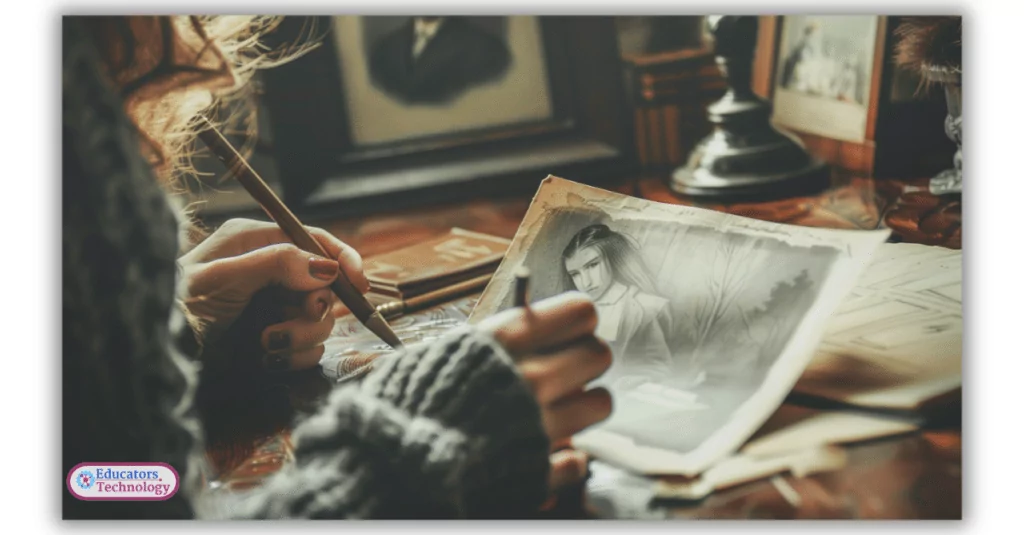
Picture prompt writing, as Carp et al. (2010) define it, is a technique that uses visual stimuli to inspire and guide students’ writing. Picture prompts are an excellent tool for overcoming writer’s block. They provide a visual stimulus that can ignite creativity and help students generate ideas and organize their thoughts, making the writing process more approachable and less intimidating.
In today’s post, I share practical tips for effectively using picture prompts in writing. I will start with some tips on how to best utilize picture prompts, discuss their numerous benefits, and provide examples to get you started. Additionally, I encourage you to read the references at the bottom of this page for a deeper understanding of this powerful educational tool.
All the picture prompts in this post are available for free download in PNG format. You can easily access and use these resources to enhance your teaching and engage your students in creative writing activities.
What Are The Benefits of Picture Writing Prompts?
The importance of picture writing prompts is well documented in the research literature. These visual tools have been shown to significantly enhance student engagement and creativity in writing tasks. By providing a concrete image to spark imagination, picture prompts help students of all ages and proficiency levels generate ideas more easily, organize their thoughts coherently, and express themselves more vividly.
Picture writing prompts offer a range of benefits supported by various studies:
- Enhanced Engagement and Motivation : Picture prompts capture students’ interest and motivate them to write, as they provide a stimulating visual context (Mukramah et al., 2023; Gonchar & Schulten, 2017).
- Improved Idea Formulation : Visual prompts help students generate and organize ideas more effectively, leading to richer and more detailed writing (Mukramah et al., 2023; Carp et al., 2020).
- Support for Diverse Learners : They are particularly beneficial for English Language Learners and students of different age groups, helping them overcome language barriers and express their thoughts clearly (Gonchar & Schulten, 2017).
- Encouragement of Creative Thinking : Picture prompts inspire creative storytelling and imaginative responses, allowing students to explore different narrative possibilities (Gonchar & Schulten, 2017).
- Facilitation of Critical Thinking : Analyzing and interpreting images encourages students to think critically about what they see and how they translate those thoughts into writing (Mukramah et al., 2023; Carp et al., 2020).
- Ease of Use Across Subjects : These prompts can be used in various subjects, not just language arts, to inspire writing related to science, social studies, and more (Gonchar & Schulten, 2017).
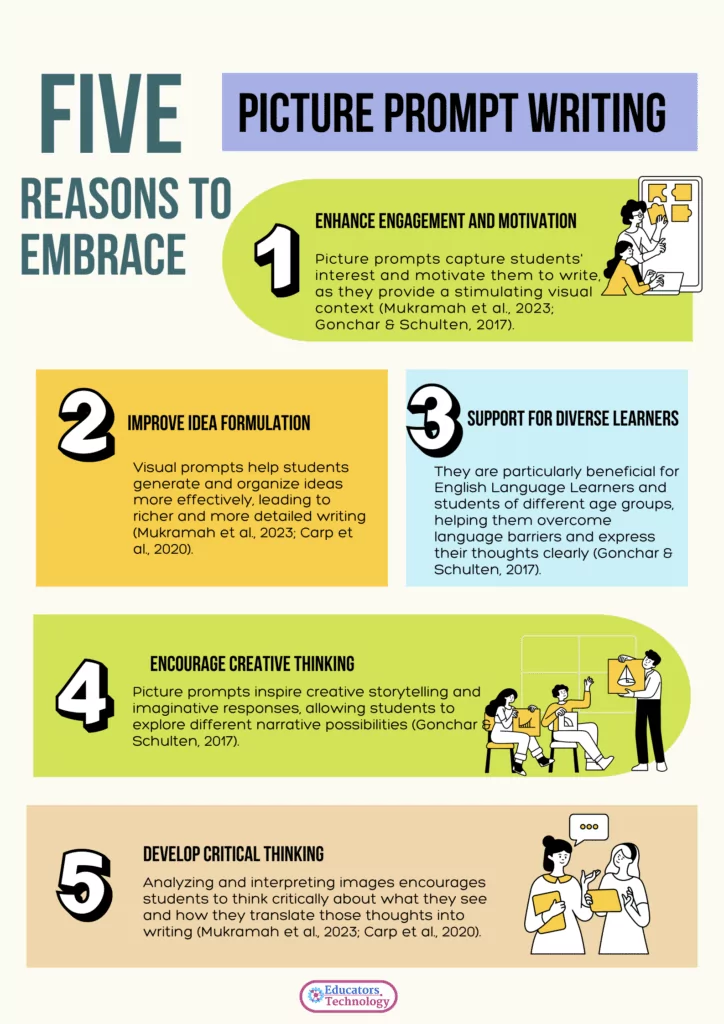
Tips for Using Picture Prompts in Writing
Using picture prompts in writing activities can be incredibly effective in enhancing students’ creativity and writing skills. However, to maximize their benefits, it’s essential to implement them thoughtfully. Below are some tips to help educators effectively use picture prompts in their writing lessons. These suggestions are designed to engage students, stimulate their imagination, and improve their overall writing abilities, making the writing process both educational and enjoyable.
- Select Diverse Images : Use a variety of pictures, including different subjects and settings, to cater to different interests and stimulate diverse ideas.
- Connect to Writing Goals : Choose images that align with specific writing objectives, such as descriptive, narrative, or persuasive writing.
- Encourage Observation : Ask students to closely observe details in the picture, fostering critical thinking and attention to detail.
- Ask Guiding Questions : Provide prompts like “What is happening in this scene?” or “How do you think the characters feel?”
- Incorporate Group Activities : Use picture prompts for group discussions to generate collaborative story ideas.
- Allow Creative Freedom : Encourage students to interpret the images in unique ways, supporting creativity and individual expression.
- Combine with Other Prompts : Mix picture prompts with text or question prompts to provide more structure and support.
- Use for Various Genres : Adapt picture prompts for different genres, such as poetry, essays, and fiction.
- Reflect and Share : Have students share their stories with peers and reflect on how the images influenced their writing.
- Integrate Technology : Utilize digital platforms to display images and enable students to write and share their responses online.
Using Picture Prompt Writing with Students with Special Needs
Picture prompt writing is also beneficial for students with special needs, particularly those with developmental delays such as autism. The research conducted by Carp et al. (2012) found that picture prompts significantly improved the acquisition of auditory-visual conditional discriminations in children with autism, compared to pointing prompts and trial-and-error learning.
The study showed that picture prompts facilitated faster learning and greater accuracy by enhancing the participants’ ability to discriminate relevant features of the comparison stimuli. This suggests that picture prompts are a valuable tool in teaching complex skills to children with developmental delays, supporting their use in educational programs for individuals with autism.
Additionally, Fisher, Kodak, and Moore (2007) demonstrated that picture prompts facilitated the acquisition of auditory-visual conditional discriminations in children with autism. Their study found that picture prompts were more effective than pointing prompts in promoting correct comparison selections.
Carp et al. also cited additional studies that explored various prompting tactics and their effectiveness in teaching complex skills to individuals with developmental disabilities. These findings underscore the importance of incorporating picture prompts into educational strategies to support the learning and development of students with special needs.
Picture Writing Prompts Examples
In this section, I’ve categorized picture writing prompts into three groups to suit different age levels: kids, middle school, and high school. Each category contains tailored prompts designed to engage students at their respective developmental stages.
For Kids (Elementary School)
In this section, we will explore picture writing prompts designed for elementary school students. These prompts are tailored to engage young minds with topics that are both fun and educational. Whether it’s imagining a day in the life of a lion or describing the wonders of a magical garden, these prompts encourage creativity and help children develop their descriptive writing skills.
1. Animals and Nature
Prompt: “Write a story about a day in the life of a lion in the savannah. What adventures does the lion have? Who are its friends?”

Prompt: “Describe what happens in a magical garden that changes with each season. What do you see, hear, and smell during spring, summer, autumn, and winter?”
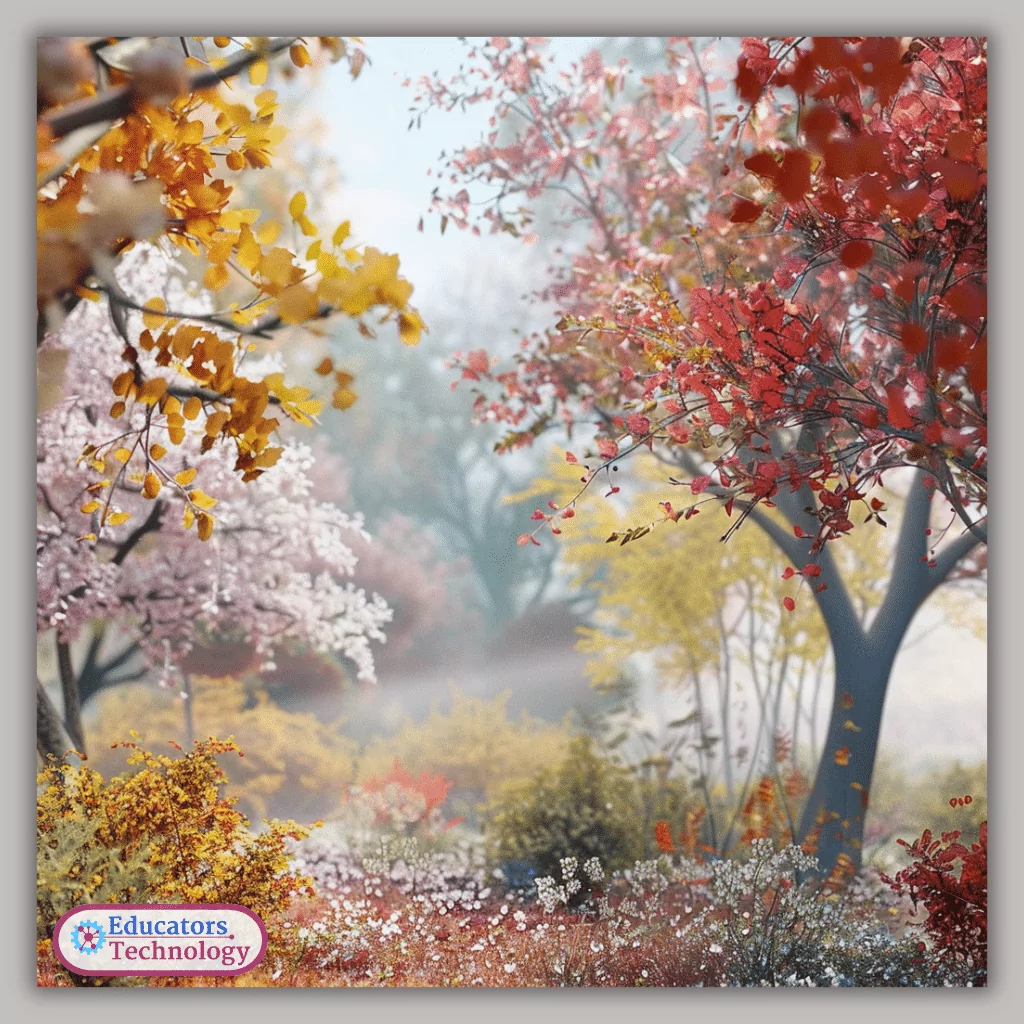
2. Fantasy and Adventure
Prompt: “Imagine you found a dragon egg. Describe what happens when it hatches and the adventures you go on with your dragon.”

Prompt: “Write about a group of friends who find a treasure map and go on a pirate adventure to find the hidden treasure.”
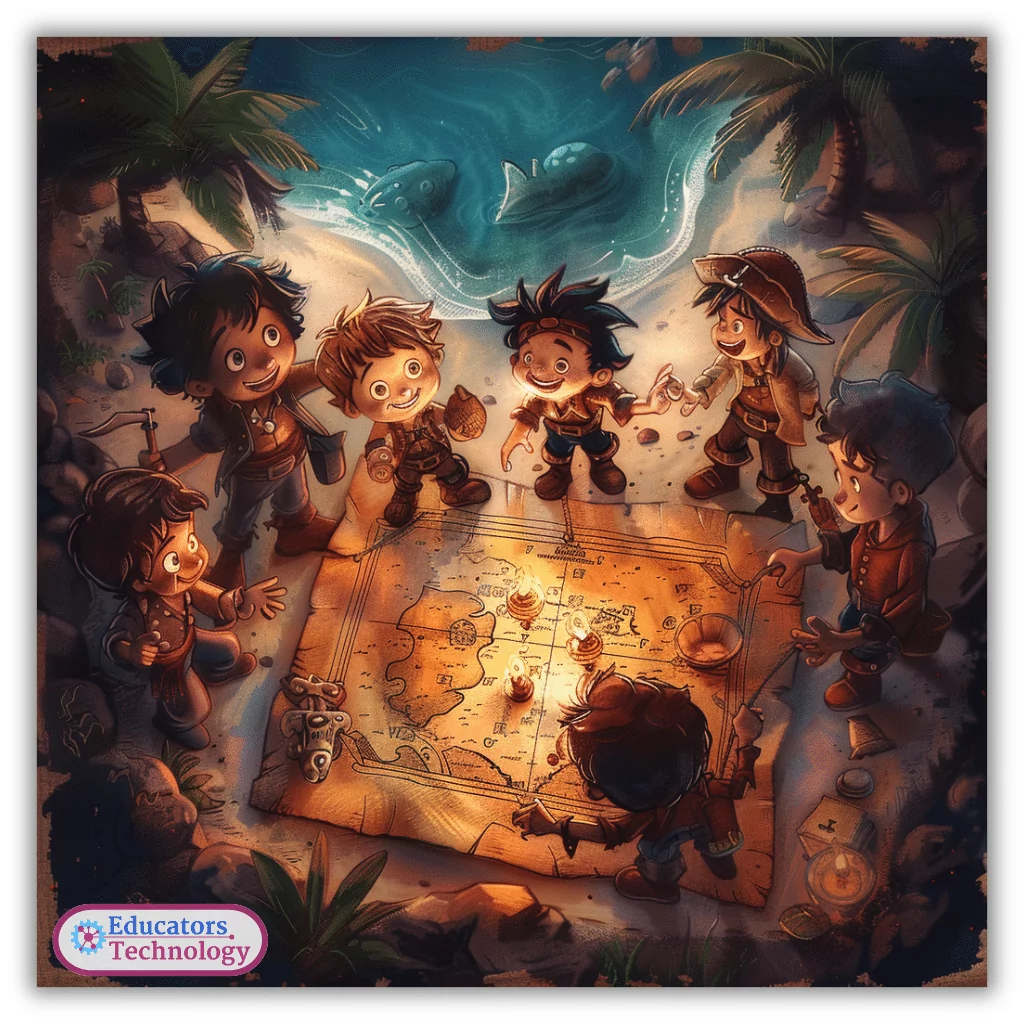
3. Daily Life
Prompt: “Describe a fun day at the park with your friends. What games do you play? What do you see around you?”
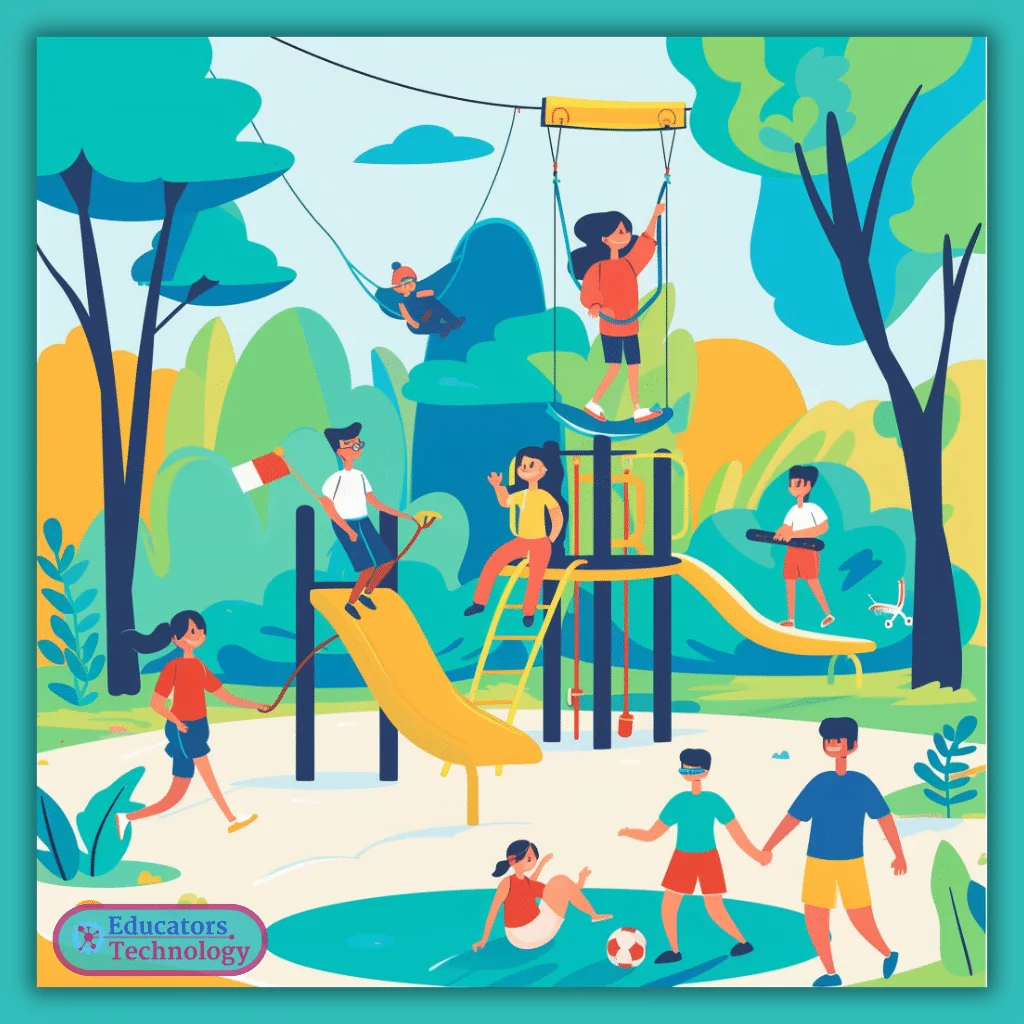
Prompt: “Write a story about your family cooking dinner together. What do you make, and how do you all help?”

4. Holidays and Celebrations
Prompt: “Write about the most exciting Halloween night you can imagine. What costumes do people wear? What surprises do you find?”
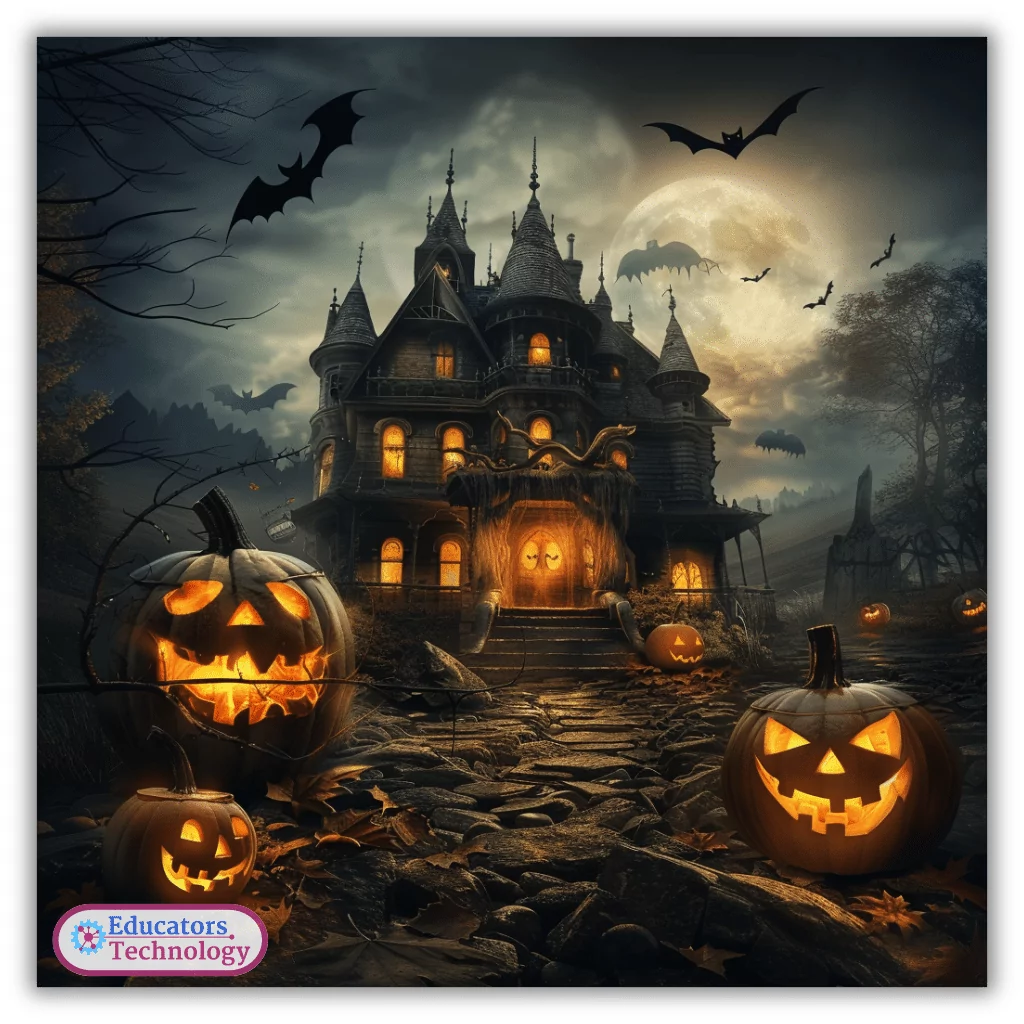
Prompt: “Describe a special family tradition during Christmas. What activities do you do together? How does it make you feel?”

5. Community and Helpers
Prompt: “Imagine you spent a day with a firefighter. Describe the different tasks you help with and how you save the day.”
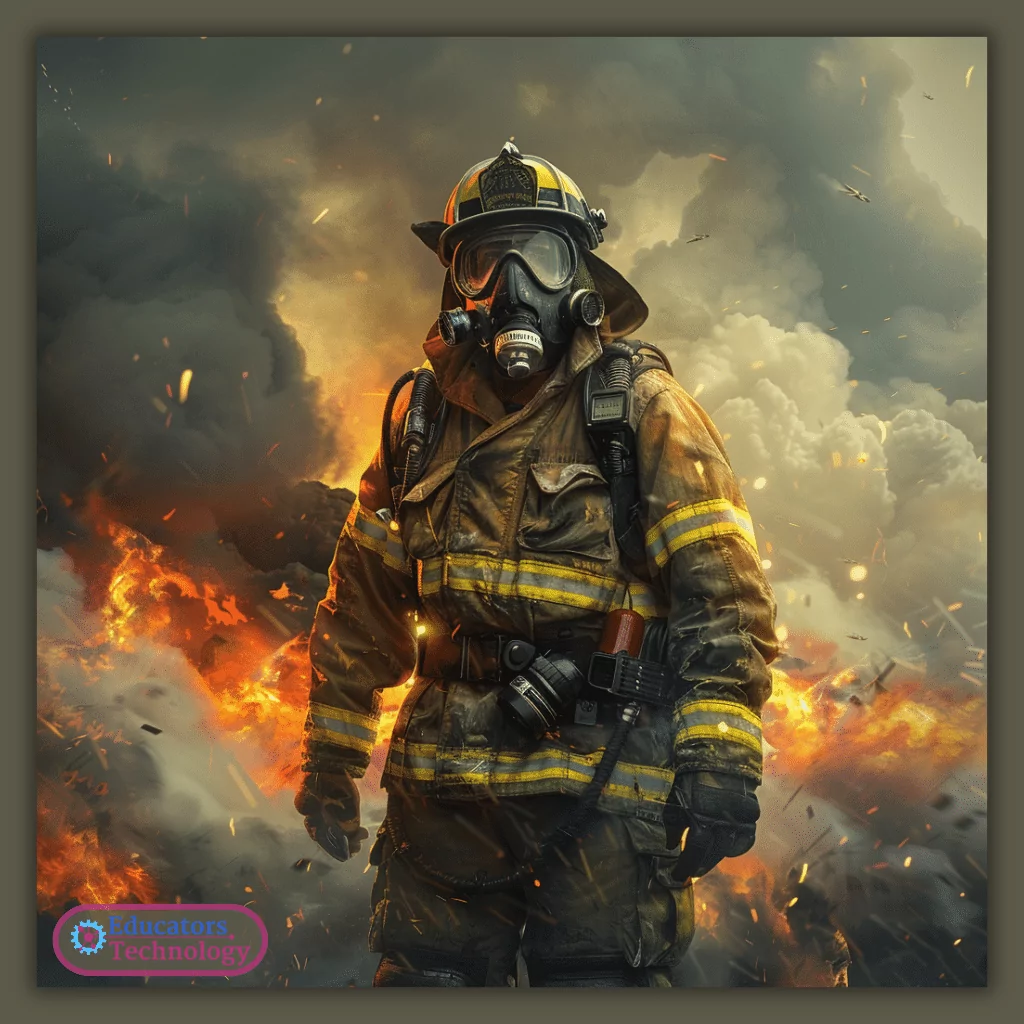
Prompt: “Write a story about a community event like a parade or fair. What different activities and people do you see?”

For Middle School
Middle school is a time of expanding horizons and growing curiosity. This section focuses on picture writing prompts that challenge students to think critically and creatively. From historical events to futuristic cities, these prompts are designed to foster deeper thinking and help students make connections between their writing and the world around them.
1. Historical Events
Prompt: “Imagine you are a reporter covering the moon landing. Describe the events as you see them unfold and how people react.”

Prompt: “Write a diary entry from the perspective of a child living in ancient Egypt. What is your daily life like?”

2. Science and Technology
Prompt: “Describe a futuristic city where robots help with everyday tasks. How do people live and interact with these robots?”

Prompt: “Write about an environmental project you would start to help reduce pollution in your city.”
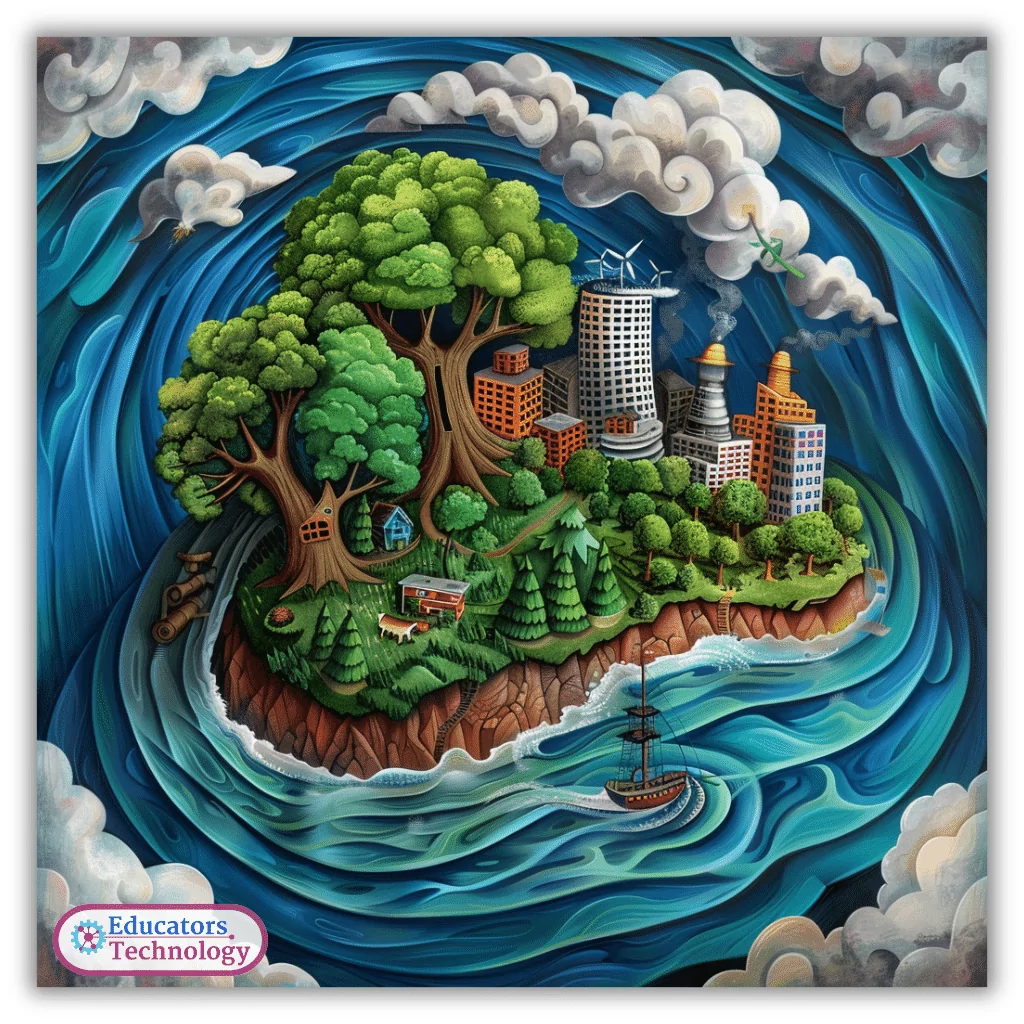
3. Mystery and Suspense
Prompt: “A foggy forest path leads to an abandoned house. Write a story about what you find inside and the mystery you uncover.”
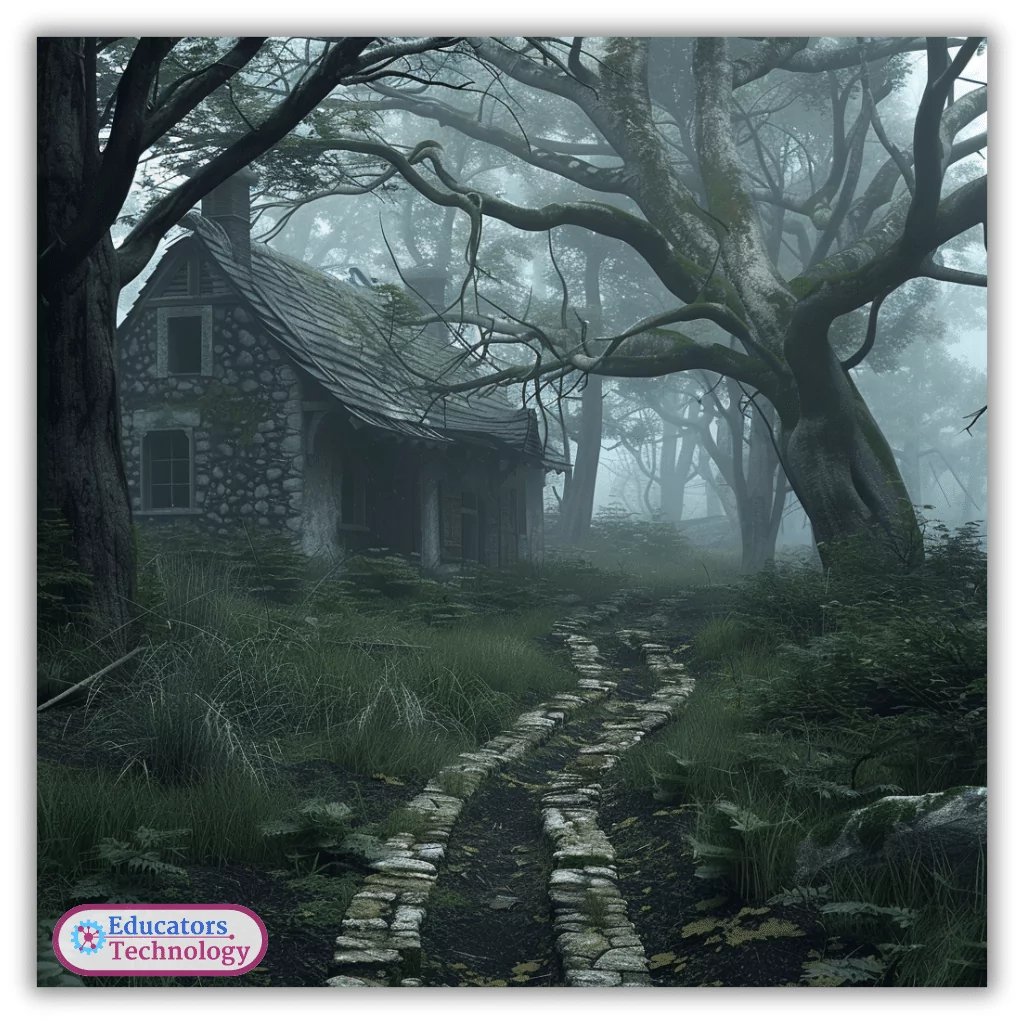
Prompt: “Describe the events of a night when you and your friends decided to explore a rumored haunted house.”
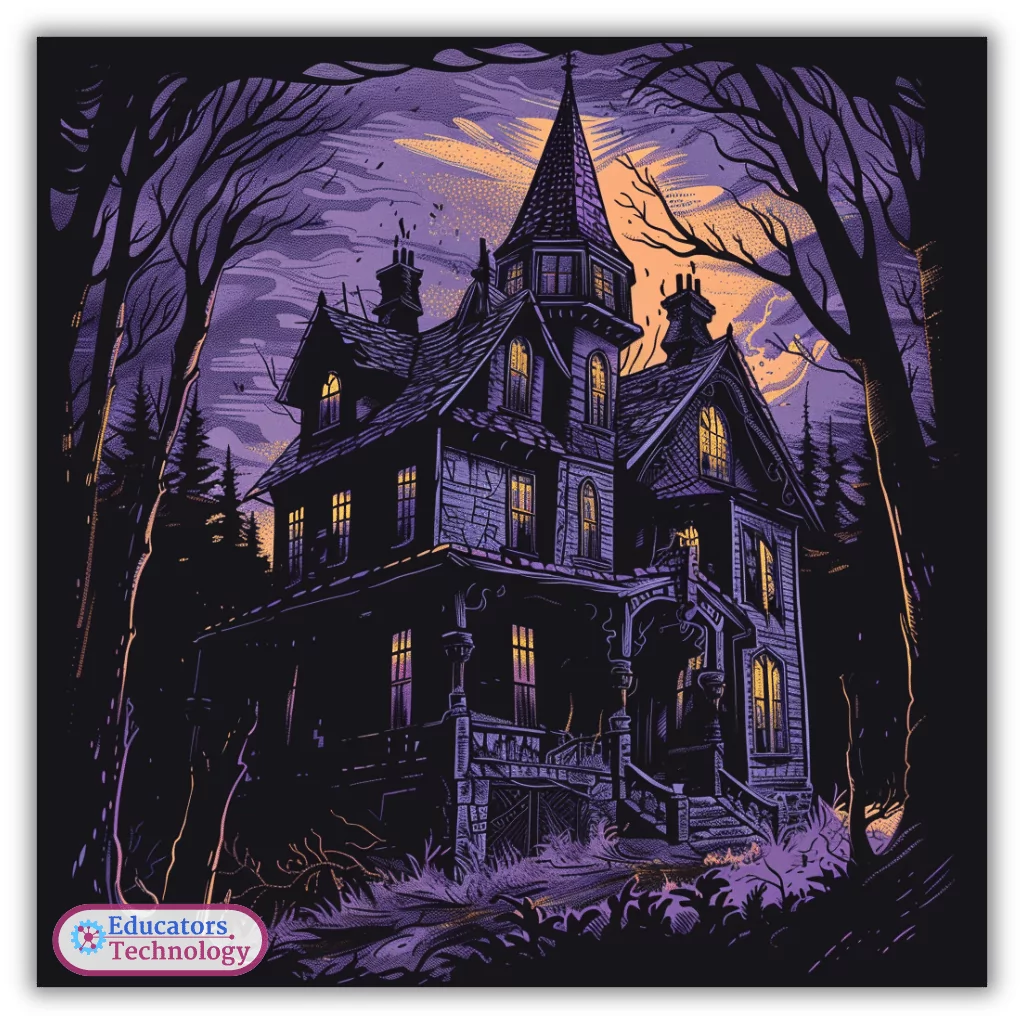
4. Emotions and Relationships
Prompt: “Write about a time when you felt incredibly happy. What caused this happiness, and how did it change your day?”

Prompt: “Describe a friendship that started unexpectedly and became very important to you.”

5. Exploration and Travel
Prompt: “Imagine you are exploring the Great Wall of China. Describe your journey and the sights you see.”
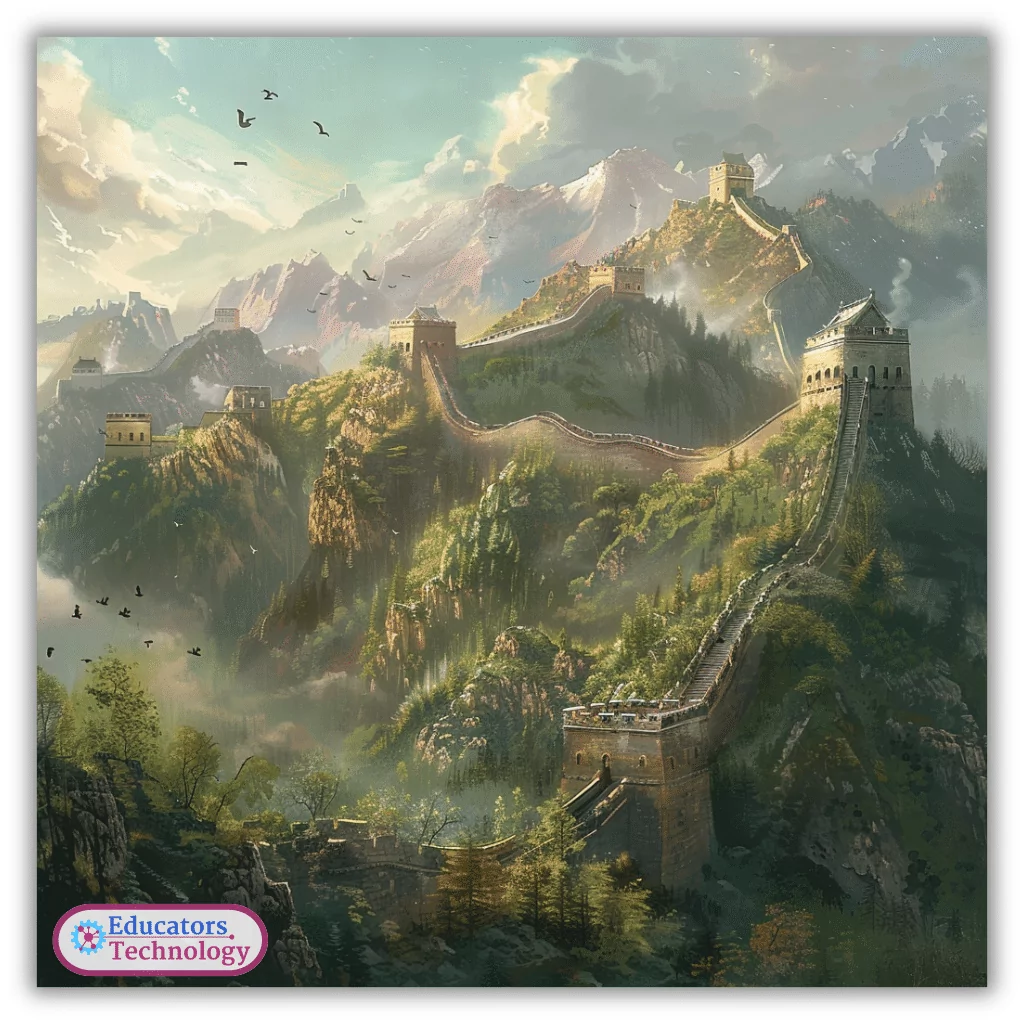
Prompt: “Write a story about a scuba diving adventure where you discover a hidden underwater city.”

For High School
High school students are ready to tackle more complex and abstract themes in their writing. In this section, we provide picture writing prompts that encourage them to explore social issues, abstract concepts, and literary inspirations. These prompts are intended to provoke thoughtful responses and help students develop their analytical and expressive abilities.
1. Social Issues
Prompt: “Write an essay on the impact of climate change on your community. What changes have you observed, and what solutions do you propose?”

Prompt: “Describe a protest you attended or would like to attend. What is the cause, and what do you hope to achieve?”

2. Abstract and Symbolic
Prompt: “Look at an abstract painting and describe what it represents to you. How does it make you feel, and what do you think the artist was trying to convey?”
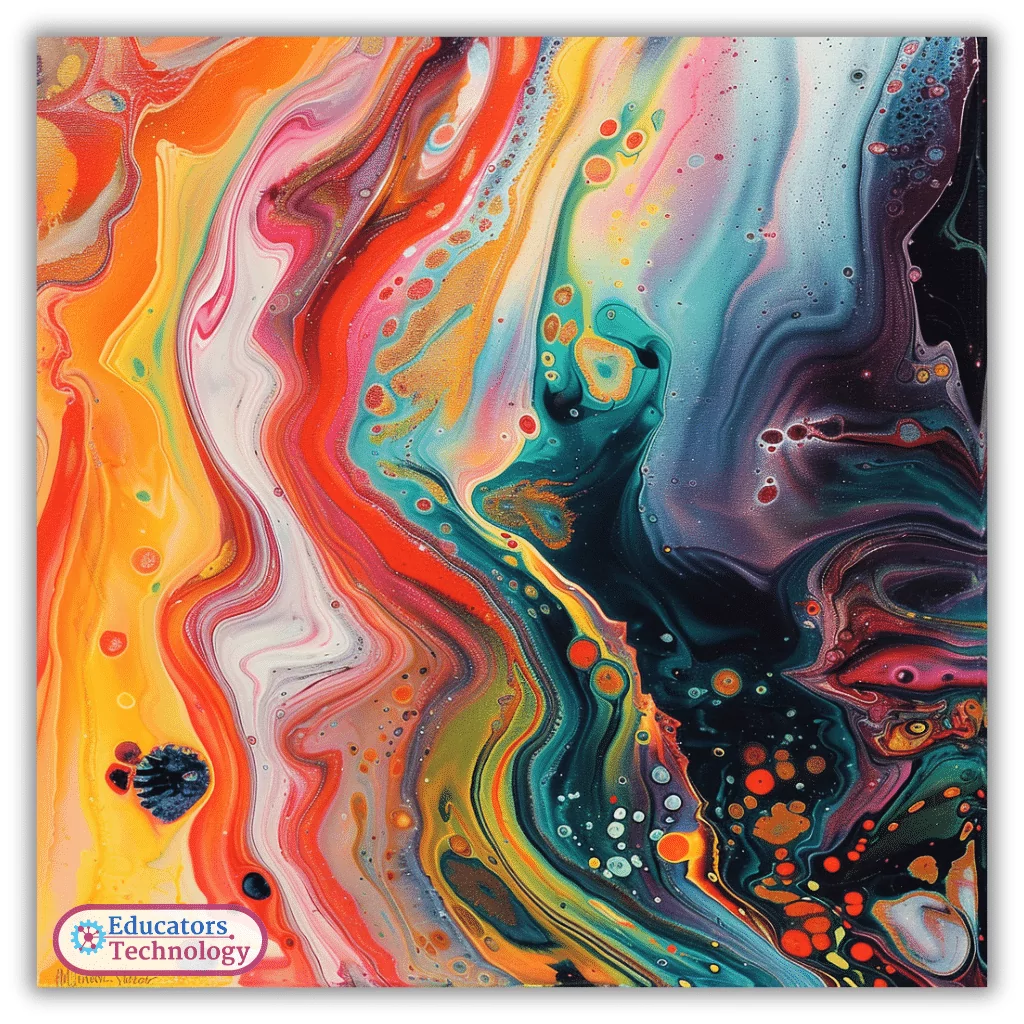
Prompt: “Write a story inspired by a symbolic image, such as a broken chain or a lone tree in a vast field.”
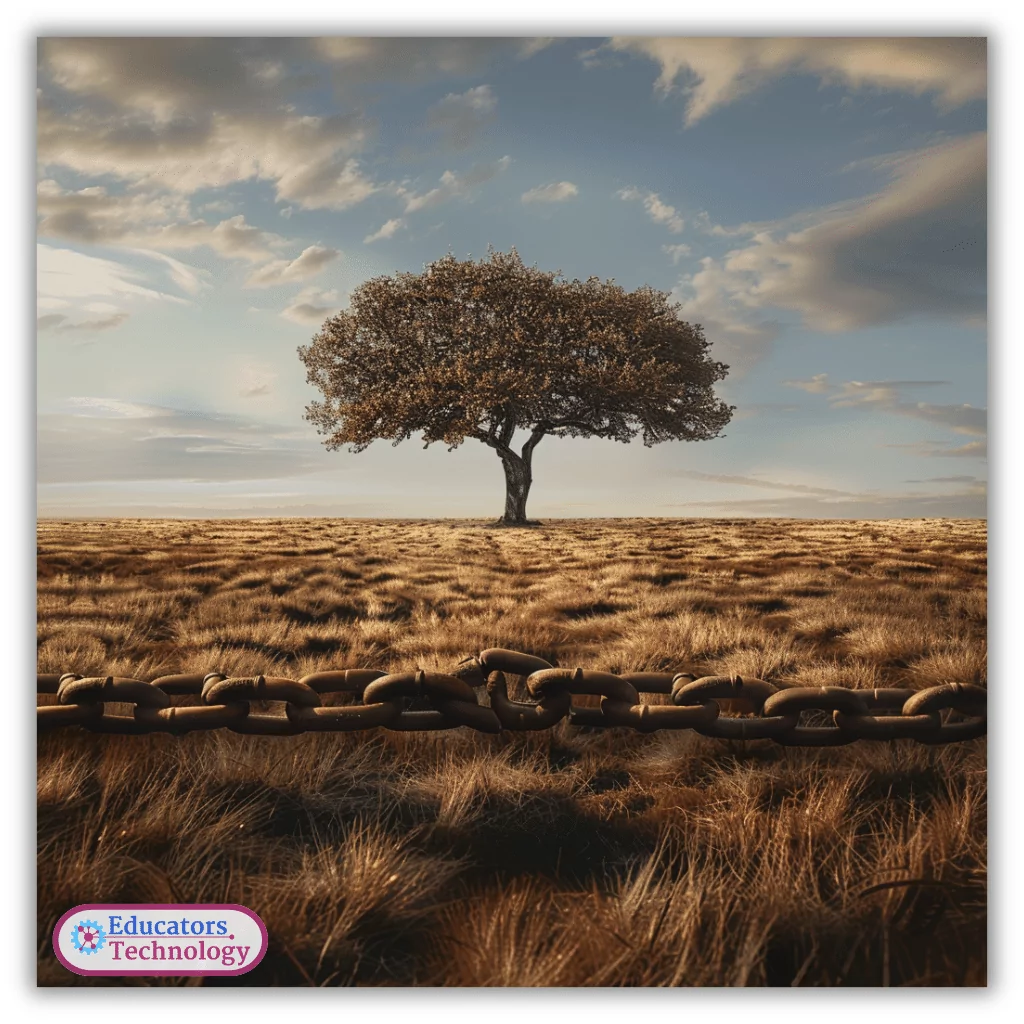
3. Literary Inspiration
Prompt: “Imagine you are a character in a classic novel like ‘Pride and Prejudice’ or ‘To Kill a Mockingbird.’ Write a new scene that fits into the story.”
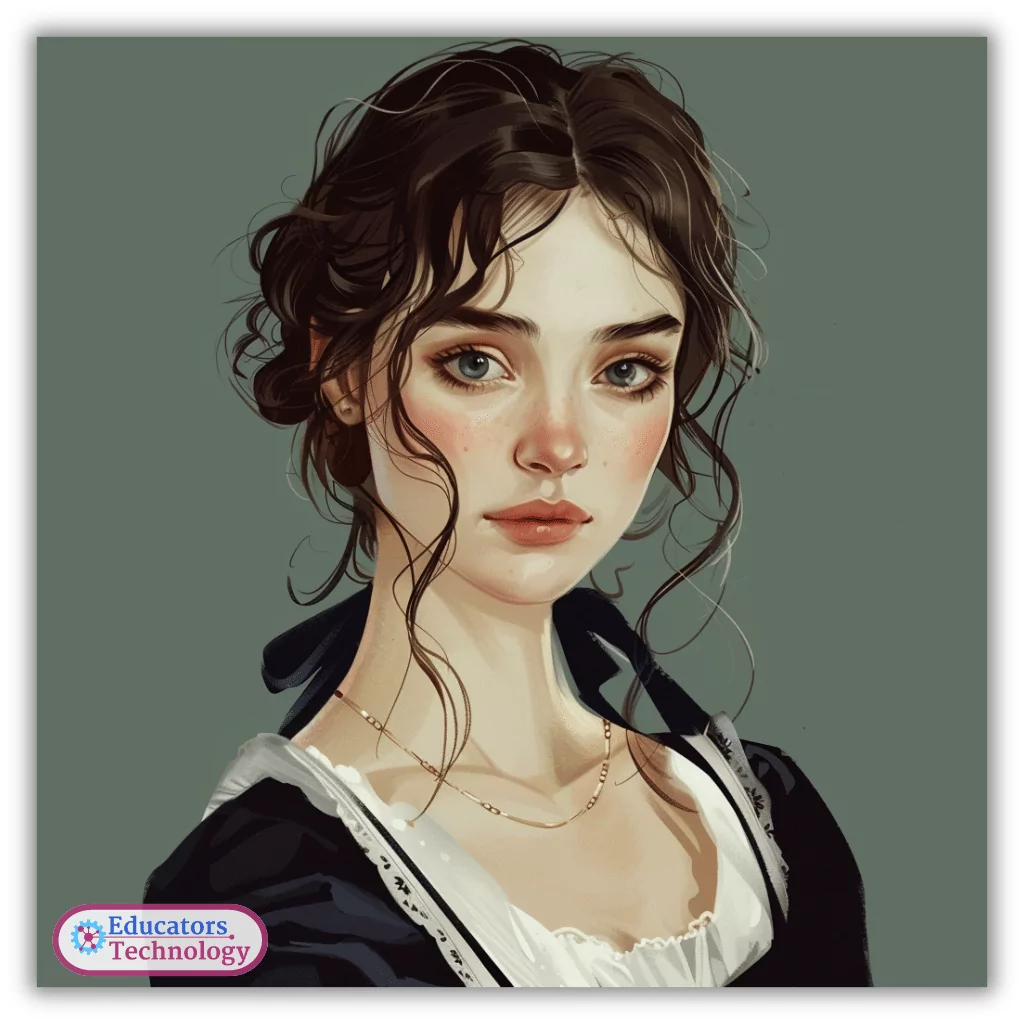
Prompt: “Describe a painting from the Renaissance era and create a story based on the characters and setting.”
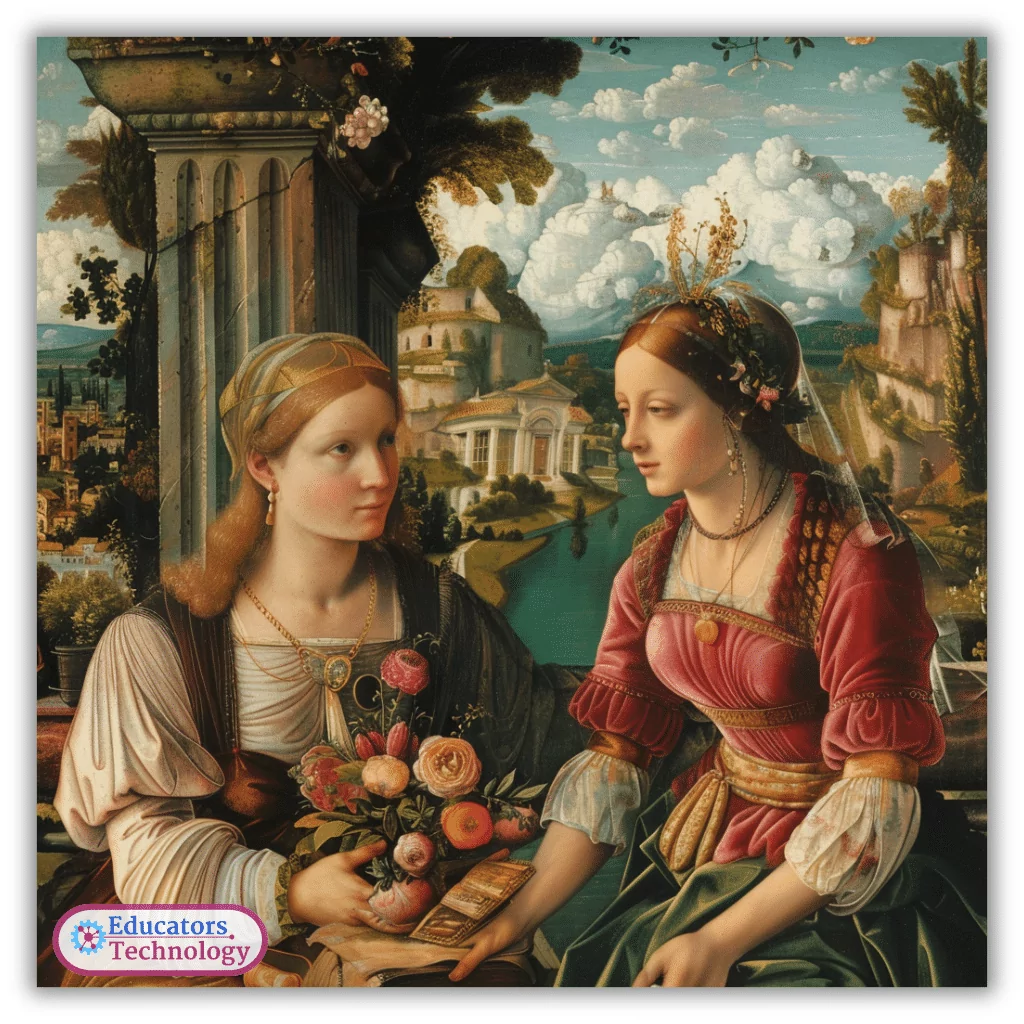
4. Career and Future
Prompt: “Write a day in the life of your dream job. What tasks do you perform, and what challenges do you face?”
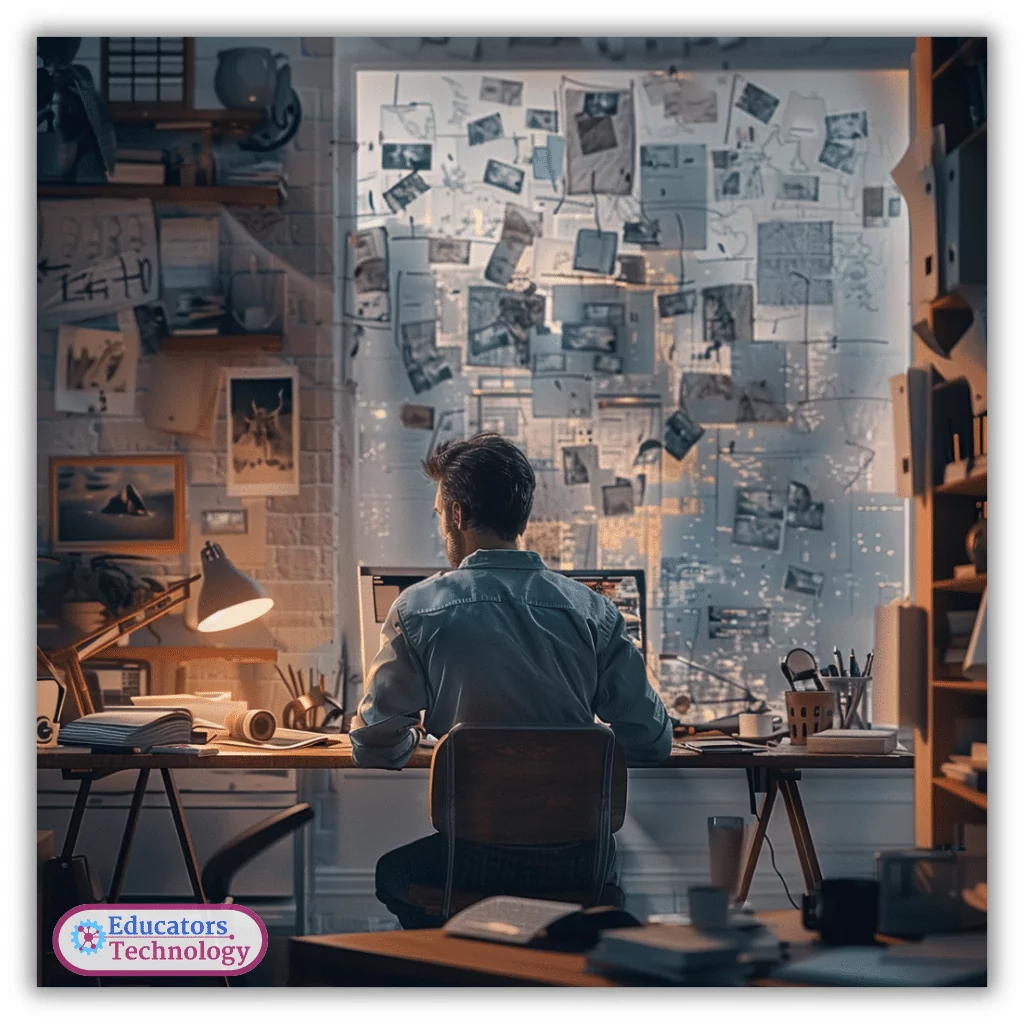
Prompt: “Describe your first day at college. How do you feel, what do you do, and who do you meet?”

5. Cultural Diversity
Prompt: “Describe a cultural festival you attended. What traditions did you observe, and what did you learn?”

Prompt: “Write a story about a family from a different culture moving to your town. How do they adapt, and what do they teach you?”
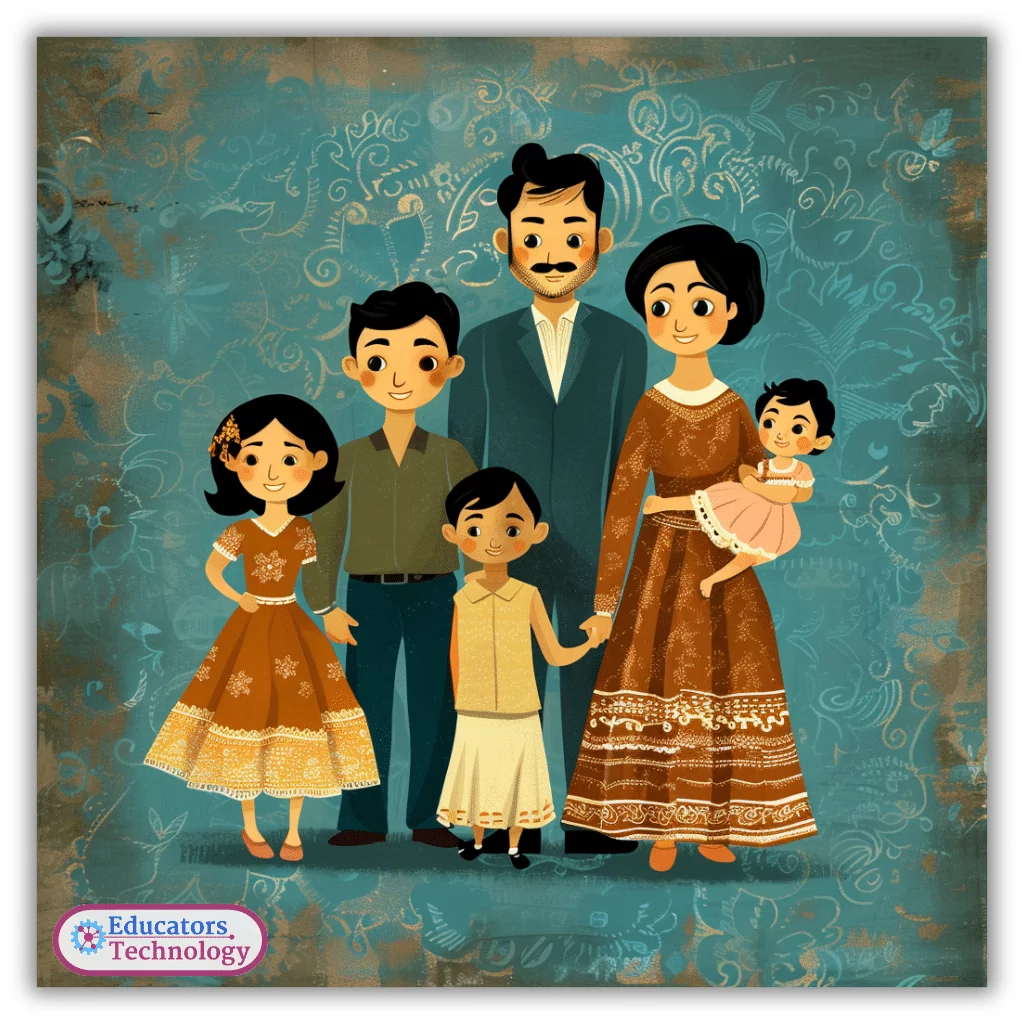
Related: 9 Great Books on Essay Writing
Final thoughts
In this post, I talked about picture writing prompts and covered their importance, practical tips for using them, their benefits, and examples to get you started. Picture prompts are excellent tools for overcoming writer’s block and enhancing students’ creativity and writing skills. I hope these insights and strategies will inspire you to incorporate picture prompts into your writing activities. For further reading and a deeper understanding, I encourage you to explore the references provided.
- Carp, C. L., Peterson, S. P., Arkel, A. J., Petursdottir, A. I., & Ingvarsson, E. T. (2012). A further evaluation of picture prompts during auditory-visual conditional discrimination training. Journal of Applied Behavior Analysis , 45 (4), 737–751. https://doi.org/10.1901/jaba.2012.45-737
- Dube, W. V., & McIlvane, W. J. (1999). Reduction of stimulus overselectivity with nonverbal differential observing responses. Journal of Applied Behavior Analysis, 32, 25-33. doi:10.1901/jaba.1999.32-25
- Fisher, W. W., Kodak, T., & Moore, J. W. (2007). Embedding an identity-matching task within a prompting hierarchy to facilitate acquisition of conditional discriminations in children with autism. Journal of Applied Behavior Analysis, 40, 489–499. doi:10.1901/jaba.2007.40-489
- Gonchar, M., & Schulten, K. (2017). A Year of Picture Prompts: Over 160 Images to Inspire Writing. The new York Times. https://www.nytimes.com/2017/06/01/learning/lesson-plans/a-year-of-picture-prompts-over-160-images-to-inspire-writing.html
- Mukramah, C., Mustafa, F., & Sari, D. F. (2023). The Effect of Picture and Text Prompts on Idea Formulation and Organization of Descriptive Text. Indonesian Journal of English Language Teaching and Applied Linguistics, 7(2), 325-341
Further Readings on Picture Prompt Writing
If you’re looking to delve deeper into the benefits and applications of picture prompts in writing, here are some valuable resources:
- “5 Reasons to Use Pictures as Writing Prompts” by The Write Practice
- “How to Use Images to Inspire Creative Writing” by Edutopia
- “ 144 Picture Prompts to Inspire Student Writing” by The Learning Network

Join our mailing list
Never miss an EdTech beat! Subscribe now for exclusive insights and resources .

Meet Med Kharbach, PhD
Dr. Med Kharbach is an influential voice in the global educational technology landscape, with an extensive background in educational studies and a decade-long experience as a K-12 teacher. Holding a Ph.D. from Mount Saint Vincent University in Halifax, Canada, he brings a unique perspective to the educational world by integrating his profound academic knowledge with his hands-on teaching experience. Dr. Kharbach's academic pursuits encompass curriculum studies, discourse analysis, language learning/teaching, language and identity, emerging literacies, educational technology, and research methodologies. His work has been presented at numerous national and international conferences and published in various esteemed academic journals.

Join our email list for exclusive EdTech content.

- Creative Activities to Develop Writing Skills for Students
by Studentreasures | May. 31, 2024 | Classroom Activities

Creative writing allows students to express themselves and think deeply about different topics. As an educator, you can inspire your students with creative writing activities , which serve as the foundation for writing skills development .
Join us as we explore ways to get your class excited about creative writing and let their imagination run wild. While you are here, don’t miss out on snagging your FREE classbook publishing kit from Studentreasures!
In our article, you’ll learn:
- The benefits of creative writing for students like expanded vocabulary and fine-tuned focus.
- How to use different creative writing types like visual writing and poetry to meet learning goals.
- Storytelling exercises like role-playing and picture prompts help spark creativity.
- Ways to integrate fun writing games like story chains and story cubes can improve student writing skills and foster a positive learning environment.
- How to use writing prompts to show understanding and develop technical writing skills while being creative.
- Ways that students can practice peer review once they produce a piece of writing.
- Feedback techniques that encourage growth
Exploring the Benefits of Creative Writing for Students
The journey of creative writing unlocks numerous benefits for students, enhancing their academic and personal development. It shows how the practice of crafting stories not only refines their writing talent but also strengthens their cognitive abilities in significant ways.
How Creative Writing Enhances Academic Performance
Creative writing tasks help students articulate their views while fostering essential analytical thinking.
In addition, it helps build the following skills:
- Improved understanding
- Expanded vocabulary
- Fine-tuned focus
- Improved discipline
- Enhanced concentration
Blending creativity, critical thinking and language skills greatly improve students’ learning. It underscores the need to integrate creative writing into education and daily learning.
Integrating Creative Writing Activities into the Curriculum
Teaching writing skills involves infusing your curriculum with engaging, educational writing activities.
Creative writing lets students express themselves and use what they’ve learned in fun ways. Here are some creative writing types that help meet different learning goals.
Types of Creative Writing for Elementary Schoolers
- Personal Narrative Essay: Students write about an important life event, sharing their feelings and what they saw.
- Fictional Short Stories: Students make up their own stories, starting from a writing prompt or using their imagination to spark creativity.
- Role Play Writing: Working alone or in groups, students write dialogues or scenes, pretending to be characters from books they’ve read.
- Poetry Exploration: Students experiment with various forms of poetry to express things they care about.
- Visual Writing: Incorporate visual elements such as illustrations, comic strips or storyboards into creative writing activities.
Are you Enjoying this Content?
It is no secret that adding creative writing to your lessons improves writing skills. It helps students think deeply, express themselves and gain confidence. This approach is essential for your students’ academic and personal development.
Aligning Creative Writing with Common Core
In elementary schools, creative writing can align with Common Core Standards by focusing on various aspects of language arts, including writing, reading, speaking and listening.
Writing Standards: The Common Core Writing Standards allow students to engage in various forms of writing. Teachers can provide prompts and activities that encourage students to express themselves creatively while also meeting the specific writing objectives.
Language Standards: Incorporate creative writing activities with language standards like vocabulary acquisition and use, grammar and standard English conventions. Students can practice using descriptive language, figurative language and different sentence structures in their writing, aligning with the Common Core language standards.
Reading Standards: Complement reading instruction with creative writing by encouraging students to analyze and respond to texts through writing.
Speaking and Listening Standards : Creative writing activities can involve opportunities for students to share their writing orally and listen to their peers’ work.
Integration of Knowledge and Ideas: Integrate creative writing with content from other subject areas to create interdisciplinary learning experiences.
By incorporating creative writing activities that align with common core standards, educators can provide students with engaging opportunities to develop their literacy skills, express themselves creatively and meet the learning objectives outlined in the standards.
Fun and Creative Storytelling Exercises

The adventure of storytelling begins with fun and simple activities. These activities help spark creativity in young writers. We encourage you to use these exercises to enhance students’ writing skills and expand their imaginations.
Here’s a look at some fun exercises designed to inspire unique ideas and exciting stories:
- Story Starters: Kicking off a story with a sentence or phrase can lead to amazing adventures. For instance, “As the doors to the forgotten castle creaked open, a mysterious melody played from within…” This prompt helps students dive into new worlds and create detailed stories.
- Picture Prompts: A whimsical drawing or an interesting photo can jumpstart story ideas. Pictures help students think of rich descriptions and exciting plots, making them powerful tools for sparking creative writing.
- Role-Playing Scenarios: Students learn to understand others better when they act out different roles. By giving them characters from different backgrounds or even fantasy worlds, they explore deep character traits and see stories from new perspectives.
These creative writing activities do more than teach language skills; they open up vast worlds of creativity. By including these student writing exercises in your lessons, you highlight the fun and joy of creating imaginative and original stories.

Writing Games to Spark Creativity & Show Understanding
Adding fun writing games to your lessons can boost students’ interest in writing. These activities make learning to write engaging and can help take away any fear of writing by opening up new ways for creative expression.
They turn the classroom into a lively place for learning.
- Story Chain: Pass a notebook around the classroom, each student adds a sentence or two to build a shared story. This game is great for firing up the imagination and improving how students create a story.
- Two-Word Tales: Challenge students to write stories using only two-word sentences. This will help them think carefully about their word choice and sharpen their writing skills.
- Alphabet Story: Have students write a story where each sentence starts with the next letter of the alphabet, beginning with A. This fun challenge helps expand their vocabulary and better their sentence structure.
- Story Cubes: Use story cubes or dice with pictures on each side. Students roll the cubes and use the pictures to inspire them to create a story. They can take turns adding to the story as they roll the cubes.
By regularly including these games in your classroom lessons, you’ll see improvements in how students tell stories. They also encourage teamwork and a bit of friendly competition between students.
Over time, these activities will help your classroom become a positive place for budding writers, making writing fun rather than a tough task.
Using Creative Writing Prompts
Creative writing makes learning fun and effective. The prompts below kick-start creativity and get students excited about creating their unique pieces.
Writing prompts do more than just fill pages; they open up a world of creativity for each student. Prompts show understanding and allow students to enhance their technical writing skills, practice peer review and more.
Choose prompts that are engaging and appropriate for your students’ ages. For younger students, fun prompts like ‘Describe a day in the life of your pet’ or ‘What would happen if you could fly? ‘ work well. Older students might like deeper questions like ‘If you could talk to one historical figure, who would it be and why?’ or ‘Imagine a world without smartphones.’
Balancing creativity with structured review is important. Mix in time for feedback and revisions with the creative tasks. Writing prompts help students generate creative ideas while also building writing skills.
Here are some ways to use prompts in your classes:
- Start each class with a short writing prompt to get those creative juices flowing.
- Connect prompts to your current lessons to help reinforce what you’re teaching.
- Mix up the types of writing and topics to keep things interesting.
Writing Prompts to Try with Your Class
- Write a letter about a character from your favorite book.
- Describe a place you’ve never visited as if you are there right now.
- Invent a story about a surprising friendship between two very different characters.
- Write a story about a magical creature that you discover in your backyard. What does the creature look like, and what adventures do you have together?
- Imagine you find a mysterious treasure map. Where does it lead and what obstacles do you face?
- Write a poem about your favorite season. What do you see, hear, smell and feel during that time of year?
The Importance of Peer Review for Enhancing Writing Skills
After your students produce their writing, it is time to move into the next step of the writing process. Peer review.
Peer review is a key element in the writing process. It allows students to critique each other’s work, leading to greater understanding and fostering constructive dialogue.
Let’s explore how to effectively organize peer review workshops and implement successful feedback strategies in your classroom.
Setting Up Successful Peer Review Workshops
Organizing impactful peer review sessions in the classroom involves more than just pairing students.
Here’s a detailed plan for setting up these workshops:
- Set Clear Goals: Define what you want your students to gain from the peer review. This might be better argument skills or smoother storytelling.
- Create a Supportive Environment: Building a classroom atmosphere where trust and respect are fundamental is essential. Make sure students see this process as a way to improve.
- Use Structured Feedback Forms: Providing students with structured feedback forms helps keep their reviews focused and thorough.
- Practice Role-Switching: Let students take turns being the reviewer and the one being reviewed. This helps them understand both sides of the feedback process.
- Encourage Group Discussions: Bring students together for group discussions after individual reviews. This allows them to share different views and deepen their analysis.
Feedback Techniques That Encourage Growth
Feedback in writing skill development must foster confidence and pinpoint improvement areas.
Adopt these methods for constructive feedback in the classroom:
- Start with the Positives : Begin feedback sessions by acknowledging the student’s strengths. This motivates and sets a welcoming atmosphere.
- Focus on Specifics : Avoid vague comments by pinpointing exact aspects of the writing that can be improved. The little details make a big difference for students.
- Encourage Constructive Language: Teach students to frame their critiques in positive terms. Transform “don’t do this” into “consider trying this.”
- Promote Reflective Thinking : Encourage writers to think about the feedback they’ve received. This helps them plan their revisions effectively, solidifying their learning.
Organizing thoughtful peer review sessions and adopting supportive feedback tactics enables your students to improve their writing skills.
Studentreasures: Fostering Creative Growth in Elementary Students
Teachers like you can create an environment where imagination and academic growth flourish through diverse creative writing exercises.
Incorporating writing prompts, games and group activities into your lessons makes learning exciting. This approach turns the development of writing skills into an engaging and meaningful way to interact with language.
At Studentreasures , we offer educators an incredible opportunity to transform their students into published authors with our FREE classbook publishing kits . With our easy-to-use publishing kits, teachers can offer an exciting writing activity that results in professionally bound books.
Don’t miss the chance to make a lasting impact in your classroom. Your students’ stories are waiting to be told and celebrated—let’s turn them into treasured keepsakes!
Don’t forget to dive into our blog and Teacher’s Lounge for endless creative writing resources and ideas to inspire a lifelong love for writing in your young authors.
See All Blogs
- By Studentreasures
We provide teachers and schools with a FREE hands-on writing activity that motivates students to write and inspires students to learn by turning their stories into professionally bound books. Learn More
Resource Center
- Teacher Guides & Storyboards
- Replacement Kit Materials
- Share the Fun
- Writing Tips for the Perfect Book
- Lesson Plans & Writing Worksheets
Recent Posts
- Unleashing the Power of Words: Vocabulary Building Activities for Elementary Classrooms
- Creative Storytelling Writing Activities for Elementary Classrooms
- Create Your Own Comic Strip: A Fun Writing Activity for Kids
- Make Learning Fun with Interactive Writing Games for Elementary Students
ORDER YOUR FREE PUBLISHING KIT

Order Your Free Publishing Kit

Social Media Automation: 8 Time-Saving Tools for 2024
Social media automation uses tools or software to manage repetitive tasks, like posting content or producing reports, without manual labor.

What Are Social Media KPIs? 25 Examples + How to Track Them
Setting smart social media KPIs will help your team focus on the metrics that really matter and track performance over time.

Experiment: How Many Instagram Stories Should You Post?
Which earns more reach: a single Instagram Story per day or many Stories per day? Is there even a “right” number of daily Stories to post?

Instagram Automation: What You Should Automate + Tools [2024]
Learn about legitimate Instagram automation strategies and save time automating routine daily tasks, without resorting to fake engagement and bots.

71 Social Media Post Templates to Speed Up Your Process
The right social media post template can speed up content creation, saving time while ensuring posts are on-brand and effective.

Facebook Automation: What You Can Automate + Tools [2024]
Facebook automations handle the tedious maintenance of your brand’s Facebook page more efficiently, so you can focus on the big picture stuff.

The Unbiased Guide to Meta Blueprint Certification in 2024
Meta Blueprint (f.k.a. Facebook Blueprint) online courses help you quickly learn new skills, but it’s not your only marketing education option.

Instagram Subscriptions: How To Monetize Your Account in 2024
Instagram subscriptions can be a great way for creators to earn money from their Instagram accounts. We’ll teach you how to use this feature.

How to Get Verified on Instagram in 2024
Want to know how to get verified on Instagram? You can either follow the traditional application process or pay for Meta Verified.
Become a better social marketer.
Get expert social media advice delivered straight to your inbox.
Experiments

Experiment: Where Should Your Instagram Hashtags Go?
Do Instagram hashtags belong in the caption or comments? Does hashtag location even matter? Time to put on our lab coats and start testing.

Experiment: Do Long-Form X Posts Give You More Reach?
What gives you better reach on X: a good old-fashioned tweet thread or one long-form post? Here’s what we found.

Experiment: Do Longer LinkedIn Comments Drive More Connection Requests?
Does being original on LinkedIn generate faster growth? Here’s a thrilling social experiment that answers the question.

Experiment: What Happens When AI Plans Your Entire Social Strategy?
Is AI really coming for your job? We decided to find out.
Hootsuite HQ

Hootsuite CEO Reveals How Long She Spends on Social Media Every Morning
Irina Novoselsky, Hootsuite CEO, shares how she has found her niche as a social CEO at Collision 2023—and much more.

The Story Behind Hootsuite’s ‘Proud Mamas’ Mother’s Day Tribute
Hootsuite social media manager Trish Riswick’s tribute to her mom for supporting her career (even when she doesn’t always understand it).

Creative Block Is Inevitable—Here’s How Our Social Team Beats It
All out of social media ideas? We know the feeling. Discover how to overcome creative block with these 9 tips from our in-house experts.
Meet Irina Novoselsky, Hootsuite’s new CEO
Irina Novoselsky shares her thoughts on why she’s excited to join the Hootsuite team as Chief Executive Officer.


Inclusion is Innovation
Stories behind the innovation.

Freedom in self-expression
Emerging from a journey of self-discovery and embracing their nonbinary identity, Caroline Scalley, senior business administrator at Microsoft, embodies resilience. Drawing from their Puerto Rican heritage and love for self-expression, Caroline blends humor with originality and compassion in their role, redefining norms through unique understanding.

“You are enough. You wouldn’t be here if someone here didn’t think you were incredible.”
Raised with values rooted in her Japanese heritage, Megumi Voight found solace in community during deployments while in the military. Now as a managing editor of customer storytelling at Microsoft, she empowers global voices, advocating for authenticity and reminding others of their inherent worth.

Utilizing your superpower
Armed with what he calls “super empathy,” Joao Madureira, principal customer reliability engineer at Microsoft, harnesses inclusivity as his strength. As a gay man and a Latino, he activates allyship in the workplace, ensuring all voices are heard. His actions have not only brought in new talent but also propelled inclusivity forward.

Near and dear
Keepsakes that get passed through generations of a connected family can unlock hidden characteristics of our colleagues. Cynthia Bryant presents us with some of hers that showcase her mom’s creativity and how she encourages herself to fly.

Dismantling the stereotype
Empowered to explore their gender expression fully while working from home, Iain Raleigh, a software engineer at Microsoft, felt supported when it was time to work in an office again. To dismantle the idea of what a software engineer should look like, they advocate for each one of us showing up as our full selves.

“When you know what you’re worth, when you know what you stand for, it changes how you show up.”
Nurtured by the wealth of knowledge found in public libraries, Aleenah Ansari, a product marketing manager at Microsoft, noticed the lack of stories that reflected her experience as a queer Pakistani woman. Determined to bridge this gap, she strives to make technology more accessible through inclusive and authentic storytelling.

“Your uniqueness makes you who you are.”
Inspired by her early love for fantasy and gaming, Christina Parker champions diversity and representation in the gaming industry, explaining the accuracy of portrayals and the importance of players seeing themselves in the virtual worlds they love.

Tosh’s journey through time
There are artifacts in our lives that represent how we connect to the world around us. Tosh Hudson shares how journaling, music, and plants, for him, represent a willingness to release, learn, and grow.

Art of cherishing memories
Sometimes our possessions remind us of our favorite places or home. Athena Chang shares the items that take her back to Taiwan, Prague, and New York.

When innovation and passion collide
Jerome Collins discusses the influence of his father’s guidance, his passion for art and music, and his innovative approach to driving positive change and representation in his professional sphere.

“At the end of the day, I think that’s what people want: to be heard.”
Guided by a gift for listening and a commitment to motherhood, Erin Jagelski shares how she navigated post-maternity challenges and pioneered support networks for parents in the workplace by blending her passion and leadership to foster inclusive environments.
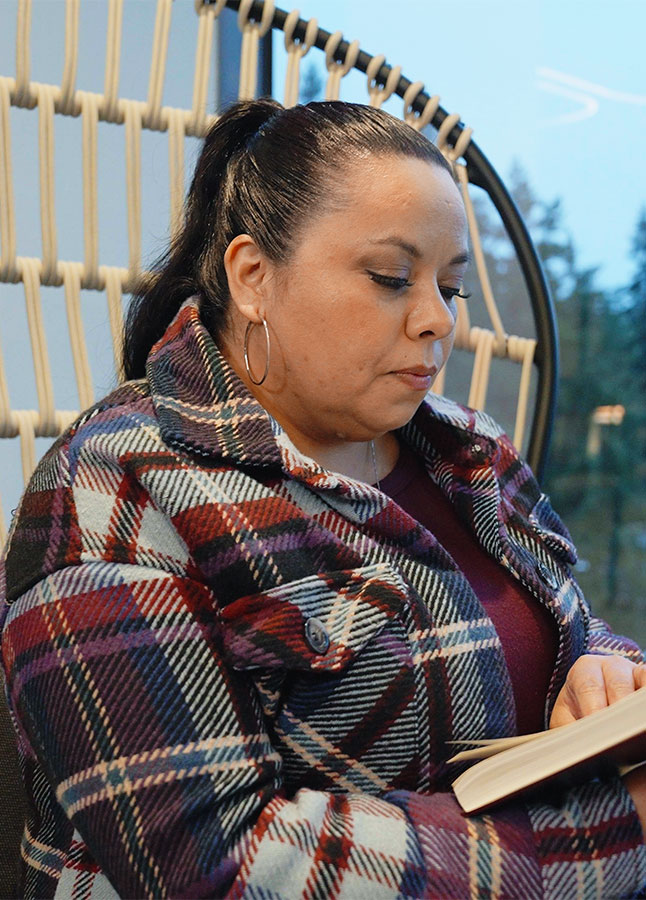
Melissa Curry’s treasures of heritage and achievement
Our possessions showcase the things that really matter to us. Melissa Curry unveils the artifacts that encapsulate her heritage, achievements, and bonds that shape her. Tell us about the artifacts that weave the fabric of your story.

I don’t have the option to be shy
Gonçalo Mendes has always yearned for independence. His journey with cerebral palsy led him from relying on others for care to taking care of others.

Embrace your identity, embrace life
Kimberly Marreros Chuco discusses embracing one’s unique identity and learning from challenges, emphasizing the importance of adaptability and accepting mistakes as part of growth, inspired by her experiences moving from an Andean mining town. Featured Artist: Tai Silva

Ashley Witherspoon Innovator’s Inventory and the big plans she’s made
Our personal treasures hold the stories of who we are. Ashley Witherspoon shares the tangible symbols of her values and journey. What mementos narrate your life’s chapters?
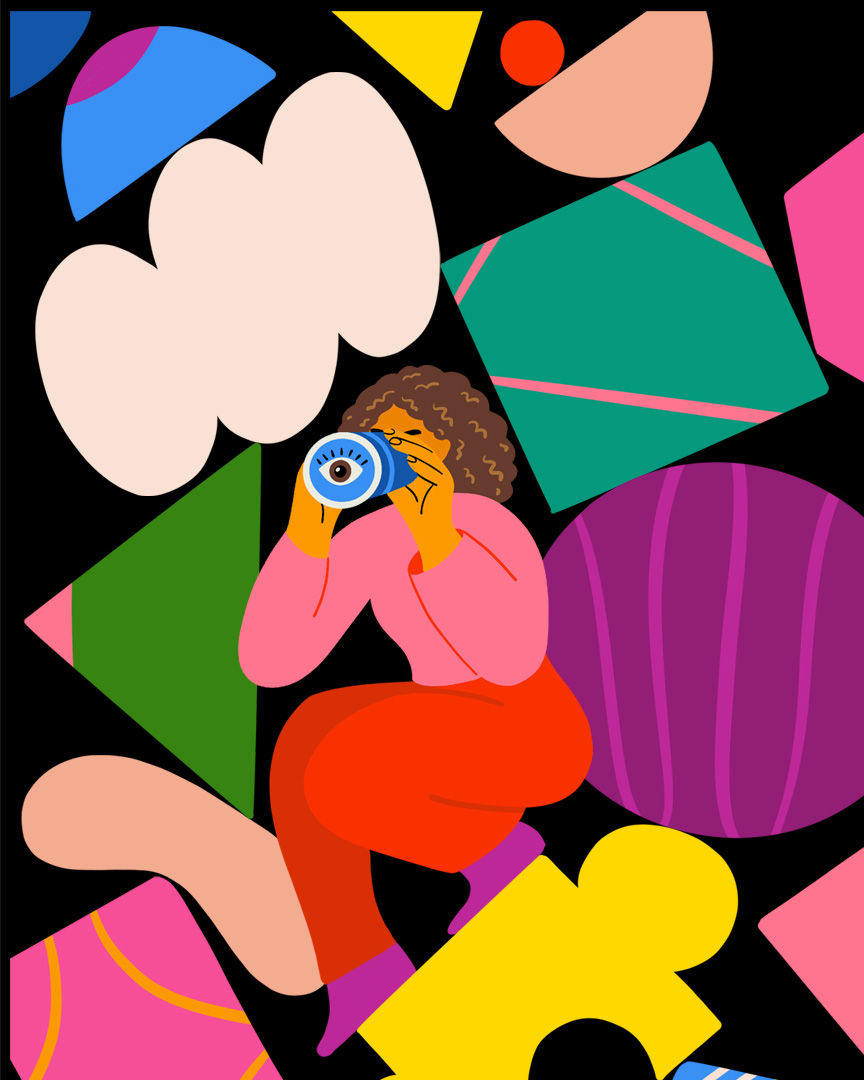
This is my sazón
Ivelisse Capellan Heyer is a user experience designer who uses patience and her family to combat her own self-doubt. Featured Artist: Sol Cotti

Nurturing inner peace
When Ethan Alexander started at Microsoft, he prioritized money over his wellbeing. Twelve years later, the senior customer success account manager and D&I storytelling host knows that the only way to truly take care of others is to first take care of yourself. Discover his story of gratitude and growth. Featured Artist: Camila Abdanur

Master of messiness
As a mom and a tech leader, Elaine Chang has learned to embrace the chaos and put her “octopus mind” to work in service of innovation, at work and at home. Featured Artist: Niege Borges

What leaders look like
Shrivaths Iyengar worried that coworkers would be reluctant to follow a leader who had disabilities. Instead, he discovered that his experiences made him a stronger, more empathetic manager. Featured Artist: Ananya Rao-Middleton

Experiencing both sides
As a child, Ana Sofia Gonzalez crossed between Juárez, Mexico , and El Paso, Texas, every day to go to school. Learning how to live, communicate, and connect in both cultures has made her a better designer, mentor, and innovator. Featured Artist: Dai Ruiz
Real progress requires real work
Innovation demands intention., innovation thrives on insight., innovation requires introspection., innovation calls for investment..

“If there’s a family issue … you have enough grace to be able to take care of it.”
Communities.

LGBTQIA+ communities

Women’s community

Indigenous community

Military community

Black and African American community

Hispanic and Latinx community

Asian & Pacific Islander community

Disability community

Families community
Explore more ways to engage.

Backgrounds
Share this page:.

IMAGES
VIDEO
COMMENTS
5. Read, read, read. It's a lot harder to get the hang of creative writing if you don't have any references from which to draw. Notable writers throughout history have penned excellent examples of well-written creative work that should be required reading for any budding creative writer.
Creative writing isn't just about writing stories. You could write poems, graphic novels, song lyrics and even movie scripts. But there is one thing you'll need and that is good creative writing skills. Here are over 26 tips to improve your creative writing skills: Read a wide range of books; When it comes to creative writing, reading is ...
2. Start journaling your days. Another easy way to get started with creative writing is to keep a journal. We're not talking about an hour-by-hour account of your day, but journaling as a way to express yourself without filters and find your 'voice in writing'. If you're unsure what to journal about, think of any daily experiences that ...
Continuously seek to learn and grow as a writer by attending workshops, reading about writing, and experimenting with new techniques. Remember, improving your creative writing skills takes time and dedication. Patience, persistence, and a willingness to learn are key to becoming a better writer.
Pick up your pen, choose your favorite prompt, and start writing! 10 Creative Writing Tips for Beginners. If you're new to creative writing, here are ten fiction writing tips that you can try. Tip 1: Read Widely. It's hard to become a great musician without having heard a lot of great music. The same is true for writing.
Types of Creative Writing. Examples of creative writing can be found pretty much everywhere. Some forms that you're probably familiar with and already enjoy include: • Fiction (of every genre, from sci-fi to historical dramas to romances) • Film and television scripts. • Songs. • Poetry.
You can always revise and improve later. - Keep a Writing Log: Keep a notebook or digital log of your writing ideas, snippets of dialogue, or interesting observations. This can help you capture ideas as they come and have a resource to refer back to when you need inspiration. - Never Stop Reading: Reading widely is essential for improving your ...
Don't dilute your story with adverb-y sentences — get down to business and tell us what the characters are doing. 15. Get rid of distractions. Yes, this is probably one of the hardest writing tips to follow — especially for those of us who enjoy working from noisy coffee shops and taking frequent Netflix breaks.
6. Show don't tell. To let readers experience your story, show don't tell. Showing means using sensory details and describing actions to direct a mental movie in your reader's mind. Get inspired by these examples of "show, don't tell" …. Show don't tell examples >>. 7. Repetition in writing.
Download Article. 1. Block off time to write every day. Your writing skills will improve with practice. Set aside 20 to 30 minutes (or longer, if you can) to write about anything you want to. Try keeping a journal and writing about your day, or use a notebook to sketch out character ideas and book plots.
Creative Writing Tips from Harvard's Faculty. Claire Messud teaches fiction writing at Harvard. Harvard's English faculty hosts a powerhouse of acclaimed creative writers. As lecturers and ...
Creative writing is writing that uses imagination, creativity, and mastery of the art of writing to evoke emotion in a reader. It could be a fictional story, a nonfiction piece, or movie script, a play, a poem, et cetera. Creative writing oftentimes springs up from experimentation and good, imaginative use of knowledge and ideas.
A creative writer strives to tell unique stories in a distinctive voice. Yet with all the fiction writing already out there in the world, it can be hard to feel that your work is legitimately creative compared to the competition. You could be a first-time writer completing in a high school creative writing course, a hobbyist working on your ...
Here are ten tips to improve your creative writing and save you hours of painful re-writing in the future. (1) Don't underestimate your reader. You have a fantastic plot, your characters are realistic, the setting is ideal and you want to make sure that the reader gets every little detail that you have in mind. Great!
You are bound to experience creative blocks from time to time. Writer's block happens regardless of your level of skill or commitment to the craft. It is typically fueled by issues with motivation or focus. Let's learn how to improve your well-being to reduce the negative impacts on your creative processes. (more…)
1. Find the Best Environment. Photo by Clay Banks / Unsplash. The first of Ruth's top tips is to find the best environment for you. This may be a coffee shop, library, park bench, cafe or in your own home, there is no wrong answers here. Finding the right environment is a personal journey that is well worth exploring!
Jerz > Writing > General Creative Writing Tips [ Poetry | Fiction ] Writing short stories means beginning as close to the climax as possible -- everything else is a distraction. A novel can take a more meandering path, but should still start with a scene that sets the tone for the whole. Jerz's Literacy Weblog (est. 1999)
Here are 16 tips for writing fiction: 1. Love your story. You might have a list of story ideas waiting to be fleshed out, but there's likely one you're most passionate about. Start with that story. Many authors do their best writing when they're deeply invested in their characters and plot. 2.
But it's vital. Learn More: Proofreading: 7 Editing Tips That'll Make You a Better Writer in 2024 will show you how to proofread and edit like a pro. And if you need some tools to help you fix your writing, Grammarly and the Hemingway App are two good grammar checker options. 4. Supercharge Your Subheads.
Our creative writing summer schools give students access to 1:1 personalised tutorials with expert creative writing tutors. To help them unlock their inner potential. This guide will discover practical Creative Writing tips to help you write better and more easily. 1. Hook Readers With Your Character's "Why" At The Very Beginning
Writing skills - creative and narrative writing. Part of English Writing skills. Imaginative or creative writing absorbs readers in an entertaining way. To succeed with this kind of writing you ...
All the picture prompts in this post are available for free download in PNG format. You can easily access and use these resources to enhance your teaching and engage your students in creative writing activities. 1. Animals and Nature. Prompt: "Write a story about a day in the life of a lion in the savannah.
Whether you're taking a break from a work in progress or are in between writing projects and need some inspiration, regular creative writing exercises help you strengthen your writing process. Incorporate these eight exercises into your writing routine. 1. Let your stream of consciousness run. Start with a blank page. Then just start writing.
Creative writing allows students to express themselves and think deeply about different topics. As an educator, you can inspire your students with creative writing activities, which serve as the foundation for writing skills development.. Join us as we explore ways to get your class excited about creative writing and let their imagination run wild.
Try Hootsuite Today for Free! Start Your Free 30-Day Trial. 2,200+ 5-star reviews ★ ★ ★ ★ ★. Hootsuite's social media marketing blog has the latest tools, strategies and insights for X, Facebook, Instagram, and more.
Creative writing is an art that combines imagination, emotion, and narrative techniques to tell stories that captivate readers. With the advent of advanced AI models like ChatGPT GPT-4o, writers ...
Cover Letter Guides Guides, tips, and advice for writing a convincing cover letter that makes you stand out from the crowd. Job Search Advice Tips and hacks for saving time and getting better results in your job search. LinkedIn Guides Learn how to craft the perfect LinkedIn profile. Guides on headlines, summaries, work experience, and more.
Nurturing inner peace. When Ethan Alexander started at Microsoft, he prioritized money over his wellbeing. Twelve years later, the senior customer success account manager and D&I storytelling host knows that the only way to truly take care of others is to first take care of yourself. Discover his story of gratitude and growth.